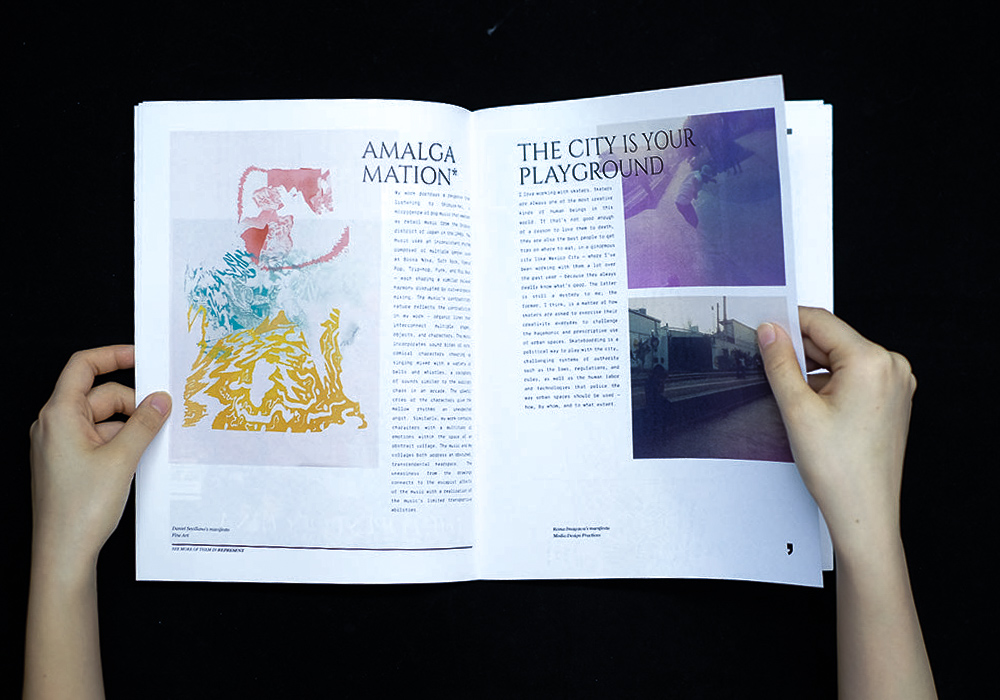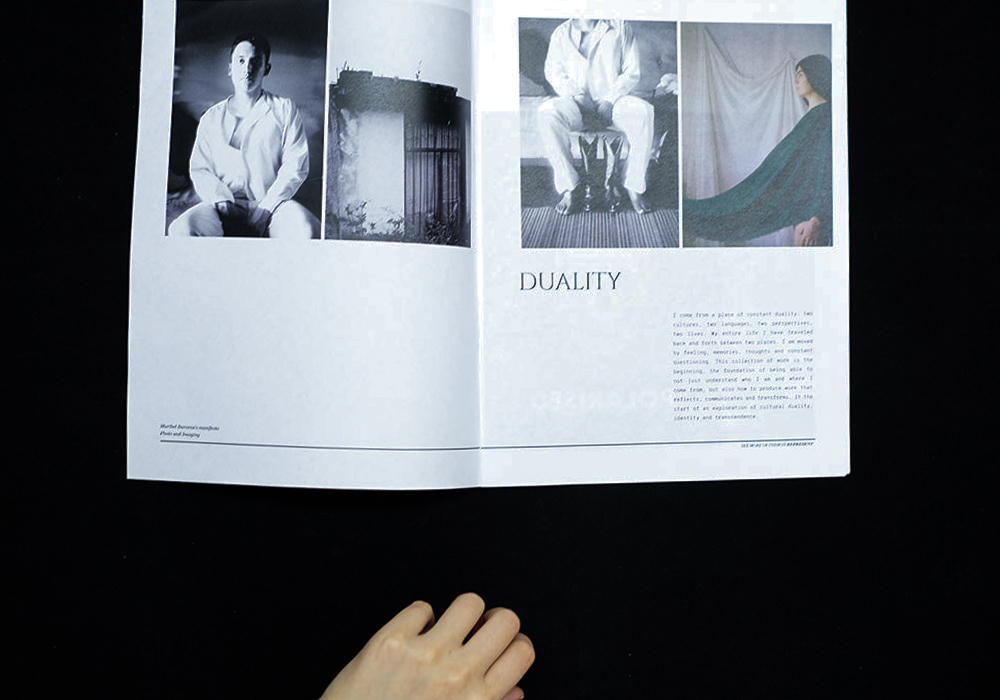Our Stories
Origins
This group grew out of meeting in August 2017 — initiated by MDP faculty Elizabeth Chin — in reaction to the neo-Nazi, KKK and white supremacist rally in Charlottesville, VA on August 12. About 30 Art Center students, faculty, staff, and neighbors attended and shared reactions to the racist tenor of the Charlottesville rally, the broader racist/fascist/misogynistic/xenophobic values of the Trump administration, and the ways this manifests in our daily lives.
The conversation turned to how students of color experience racism at Art Center: interpersonal experiences, comments or actions from other students and faculty; feelings of alienation among students of color; curricula centered around white- and Western-led design and scholarship; an overwhelmingly white faculty body; the college’s weak or nonexistent responses to racialized public events; and the lack of an institutional framework to equip students with a way to safely report racist experiences, receive support, and hold those responsible accountable for their actions.
We started organizing the Antiracist Classroom after this meeting to create a space for students who want to find, create, and engage in opportunities for student activism around issues of racism and white supremacy in the classroom and in design practices.
01
We intentionally focused this group’s lens on antiracism and anti-white supremacy. We acknowledge, though, that the grievances students have raised with respect to race and ethnicity also often apply to and interact with other facets of students’ identities: sexuality, gender, citizenship, language, class and more. That said, our interpretation of race and racism intends to acknowledge that these classifications can hardly be isolated from one another, while directly addressing specific concerns around race for the sake of specificity and in light of the absence of other initiatives that address race directly (while we are aware of other initiatives that address sexuality, gender and the like).
02
Diversity and representation among students, faculty and the professional fields from which Art Center draws and to which students aspire to belong absolutely matter. But, a focus purely on diversity without considering equity doesn’t lead us to address the types of grievances we’ve raised. It also may allow us to (erroneously) conclude that the school has achieved some measure of success with respect to diversity: for instance, Art Center’s student body is relatively more diverse when compared to enrollment at other four-year colleges in the US. The faculty, though, both full- and part-time, are not racially diverse by any standard; but this isn’t surprising or unique to this institution. In a way, the relative diversity of our predominantly non-white student body compared to the overwhelmingly white pool of faculty is particularly symptomatic of the concerns we’re raising here. In the same vein, optional faculty “diversity training” gives the impression of protecting that diverse student body, even when it’s just a symbolic set of hoops they’re expected to jump through for appearances’ sake. Further, these trainings paint racism as an individual moral failing rather than a systemic and ingrained default with no tangible institutional remedy.
03
Art Center’s focus on “diversity and inclusion” obscures the path toward addressing the types of grievances students report with respect to race. It appears that much of the administration’s attention to issues related to race has been framed as a matter of diversity, as evinced by the Chief Diversity Officer job posting, the Diversity and Inclusion Committee, and so forth. Diversity and inclusion are pieces of, but fundamentally different from, racial and ethnic equity. We hear generic talk about “diversity” when, instead, the conversation needs to center on race, ethnicity, gender, sexuality, citizenship or some other specific quality of one’s identity. Choosing not to name those identities or aggressions against them is more comfortable and less disruptive to the prevailing social norms among students and faculty and the institution as a whole. The danger in this is twofold: firstly, it protects the institution from discomfort while leaving students unprotected from continued compounding aggressions. Secondly—and somewhat counterintuitively—by not articulating what differences it’s accounting for, it muddies the realities of students’ intersectionalities and prevents us from acknowledging how those identities are mutually constitutive of one another.
04
What students of color are seeking is—in addition to diversity and inclusion—racial and ethnic equity. Students of color at Art Center desire and deserve a learning environment and academic community free of race-related aggressions, small or large, intentional or unintentional; procedures to air grievances and processes to hold aggressors (whether individuals or the institution) accountable when these aggressions do occur; safe spaces that remind them they belong here. Art Center owns a critical role in creating that environment.
Beyond diversity and inclusion, equity demands an intentional and acknowledged dismantling of white supremacist frameworks that undergird the institution: the curriculum, faculty, administration and policies.
Lauren Williams, MDP 2019
Bianca Nozaki-Nasser, MDP 2018Godiva Veliganilao Reisenbichler, MDP 2018
Our Blog
︎
Other Stories / Our Stories Elsewhere
Poster Series Pays Tribute to African-American Artists, Educators and Authors
Mike Winder
Art Center Dot Magazine
February 28, 2018
Designmatters x Antiracist Classroom
Bianca Nozaki-Nasser & Lauren WilliamsDesignmatters Blog
December 15, 2017
Antoinette Carroll Lecture and Workshop: Graduate Student Perspective
Bianca Nozaki-Nasser & Lauren Williams
Designmatters Blog
November 13, 2017

Introducing ︎ Discussions, Dine-Ins and Design! A 90 min lunch-in with Black creatives from ArtCenter. Hosted by ACSG BLM workgroup 2020 and Antiracist classroom representatives, it is a chance for each guest to talk about their artistic process and narrative within the design industry.
Thank you to our guests:
Victoria Imo (@viimoart)
Minh Williams (@will.design)
Creative Direction by Melissa Fernandez (@glittersparklemelissa)
Graphics by Athena Aquino (@tengakino)
Edited by Sean McLaughlin
Technical Support and Transcript by Lauren Song (@lure.n) and Dana Nugumanova (@dakonta)
2nd Zoom Meeting - How To: Join ACCD Student Tuition Strike (08.23, 6PM)
︎Registration Link1st Community Open Forum (07.16, 6:30-8:00PM)
︎Recording and Chat Link︎Agenda

Updates:
(01/20) - 9 AMThe college has prioritized their DEI Action Plan. The Center for Diversity, Equity and Inclusion held DEI Action Plan Roundtable Discussions in Fall 2020 where students were invited to speak on certain topics.
As BIPOC student organizers, having these repeated conversations over the years is exhausting. We always dedicate our time and energy because these issues are important. Ultimately, it is not our job to design solutions for institutions that are rooted in white supremacy, racism and anti-Blackness.
Moving forward, we will be continuing to push for our demands to be implemented but we will also hold space for community events, opportunities and projects as we have done over the past years.
What that will look like:
- BIPOC Grounding Meditation Hour
- NewsLetter with BIPOC grants/scholarships, residencies and free resources
- Discussions, Dine-Ins and Design: A Lunch-In Podcast
- & More!
How to Get Involved:
- Follow us on social media
- Email us to get on our email listing (antiracistclassroom@gmail.com)
- Participate in events!
Thank you to the students, faculty and staff for the continued support.
JOIN US
Sat. August 22 Protest in front of 1111 at 4PM
Sun. August 23 Zoom Meeting to solidify our tuition strike logistics. (more details to come)
#ACCDwedemand #ACCDracist #antiracistclassroom #ArtCenterWithout #blackatACCD
(07/20) - 7pm
In the past week two emails have been sent out by the DEI office and DEI council responding to @blackataccd. We appreciate acknowledgement but ultimately there has been no commitment to our demands. We want to encourage everyone who is just seeing this account for the first time to look over our demands and sign our petition. For everyone who has been here, thank you for helping us get to 1,000 signatures- we need all that energy to keep showing up while we continue to fight for students rights at ArtCenter.
Follow:
@blackataccd
@antiracistclassroom
@outcenteraccd
@artcenterwithout
(08/15) - 6:30PM
Member’s Statement Upon Stepping Down from Role on the DEI Council
We are sharing the potent statement written by the faculty and staff who stepped down in protest from the DEI Council on August 6th. Our school can never be free from oppression if it continues at every step to exclude, ignore, and erase those working to systematically change ArtCenter. (Via DEI Member’s Statement PDF)
(08/14) - 1:15pm
ArtCenter College of Design President Lorne Buchman has dropped the Diversity, Equity and Inclusion Action Plan. They also dropped the ball.
Executive Cabinet excluded the DEI Council from the Action Plan formation while never instituting any of their proposals, prompted 10 leading members of the council to resign citing a failure of shared governance that Aaron Bruce, Chief Diversity Officer, reassured students weeks ago in a letter (Action Plan Update: Wed, Jul 15) was an integral part of the plans creation. (Via DEI Council Meeting Recording Link)
Not only has shared governance failed but Aaron Bruce admitted in that council meeting that it had been his intention to dissolve the council from the onset of his hiring, showing that the executive leadership of ACCD planned for the shared governance failure in order to consolidate power.
Shared governance began from student sit-ins demanding tuition reduction, and it is of no surprise when there is the largest amount of student organizing on campus since then that administration decides to remove institutional power from faculty and students.
Every one of the 40 initiatives is a failure. It’s self congratulatory on what they are already doing while promising nothing. We reject the DEI Action Plan and will be going on a tuition strike until our demands are met.
#ACCDwedemand #ACCDracist #antiracistclassroom #ArtCenterWithout #blackatACCD
Demands For Systemic Institutional Change at Art Center College of Design
A declaration from the ArtCenter community to the administration of ArtCenter College of Design:
As students investing in art, activism, and antiracist practices across Southern California, we work and live on the occupied homelands of the Tongva-Gabrieleño, Chumash, Serrano, and Tataviam people.
Students, staff, faculty, and even some administrators have challenged the institution to address its white supremacist foundations publicly for decades now. Still, the school refuses to change its oppressive policies, procedures, and operations. Black people, Indigenous people, people of color, women, LGBTQ+ people on campus face bigotry every day that impacts their education and careers.
Within the past decade, we have voiced our concerns (as listed below), had discussions about oppression, and created specific events to deconstruct institutional trauma. Yet the school continues to perpetuate systemic injustices while whitewashing our pedagogy, curriculum, and classrooms. You have implemented ZERO changes that students, faculty, staff and alumni have suggested. ArtCenter administration’s inability to provide effective action through sustainable short- or long-term initiatives shows complacency in dismantling white supremacy, racism and anti-Blackness within the institution.
Here is a list of examples from the past 10 years of student organizing. There are many more, too many in fact to be listed here.
- Kristy Lovichs letter, 2013
- Student Takeover of 870 Raymond Gallery, 2017
- Antiracist Classroom's on-going work
- ArtCenter Without
- Caro Gonzales Letter, 2019
- DEI DesignStorm FA19
- Lauren Williams Student Commencement Speech 2019
- BlackatACCD
We have worked on shared governance committees within the school’s framework for ten years waiting for changes; the evidence shows that the school’s structural policies inhibit implementation of basic anti-racist policy. We have chosen to again publicly address where the school is lacking in providing a competent and affordable education to students of color while actively harming the most marginalized people on campus.
We Publicly DEMAND the Following:
- Make a Commitment to Anti-racist Practices:
- Apply pedagogy of the oppressed to the entire curriculum and policies. Art is global, and framing our education from the Bauhaus model has created a hierarchy that prioritizes the Eurocentric cannon.
- Mandate cultural competency and anti-racism training conducted by an outside company for every person on campus and the trustees.
- Make 25% of each class educate students on the histories of oppression that shape the Design studios, and Humanities and Science courses. (i.e. 2.5 class sessions be allocated towards erased histories, infrastructural or institutional problems that occur within the studio topic.
- Institute a mandatory global history class for all students on colonization, imperialism, sexism, transphobia, poverty, and oppression inside and beyond the art world.
2. Title IX Empowerment and Zero Tolerance Policy:
- Empower Title IX to hold everyone accountable. Fire racist, sexist, homophobic faculty, staff, and administrators immediately.
- Implement a zero tolerance policy for racism and sexism from students, faculty, staff, and administrators.
3. Create an Equitable Environment:
- Diversify the student body, faculty, staff, administration and the board. Focus on recruiting students from Los Angeles and particularly from marginalized communities and level the playing field by providing financial support to students from impoverished backgrounds.
- Hire at minimum 40% BIPOC LGBTQ+ Development Officers to work within each department.
- Make all buildings fully A.D.A. code compliant.
- Discourage toxic all-nighters, hustle mentality and workplace burnout by reducing workload and creating more collaborative projects.
- Each studio class must have a 3-part structure of Critique, Demo and Work Time.
- Mandate inclusion of pronouns and pronunciation of names in student rosters.
- Replace Sodexo—a vendor that profits from the prison industrial complex—with a different food distributor.
4. Land Acknowledgment and Reparations:
- ArtCenter is on stolen land and the wealth of Pasadena was built by enslaved people. (Pasadena Before the Roses: Race, Identity, and Land Use in Southern California, 1771–1890, by Yvette J. Saavedra) Not only should this be taught in the mandatory global history class, but ArtCenter should partner with local tribes on campus projects and create classes on the subject of American Indian art taught by local Native artists.
- Deliver reparations to Black and Indigenous Los Angeles students as scholarships.
5. Affordable Tuition:
- Lower tuition by half with a Tuition Reset; do not subject students to tuition hikes annually.
- Cut pay for all administration leadership and put that money into recruitment, scholarships and living working wages for custodial staff.
- Lower scholarship and financial aid participation requirement GPA to 2.5.
6. Cancel the Master Plan and Restructure It:
- Cancel the Master Plan and make it into a transparent progress report on this list of demands.
- Invest in off-campus housing and affordable meal plans for students.
- Dedicate an entire new building to create a Student Community Center where clubs can meet, students can rest, and students can have enough space to do school work.
7. Dismiss President Lorne Buchman: 10 years of failing to fix ongoing institutional problems and not leading the ArtCenter community to a safe, inclusive, and prosperous education demonstrate that President Buchman is unprepared to lead an effort to transform ArtCenter in the ways its students need and demand.
A failure to meet every demand will result in a publicized tuition strike starting Fall 2020 that will last until every demand is fully and transparently in effect.
Every demand on this list has been made before and is easily doable. Every demand on this list is achievable now. We don’t need any more tone deaf committees, design storms, surveys, workshops or town halls. We all want to design for a beautiful future but it cannot be made without addressing our human rights and reforming our education. Hold yourself accountable by creating the change yourself. For many years, ArtCenter has been given the solutions to make the school a safer place to educate—NOW is the time to implement.
This is addressed specifically to the ArtCenter College of Design Board of Trustees:
Jeffrey Barbakow
Ronald Bennison
Lorne Buchman
Wesley Coleman
Clarence Daniels Jr.
Robert Davidson Jr.
Michelle Gadsden-Williams
Tom Gilmore
Jeffrey Glassman
William Gross
Su Matthews-Hale
Bruce Heavin
Linda Hill
Steven Hitter
Timothy Kobe
Terri Kohl
Melissa Lora
Samuel Mann
David Martin
Peter Mullin
Charles Nearburg
Ivy Ross
Michele Ruiz
Jeff Salazar
Zachary Snyder
Reiner Triltsch
Michael Warsaw
Alyce De Roulet-Williamson
Co-Organized By: Antiracist Classroom, ArtCenter Without, OutCenter and BlackatACCD
Become involved: Sign the petition and follow Antiracist Classroom IG and twitter to keep up to date about next steps.
#ACCDwedemand #ACCDracist #antiracistclassroom #ArtCenterWithout #blackatACCD
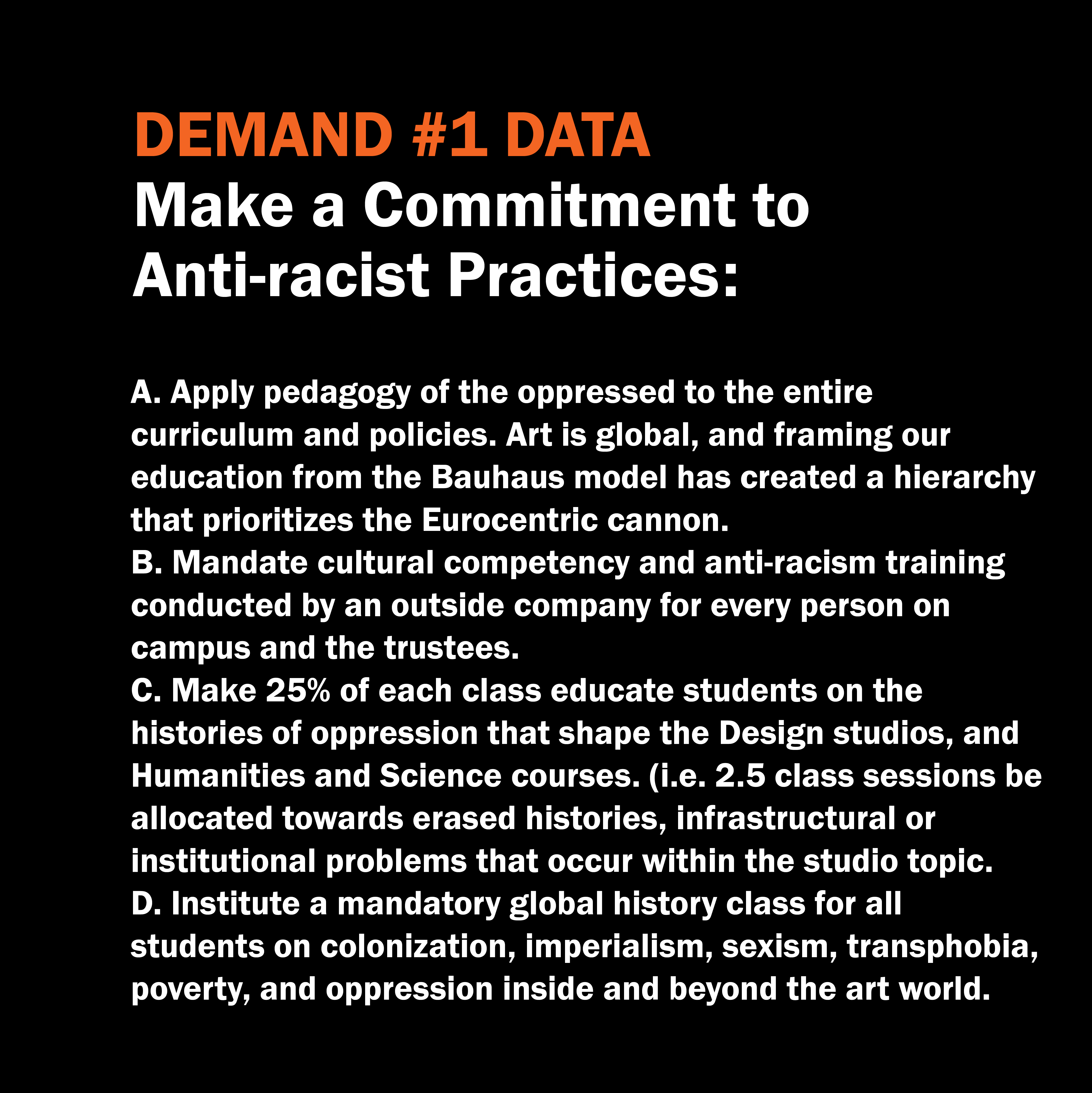

“Pedagogy of the Oppressed is one of the foundational texts in the field of critical pedagogy, which attempts to help students question and challenge domination, and the beliefs and practices that dominate.
First published in Portuguese in 1968, Pedagogy of the Oppressed was translated and published in English in 1970. The methodology of the late Paulo Freire has helped to empower countless impoverished and illiterate people throughout the world.” (Via Zinn Education Project)

(Via Cultural Colonialism and Art Education: Eurocentric and Racist Roots Of Art Education)
Unconscious Bias and Diversity Training
In order to teach art from a global perspective, faculty must be trained for this task, removing cultural biases. There are dozens of high profile companies like The EW Group, Diversity Edu, Executive Diversity Services Inc., PRISM that provide these trainings to workplaces and higher education.
“And yes, it is also true that there is bias at the level of society and culture, in any society and culture, which companies may not be able to change. But leaders must think harder about shaping their own organizational cultures, creating truly ethical, fair, and inclusive environments, and acting as real-life examples of the prosocial and moral values they want to promote in their own organizations." (Via Fast Company)
When our curriculum is built from a Eurocentric perspective, it is easy to miss how much of the contributions to every field has been made by artists and designers on every continent. By acknowledging this fact and committing to building it into every class, then we can finally start teaching a holistic arts education of humanity.
Instead of “teaching about racism,” integrate and interrogate it. Rather than making racism an add-on topic, professors can explore how racism has infiltrated and impacted their disciplines. As expert Valentina Iturbe-LaGrave says, “Exploring how [racism] is embedded in the curriculum, what constitutes the ‘canon,’ and who is in the room ensures the conversations traverse students’ critical understanding of how race and privilege impact them in real time.” (Via On How to Integrate Anti-Racism Into Your Teaching)
Our ask of committing each course to teach 25% is based in the 15 Percent Pledge, “Black people in the U.S. make up nearly 15% of the population...we are calling on major retailers to commit a minimum of 15% of their shelf to Black-owned businesses.” (Via 15 Percent Pledge)
We know that teaching about biases should not be limited to 25% because a holistic education organically folds it all together, but while we are transitioning to an anti-racist campus, having this committment provides a transparent guide for every instructor.
Our world is complex and vast, so giving students at ArtCenter the best education requires them to know its history. Going into an industry where designers and artists must interrogate oppression while not giving them the tools to do so, is setting up our student body for failure.
And worse, it allows for the marginalized communities on our campus to be inundated during their education with racism, sexism, rape culture, homophobia, transphobia, xenophobia, ableism, etc… among so many other harmful stereotypes and biases. Many students aren’t able to make it till graduation because of this culture of intolerance at ArtCenter. Students deserve an education that empowers them to be the best artists and designers they can be.

Title IX of the Education Amendments of 1972
"No person in the United States shall, on the basis of sex, be excluded from participation in, be denied the benefits of, or be subjected to discrimination under any education program or activity receiving federal financial assistance."ArtCenter Policy and Procedure (Revised - 10/01/2018)
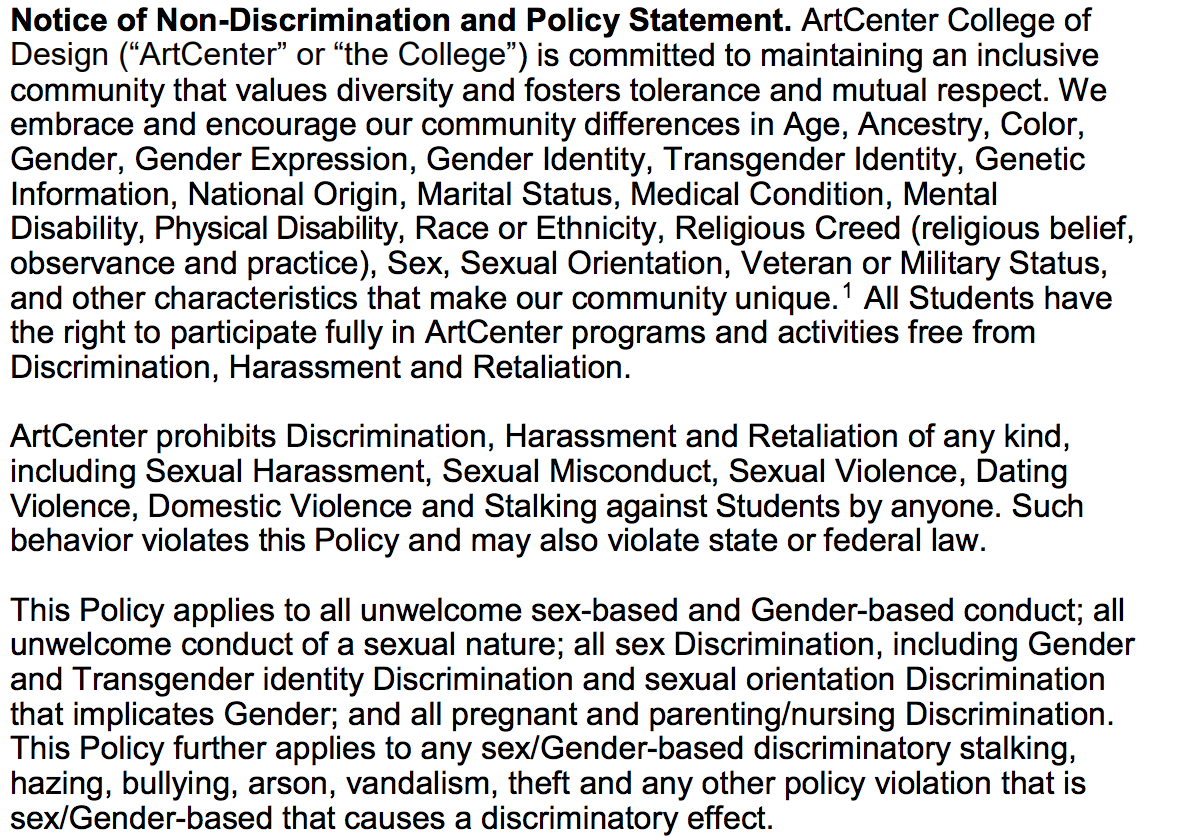
(Via Title IX Student Policy and Procedures)
ArtCenter promotes their Title IX reporting as a solution to bigotry and sexual assault on campus. Sadly many people have gone through the process and have ended up with their perpetrators not being punished and the school saying the VICTIM can change their class schedule around to avoid the person who hurt them.
In reality, this penalizes the victim usually delaying graduation or dropping out.
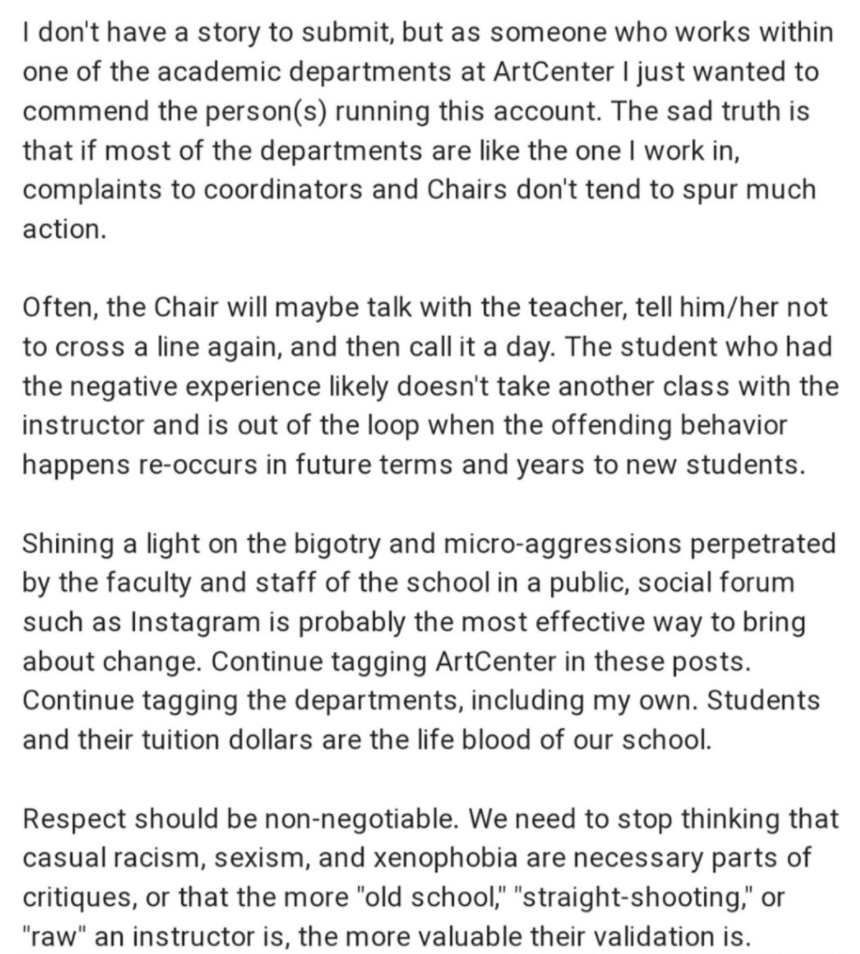
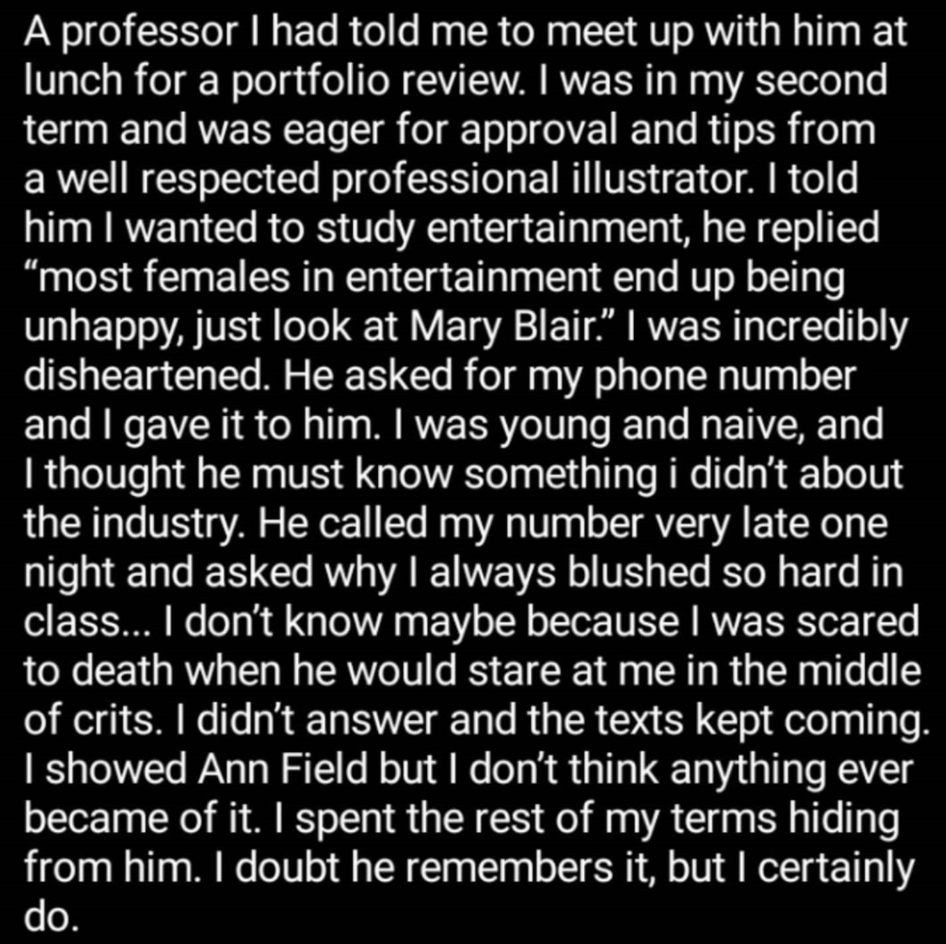

Credit: Blackataccd IG
Our school needs a Zero Tolerance policy.
Provided below is one that is already legally approved:
“The University strictly prohibits all forms of unlawful harassment (including sexual harassment and sexual violence), discrimination or retaliation in any form. Anyone who violates this policy of zero tolerance is subject to appropriate disciplinary action, up to and including immediate termination or dismissal.” (Via Mount Saint Mary’s Los Angeles Zero Tolerance Policy)
Many schools have been firing racist faculty and administrators. Reopen all title nine cases, give space to new reports, then fire the perpetrators. Do this within one term. After external auditing, fire the remaining racists, sexists, etc. Immediately start hiring faculty and administrators who are anti-racist, and put them through training.
Regardless of the amount of work this causes for ACCD administration, it should be done.
The school can not continue if it is not safe for students. This will raise the level of quality for the institution.
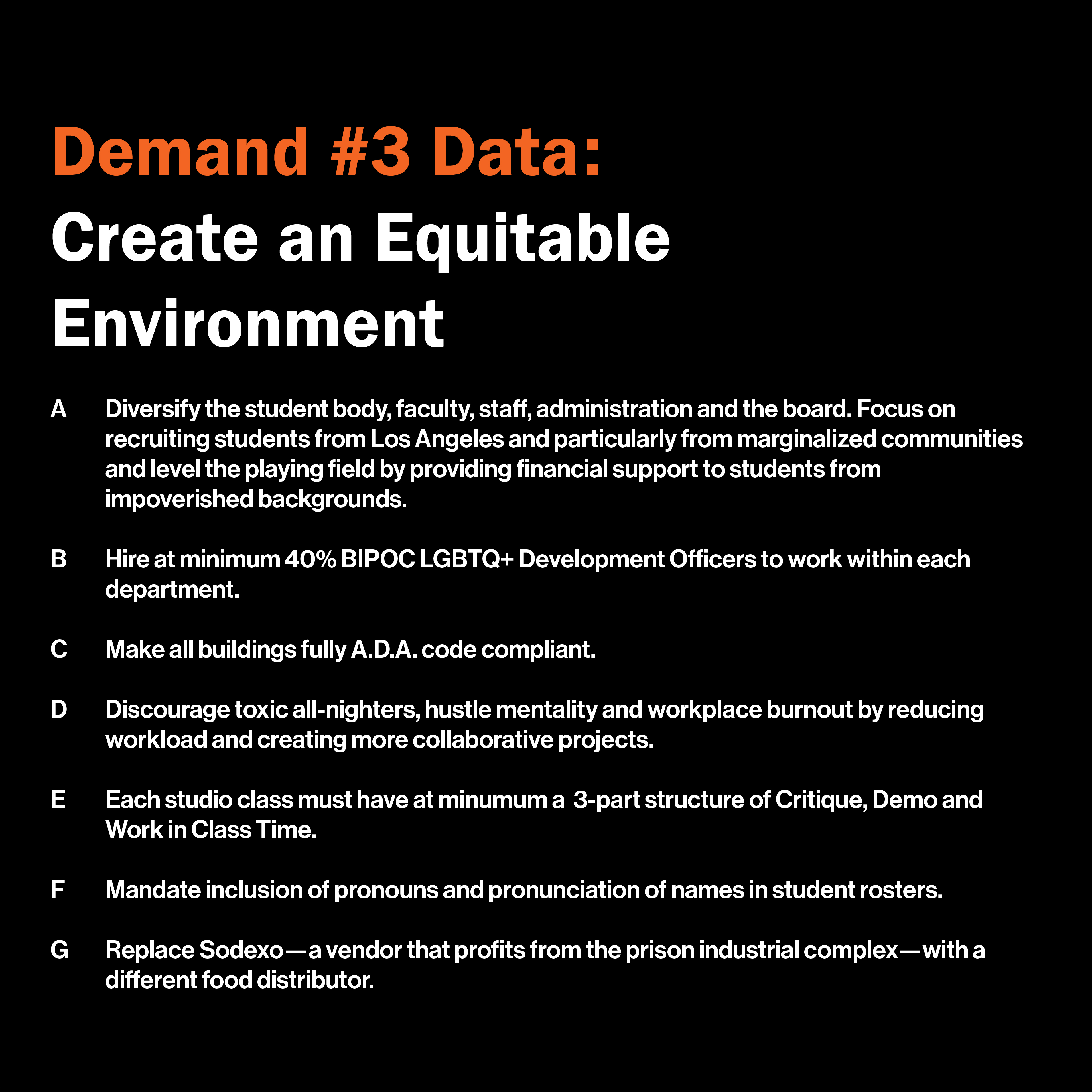
Los Angeles County is extremely diverse.
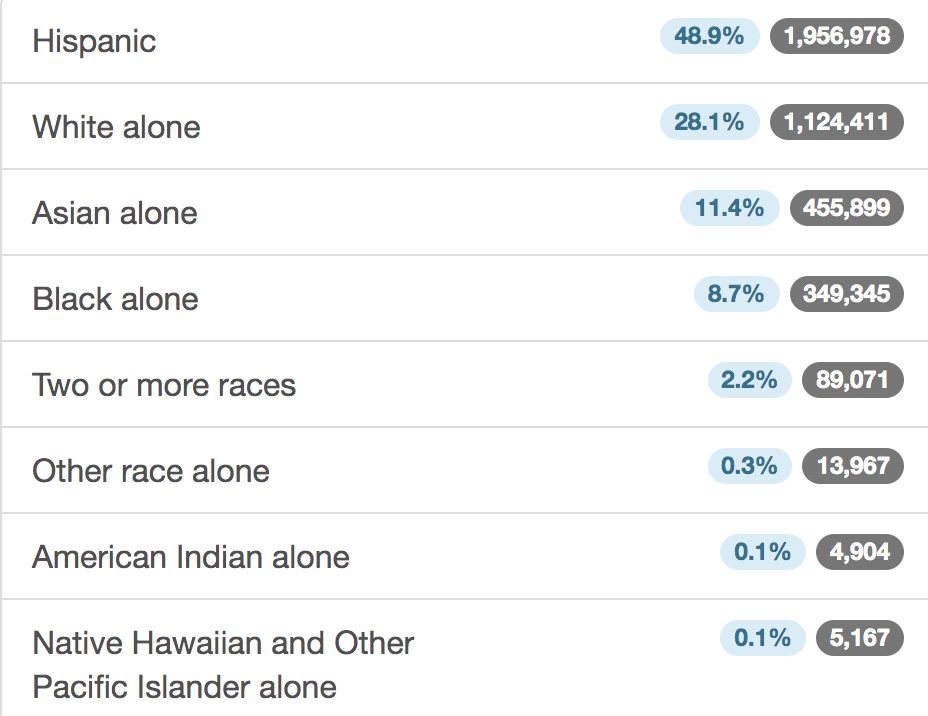

credit: City Data
So why doesn’t our student body reflect that?
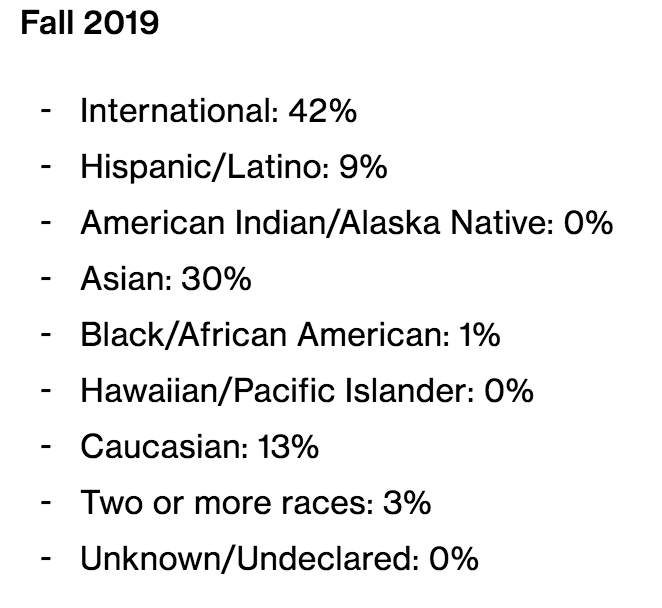 (Via ArtCenter at a Glance)
(Via ArtCenter at a Glance)Why doesn’t our faculty demographics reflect that?
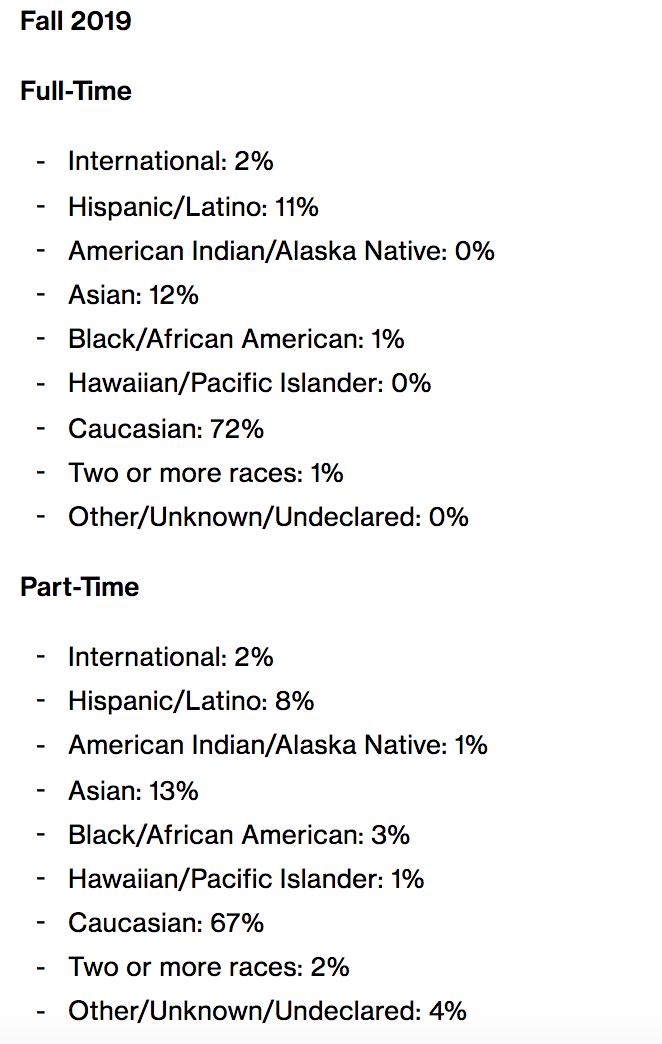
(Via ArtCenter at a Glance)
Why do our chairs look like this?

(Via People at ArtCenter)
But all our service staff look like this?

(On-Campus Photo)
Why is the largest population of Latinx and Black people on campus the lowest paid?
It’s the same reason why the school isn’t ADA Compliant.
Americans with Disabilities Act
Title III - Public Accommodations
“This title directs businesses to make "reasonable modifications" to their usual ways of doing things when serving people with disabilities. It also requires that they take steps necessary to communicate effectively with customers with vision, hearing, and speech disabilities.”
This title sets the minimum standards for accessibility for alterations and new construction of facilities. (Via National Network)
The same reason why student health isn’t a priority.

Image credit: @artcenterexhibitions ig
And the same reason why trans, non-binary and gender nonconforming students’ identities are ignored.
Nationally, 75% of transgender students who have felt unsafe at school because of their gender expression. (Via GLSEN 2017 National School Climate Survey)
Our school prioritizes productivity over students.
Our school prioritizes profit over people.
Our school relies on prison labor, aka modern slavery, to feed its students. “Sodexo’s involvement in the prison industry began in 1994, when the company bought a twenty percent stake of Corrections Corporation of America (CCA), now CoreCivic, one of the world’s largest private prison companies. The two companies formed joint ventures to operate private prisons in Australia and the UK: Corrections Corporation of Australia Pty. Ltd. and U.K. Detention Services Limited.” (Via Investigate)
Artcenter can never be truly diverse, equal, or inclusive until all of this harm is resolved. ArtCenter has the resources to change, has the ability to grow, so NOW is the time to put in the work.
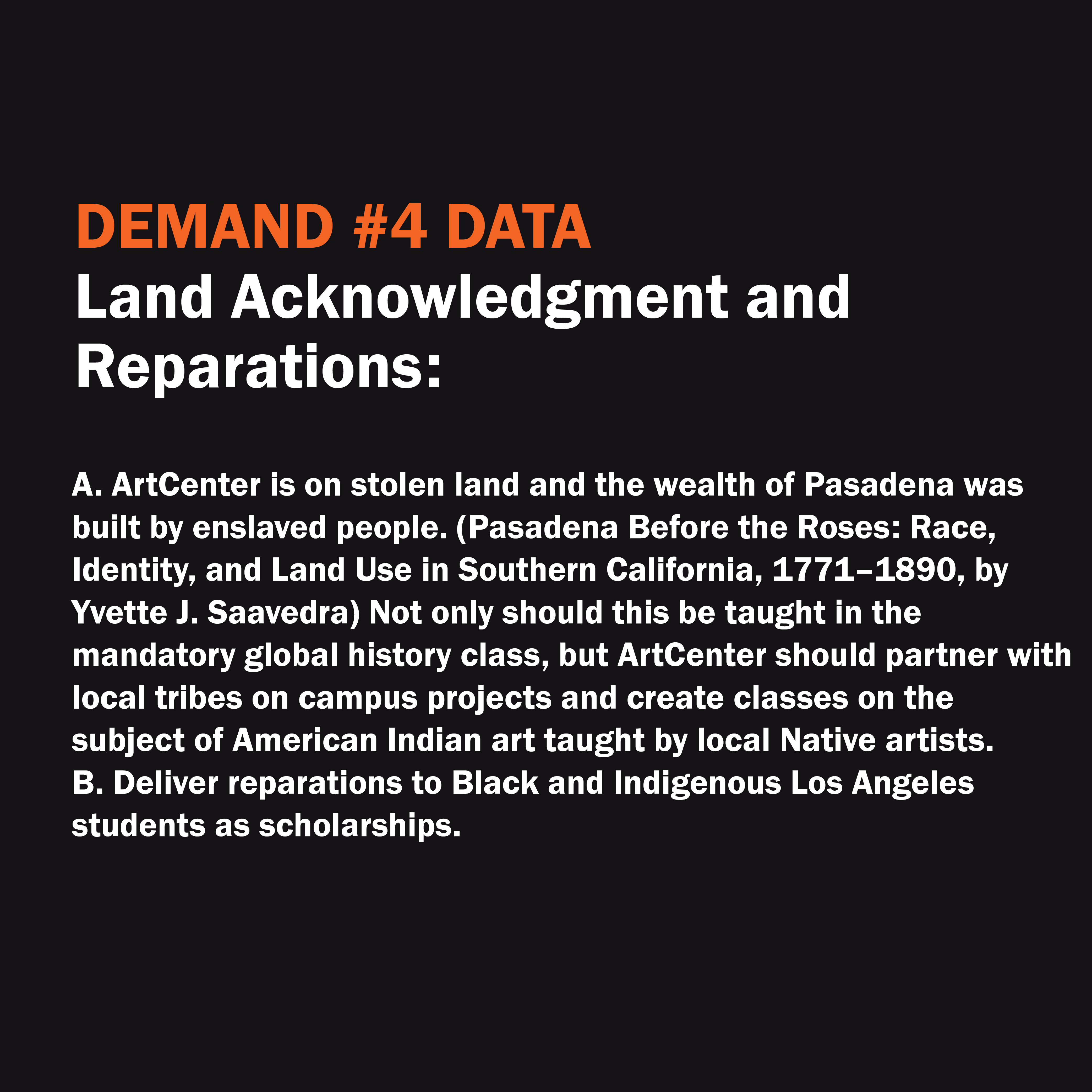 ArtCenter is on stolen Tongva-Gabrieleño land.
ArtCenter is on stolen Tongva-Gabrieleño land.
Credit: Apple Maps
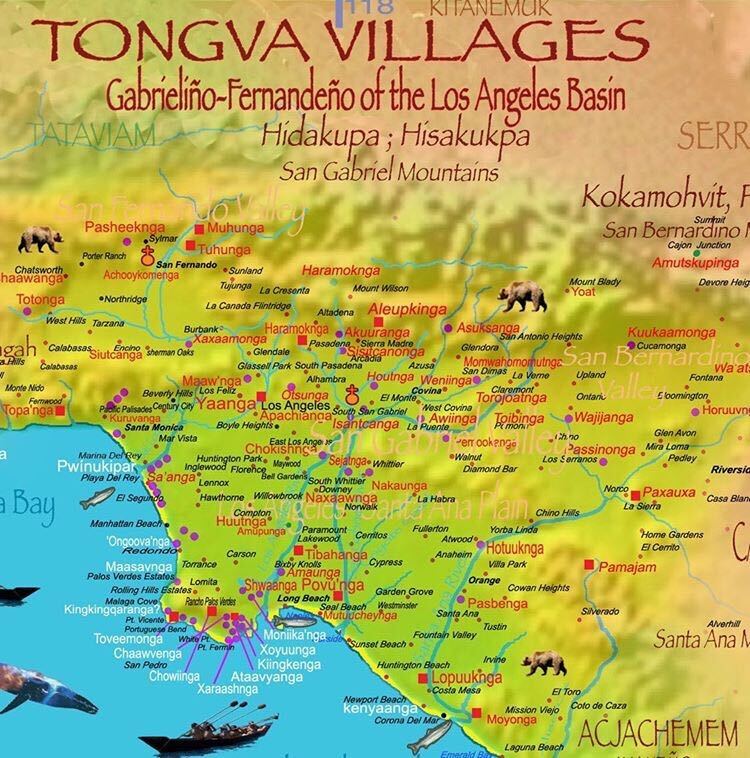
Credit: Sutimiv-Pa’alat
Pasadena was built through the genocidal theft of indigenous land and free slave labor. (via Pasadena Before the Roses: Race, Identity, and Land Use in Southern California, 1771–1890, by Yvette J. Saavedra)
ArtCenter does not acknowledge this fact, even going so far as to obscure it when trying to secure a permit for the Master Plan.
While land acknowledgments help educate, they don’t change the material reality of Indigenous and Black communities in LA County.
Every student should be taught Pasadena and LA history of colonization and white supremacy.
ArtCenter should pair with local tribes and Black cultural centers on projects that explore those hidden histories. Artcenter should pair with artists and designers from marginalized populations in designing curriculum, then being the ones to teach about their communities’ art.
ArtCenter needs to use its budget to create more scholarships for Black and Indigenous students as reparations for the fact that their land holdings and wealth stems from Pasadena’s racist history.
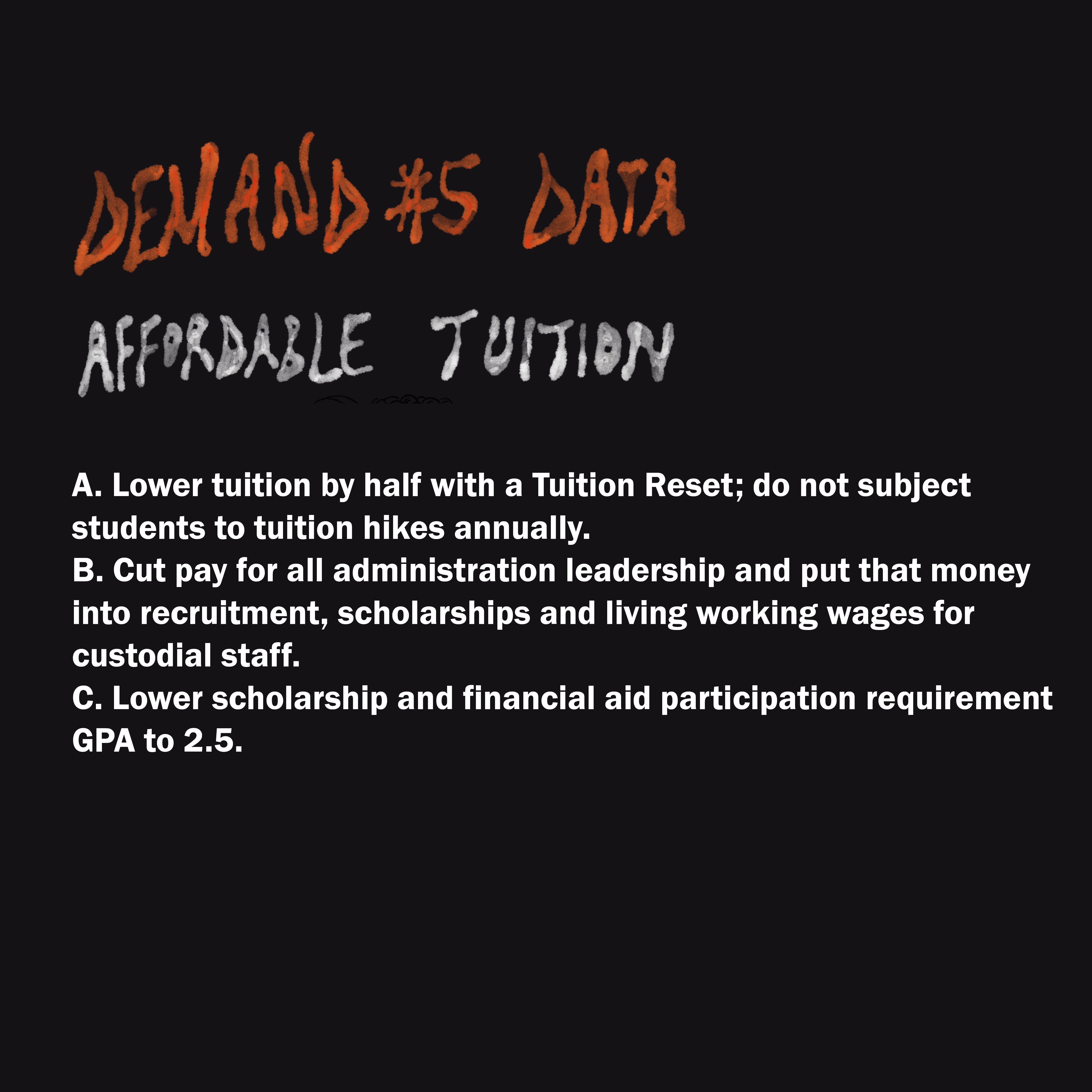
Considering our school has a reputation of top quality, it can afford a tuition reset that cuts what we pay each term in half.
The fact that ArtCenter student body’s population that is most likely unable to afford steep tuition are brown and black communities, the high cost of our education is racist. It’s exclusionary and keeps ArtCenter from being truly diverse.
ArtCenter Tuition and Fees has increased 39.8% for the last 10 years.
 Credit: College Tuition Compare
Credit: College Tuition CompareACSG Tuition Graphic
63% of our Tuition goes toward Education, specifically $39.6 M out of the $79.4 M pays for salaries.
 Credit: ArtCenter Student Government Inside Page
Credit: ArtCenter Student Government Inside Page
Top Executive Salaries (via Non Profit Light
President, Lorne Buchman ~ $559,000
SVP CFO & CAO, Richard Haluschak ~ $294,000
SVP Development, Emily Laskin ~ $294,000
Environmental Design Chair, David Mocarski ~$207,000
Film Chair, Ross Lamanna ~$205,000
There needs to be more transparency in administrative and faculty pay and benefits.
91 colleges have implemented 95 tuition resets from 1987 to 2018, with extremely successful results. (Via Savingforcollege)
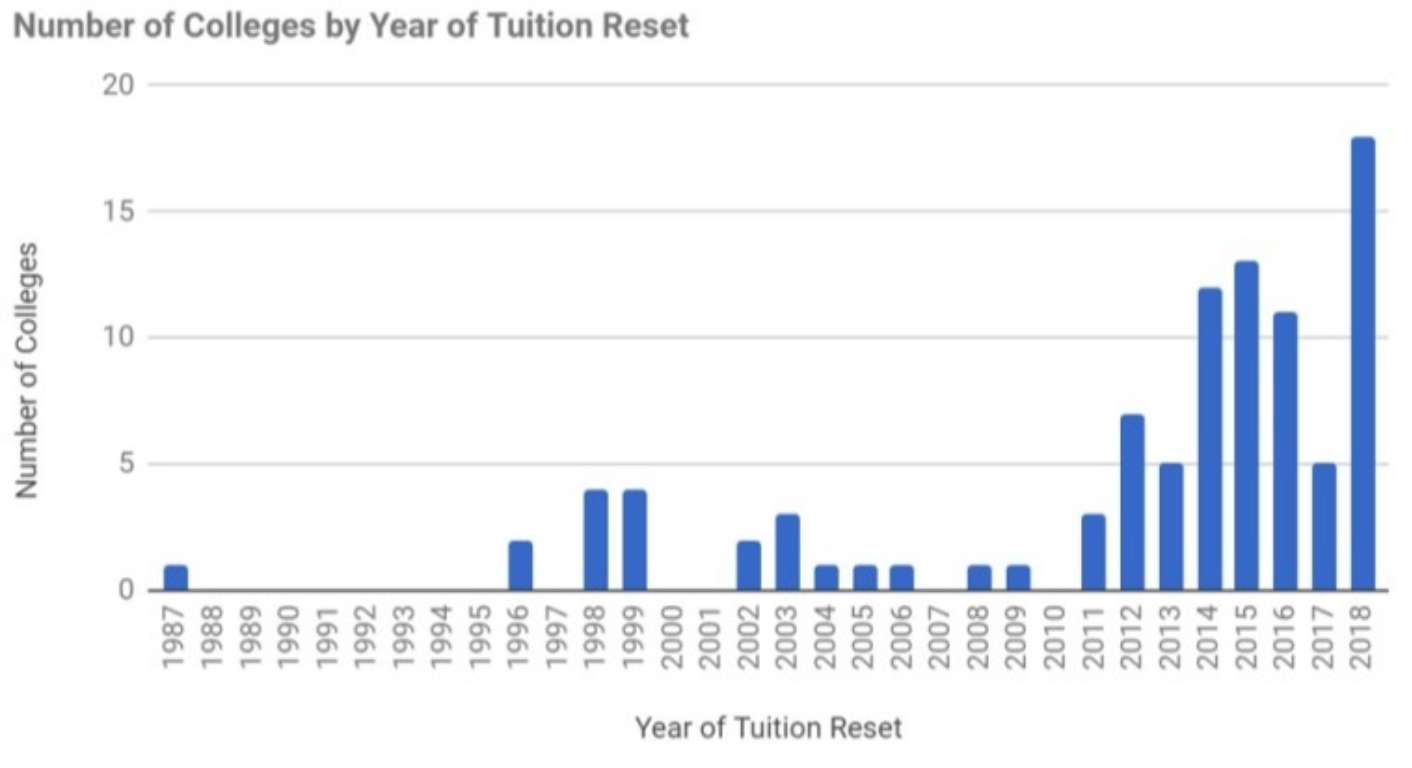 Tuition
Fall 2020 - Summer 2021
Tuition
Fall 2020 - Summer 2021
Undergraduate Tuition (per term): $22,888 ($752 increase)
Graduate Tuition (per term): $24,190 ($796 increase)
Our education continues to be too expensive, even with classes being offered online. We need affordable tuition NOW.
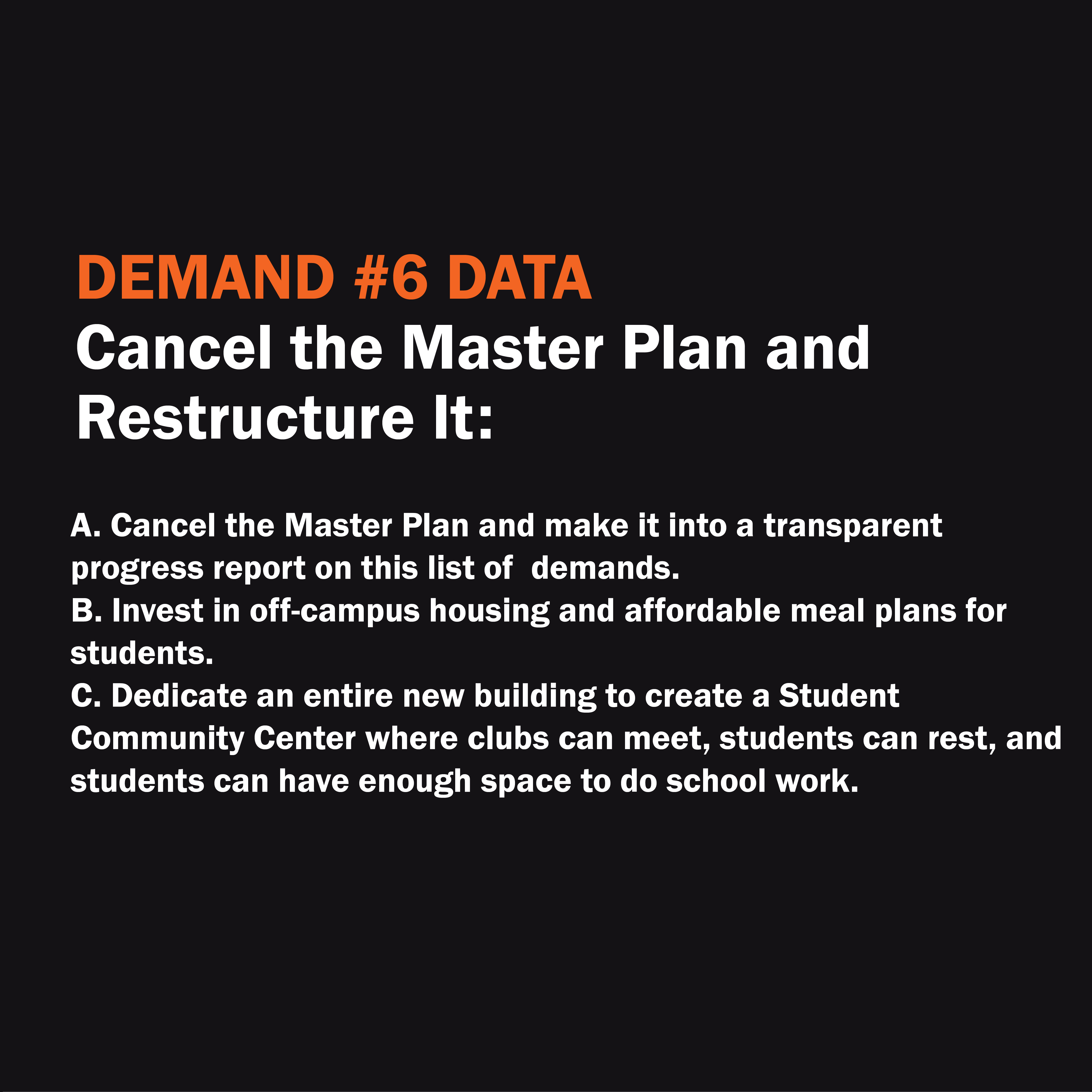
Throughout this expansion we’ve had two recessions and tariffs skyrocketing the cost of construction.
The money raised sits doing nothing for years while students have no space to work, are homeless and sleep all over campus.

Credit: @sleepcenter.ac
Student Dorms
In 2014 ArtCenter filed that they were in predevelopment constructing a new South Campus.
Image Credit: Michael Maltzan Architecture / Tina Chee

Image Credit: Michael Maltzan Architecture / Tina Chee
In 2018 Pasadena City Council unanimously approved construction. Six years into this development and nothing has been constructed.
We’ve been told to keep waiting for project spaces, club offices, and a student community center.
While we’ve been waiting, sadly students have gone homeless. Last year we occupied the bridge in front of the Administrations offices. The school implemented an economic relief team.
But the ERT has limited reach.
No study was ever made into what type of physical spaces students actually need.
While presenting to Pasadena City Council, President Lorne Buchman failed to present that multiple tribes have not signed off on the Environmental Impact Report and were concerned about the project. (via Final Environmental Impact Report ArtCenter College of Design Master Plan, April 2018)
Construction is projected to be finished by 2033.

Credit: @sleepcenter.ac
We need a transparent plan now with exact timeline detailing what will happen.
No more homeless students.

Create Change 2.0 Art Center College of Design Strategic Plan 2017-2021
LEARN TO CREATE. INFLUENCE CHANGE
“Create Change 2.0 is the product of the ArtCenter community evolving and updating the initiatives of Create Change 1.0, the plan that guided the institution from 2011 to 2016. It is a strategic agenda designed to strengthen the College’s path forward through the many lessons learned over the course of the last five years and with increased attention to the complexities of the current environment of higher education in the United States.” (1)Diversity — Focus on Recruitment, Awareness, Inclusion, Equity and Engagement
- 1.1.1 Attract a diverse, qualified prospective student pool from a variety of existing and new sources. Assure a nimble, responsive admissions process that supports talent and diversity. (CC1.0: 1.3.2; 1.3.2.2; 2.1.6; 2.2.2)
- 1.1.2 Build strategies and resources to retain all students to the completion of their degrees. (CC1.0: 2.2.7; 2.2.10)
- 1.1.3 Provide funding and support to increase affordability and access for a more diverse range of students from underrepresented populations. (CC1.0: 2.2.2; 2.2.8; 2.2.9; 2.2.12)
- 1.1.4 Provide students with international learning opportunities in order to develop universal competencies and cross-cultural adaptability. (CC1.0: 1 .3.1.4)
- 1.1.5 Deploy strategies and resources to attract, hire and retain a diverse faculty and staff. (CC1.0: 2.1.4; 2.1.5; 2.2.1; 2.2.5)
- 1.1.6 Provide additional resources to ensure student, faculty and staff participation and inclusion in all College activities and programs. (CC1.0: 2.1.6)
- 1.1.7 Ensure fair and equitable policies and practices inside and outside of the classroom regarding classroom conduct and diversity. (CC1.0: 2.16; 2.2.3; 2.2.4; 2.2.5)
- 1.2.5 Build new strategies for degree completion for all types of student profiles by exploring new models of matriculation (e.g. low residency, independent study based on work experience, online education). (CC1.0: 1.3.2.1)
- 1.2.6 Provide appropriate staffing structures to support all students.
Affordability — Experimentation for Greater Access
- 1.3.1 Experiment with and create new, more efficient and affordable curricular structures, such as 4/1 or 3/2 programs; competency-based learning; summer programs, “Jump In/Jump Out” and “Design your Own Programs”; portfolio-based and experience credits; online and real-time study; transdisciplinary activities and projects; waive/sub/transfer policies; peer-to-peer; and skill acquisition training. (CC1.0: 1.3.1.2; 1.4.2.3) 1.3.2 Pursue a variety of options to increase affordability including potential enrollment growth, budget reallocation or reductions, limited tuition increases, on-campus student housing, fundraising for scholarships, transportation alternatives for students, and increased operational efficiency. 1.3.3 Review the expected outcomes of the BS versus the BFA degree. Investigate further reductions of the number of units required for graduation in programs with unit requirements in excess of 120 by revising and compressing the curriculum;. Other considerations include: modular experiences; academic breaks to facilitate internships for credit and work experiences; financial health of students; and flexibility for student wellness and life balance. 1.3.4 Further evaluate and implement the College’s transfer credit policies, which affect the total cost of tuition. (CC1.0: 1.3.2.3)
Alumni — Ongoing Support and Engagement
- 1.6.4 Create dynamic relationships between people within the ArtCenter family and deepen their commitment and personal ties to the College. Inspire alumni to engage in a life-long relationship with the College through programs of service and support. (CC1.0: 2.2.14)
- 1.6.5 Align alumni with the College through regular and varied communications about the College, the community and current trends in the fields of art and design.
Faculty Development — Faculty Support and Achievement
- 2.1.2 Diversify the ethnic, gender and experience profile of the faculty through recruitment, retention, fellowships, key appointments and special residencies. (CC1.0: 1.2.1, 2.2.1)
- 2.1.3 As part of the Faculty Compensation study, determine best practices towards fair compensation for all faculty, including further clarification of one- and three-year letters of appointment. Establish a timeline for implementation with consideration of shortand long-term budget planning. (CC1.0: 1.2.4)
Curriculum and Pedagogy — Diversification in What and How of Teaching Our expert
- 2.2.10 Fully implement opportunities across multiple departments for a 3/2 (4/1) undergraduate/ graduate program structure wherein students are able to combine their undergraduate and graduate degree studies in order to provide students an accelerated master’s level pathway. (A prototype of this program has been designed for the new Graduate Graphic Design program). (CC1.0: 1.4.2.3)
- 2.2.14 Revise and clarify credit structures in both the BS and BFA degrees to ensure the fairness and efficiency towards timely completion, including: further credit hour reductions in departments with a unit requirement greater than 120; revised transfer credit policies to allow for easier acceptance of previous credits towards degree; internal parity of credits towards the process of changing majors; and customized learning programs that allow students to select degree-credit coursework from various departments. (CC1.0: 1.3.2.3)
Research and Partnerships —ArtCenter Intersects the World
- 2.3.5 Explore partnerships between graduate and undergraduate education including graduate teaching assistants, graduate research assistants and other research modeling.
- 2.3.6 Expand potential for international experience for all students, including growth of needed infrastructure. Focus on emerging creative hub cities worldwide, including: Mumbai, Mexico City, Tokyo, Singapore, Beijing, Shanghai, Edinburgh, Sydney, Barcelona and Istanbul, as well as maintain current alliances with London and Berlin. Pilot new programs appropriate to each location.
The Third Campus — Establishing a Robust Digital Infrastructure and Support Services
- 3.1.4 Continue migration to online transactional resources, services and digital assets for students, staff and faculty, in order to provide: further paper reduction; greater capability for 24/7 information sharing; more efficient work processes; multi-location integration; and better communication. (CC1.0: 3.4.6)
- 3.1.5 Increase and enhance ability for staff, faculty and students to more seamlessly conduct their routine business, such as online registration, room scheduling and other content and service-specific needs.
Facilities — Building new Learning Spaces, Makers Spaces and Community Spaces
- 3.2.4 Develop student housing that models a culture of sustainability.
- 3.2.5 Integrate learning, making and community into the development and design of student housing. (CC1.0: 3.4.2; 3.4.4; 3.5.1; 3.5.2; 3.6.3)
- 3.2.6 Develop an overall vision and program for community spaces that ensures safe, secure and comfortable places both indoors and outdoors. (CC1.0: 3.1.2; 3.2.5; 3.6.2)
- 3.2.7 Ensure that as we build physical and digital infrastructure that we foster competency among students through unprogrammed spaces, blocks of time, curricular flexibility, and peer-to-peer platforms. (CC1.0: 3.2.5; 3.6.1)
Exhibitions —Supporting New Exhibition Spaces and Practices
- 3.4.4 Build and curate a student gallery at South Campus in support of Admissions.
Multi-campus Experience — Aligning Schedule, Supporting Transportation Needs and Establishing an Affordable Residence Hall
- 3.6.1 Continue the development of student residences specifically designed to accommodate a live/work space for art and design production that support community-building and affordability goals. (CC1.0: 3.4.2; 3.4.4)
- 3.6.6 Develop and implement a Health and Safety Master Plan that provides a safe and healthful learning environment specifically aimed at student making and wellness across both campuses. In compliance with state and federal guidelines, this plan should include best practices for wellness and handling hazardous materials. (CC1.0: 3.6.2; 3.6.3)
9 years since Create Change 1.0 began and the little that HAS been implemented has failed to materially make our campus safer for marginalized students. This policy is also a massive compromise compared to what students actually need and deserve.
We need a school ran by someone who cares enough about us to change things ASAP instead of letting sexual predators and racists roam campus for years harming students.
Since President Buchman is obviously unable to step up to the task, we DEMAND his resignation.

Represent is a short-film festival dedicated to shifting the narratives told about people of color through stories that reflect on our ever-growing dreams, realities and imaginations.
The festival aims to provide a platform for us to share our own narratives on our own terms. Whether through production, talent, or storytelling, it is essential that we have a role in the frameworks of filmmaking that allows us to reflect our own cultural, ethnic, and linguistic identities.
People of color are consistently misrepresented in films and highly underrepresented on film crews. Consequently, we often see films about people of color that simply reenact the racist history of our ancestors, tokenize people of color through one-dimensional characters, or focus exclusively on our traumatic experiences navigating through society. Although sharing our history is important, very few films account for the breadth, dynamism, and fullness of our ever changing realities and imaginations. The festival will counteract these tropes by presenting films from three genres—narrative, animation and documentary—followed by curated panel discussions that shift the narrative toward one that encompasses the wealth of talent, creativity, and diversity we seek in this field. Participants will build relationships with other filmmakers, industry folks, and creatives of color with shared values, in hopes that we will network and collaborate on expanding the realm of representative works in the future.
Presented by the Antiracist Classroom, Represent is an opportunity to discuss, deconstruct, and express what’s missing from the film industry and what we hope to see more of in the future.
Looking Back at REPRESENT
![]()
![]()
![]()
![]()
![]()
![]()
![]()
![]()
![]()
![]()
![]()
![]()
![]()
![]()
![]()
![]()
![]()
![]()
![]()
![]()
![]()
![]()
![]()
![]()
![]()
![]()
![]()
![]()
![]()
![]()
![]()
![]()
![]()
![]()
![]()
![]()
![]()
![]()
![]()
![]()
![]()
![]()
![]()
![]()
![]()
![]()
![]()
![]()
![]()
![]()
![]()
![]()
![]()
![]()
![]()
![]()
![]()

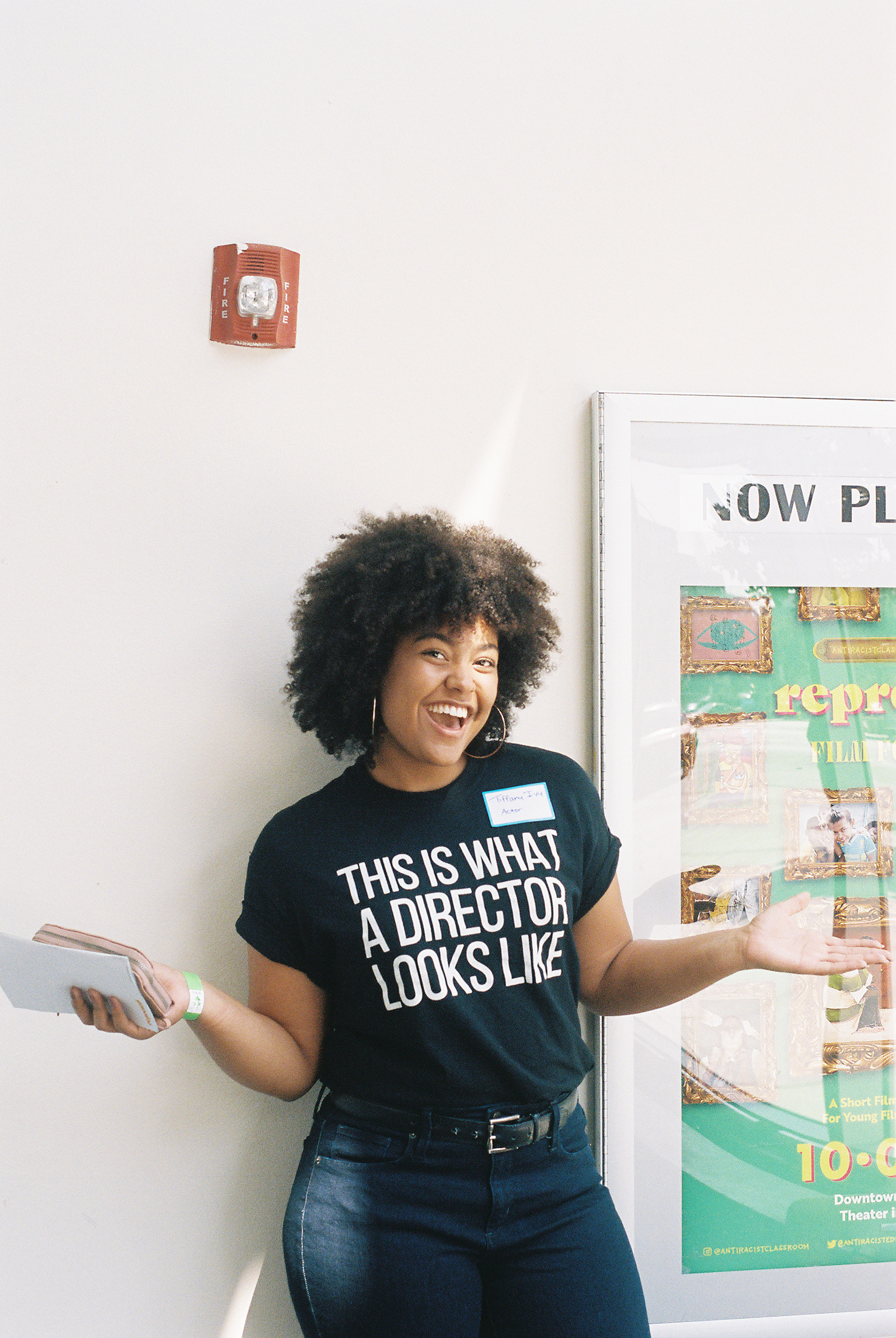
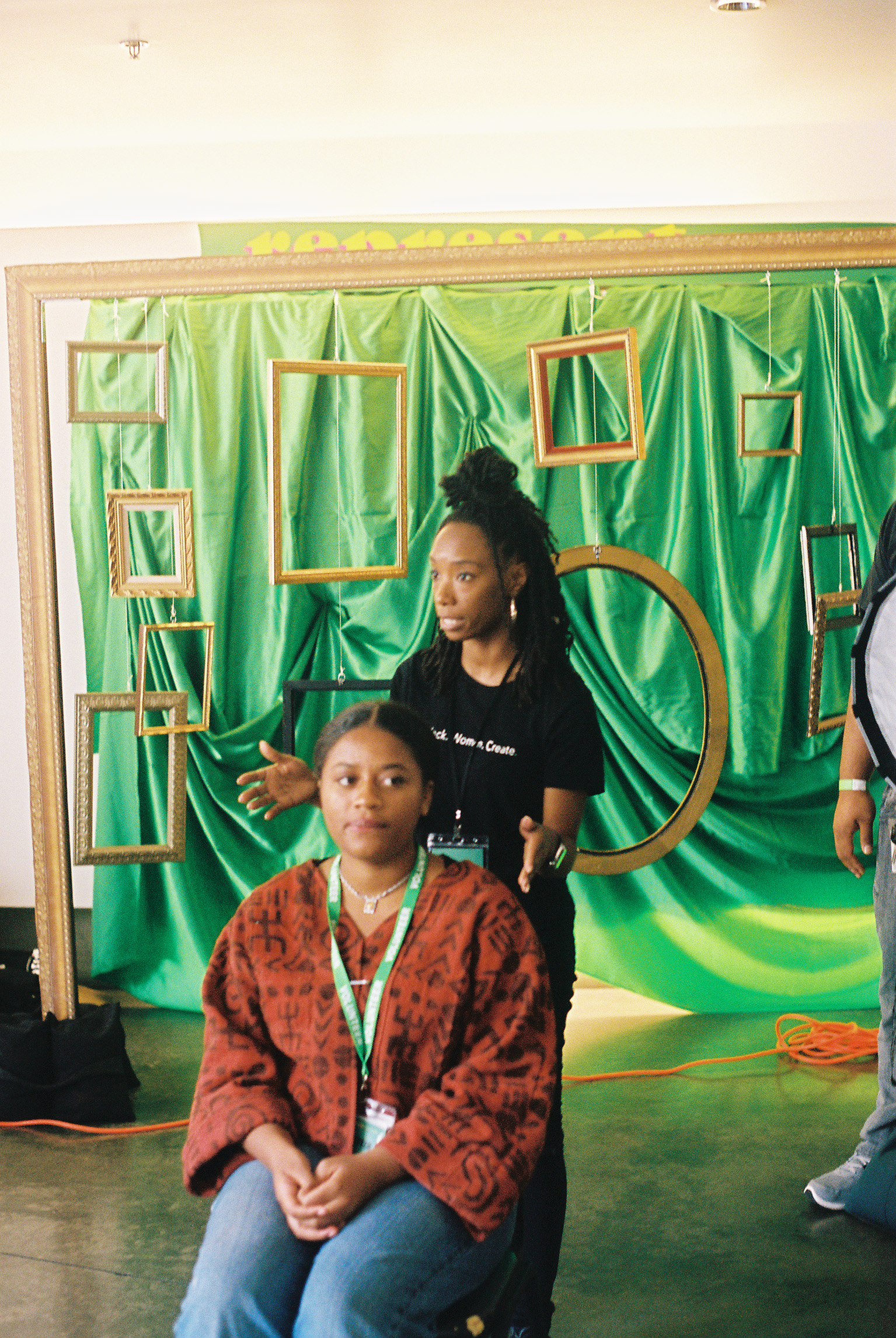






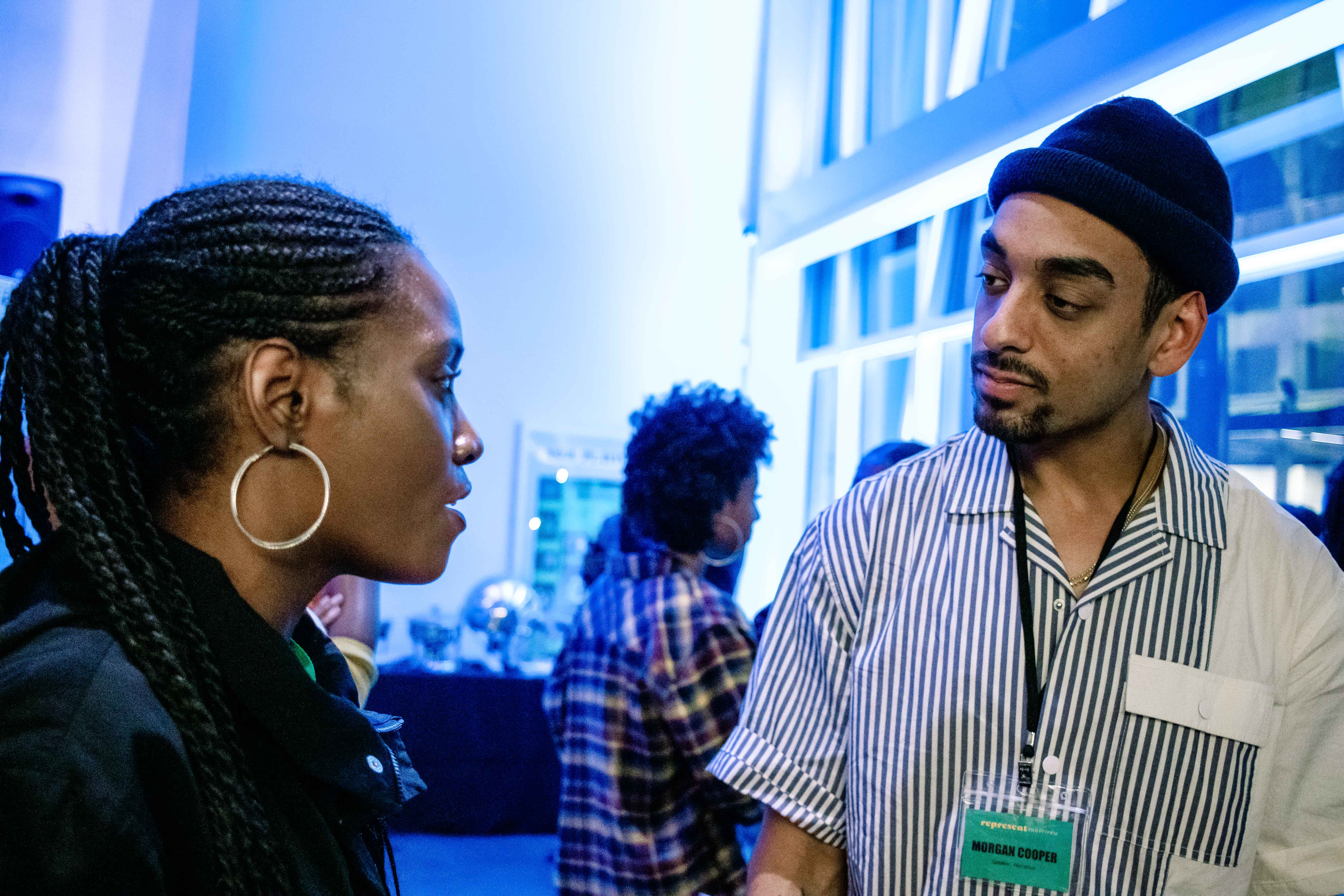



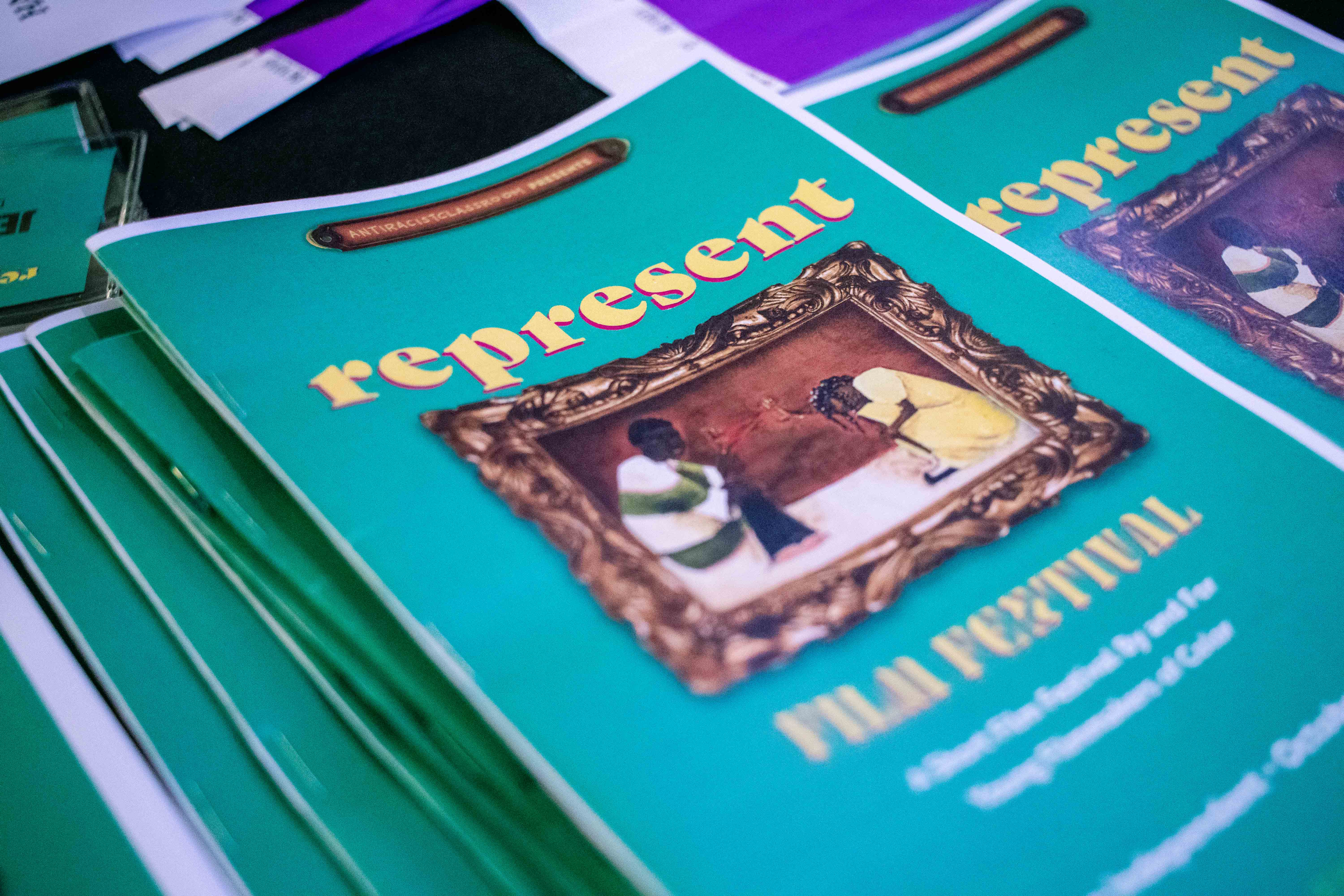





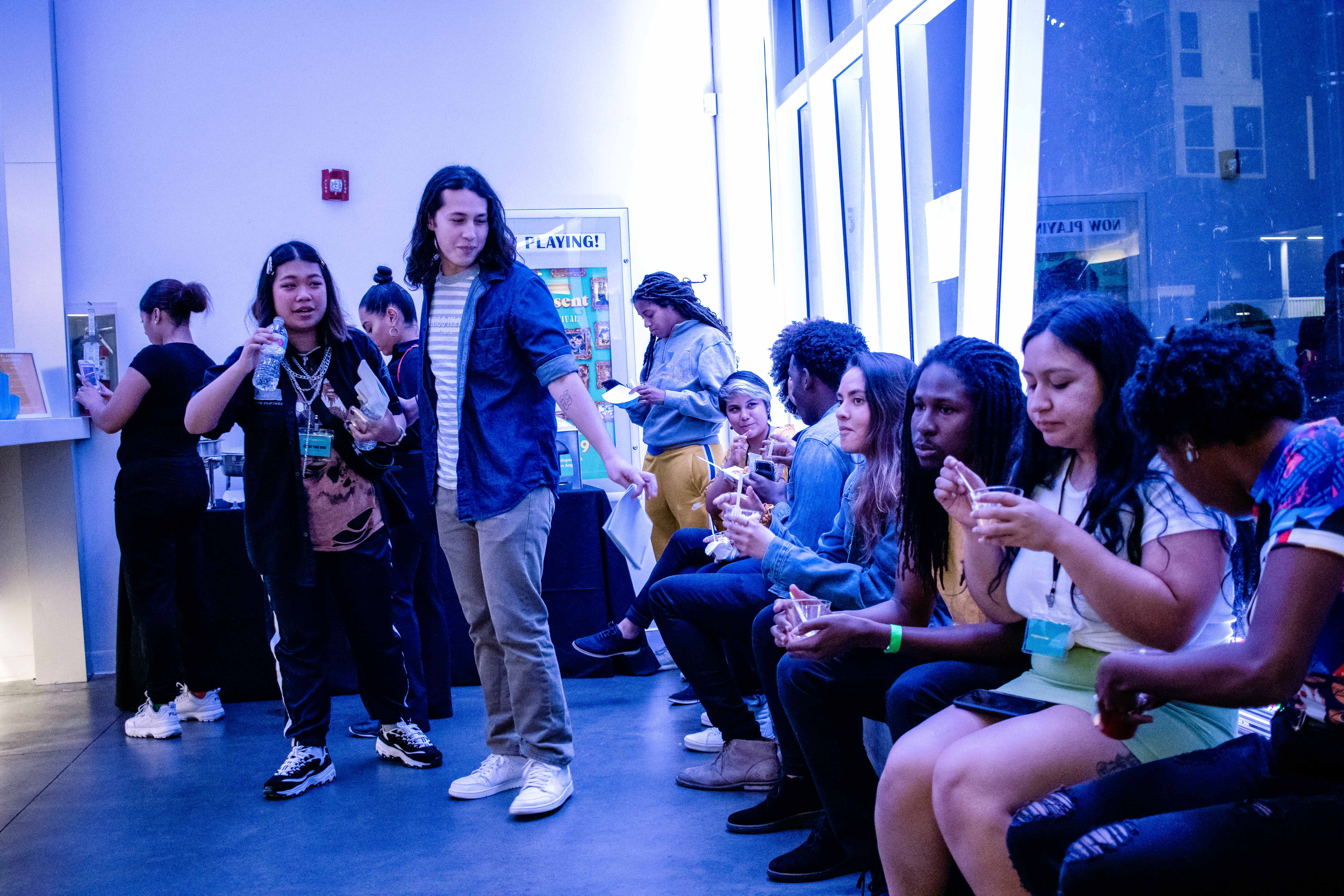
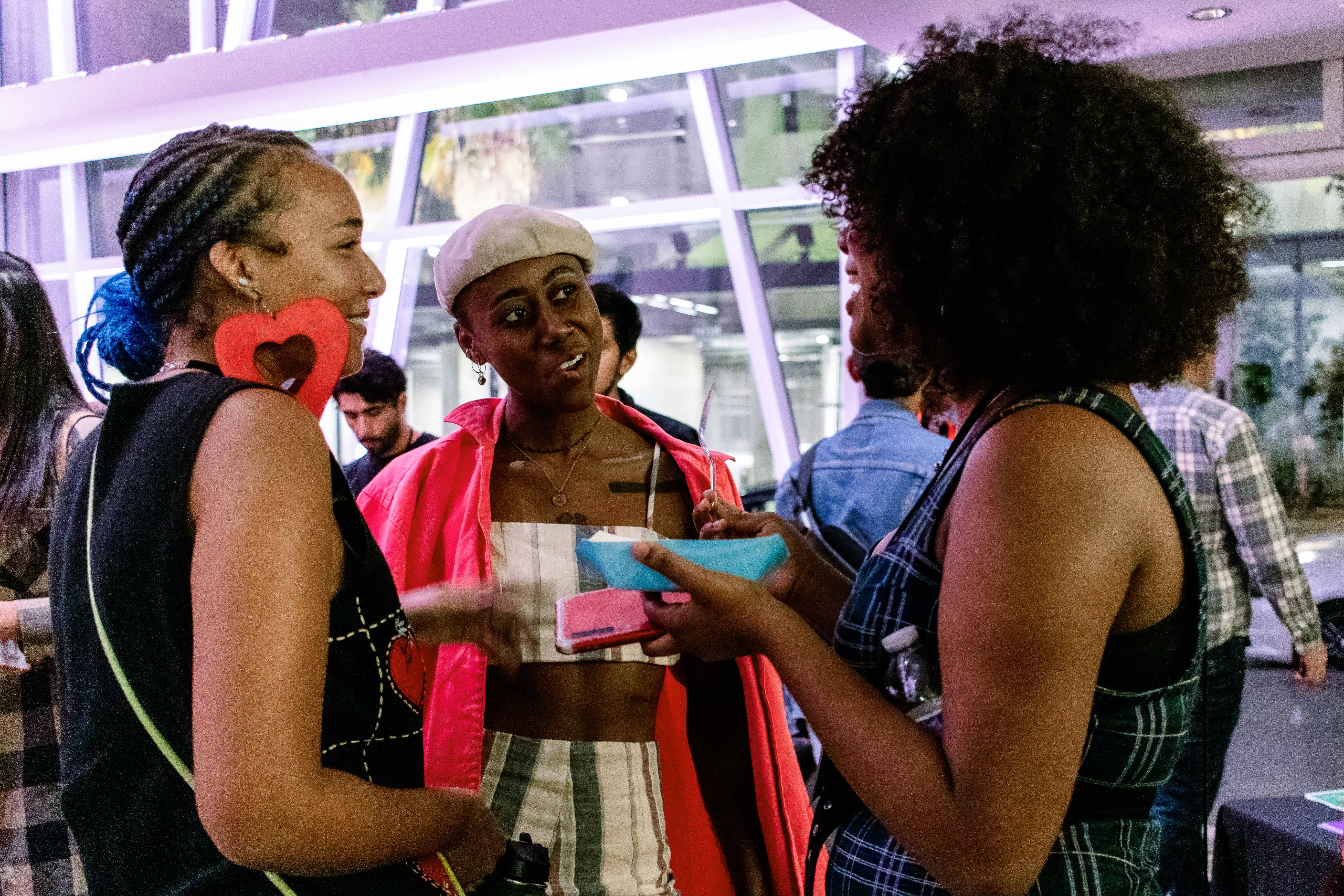






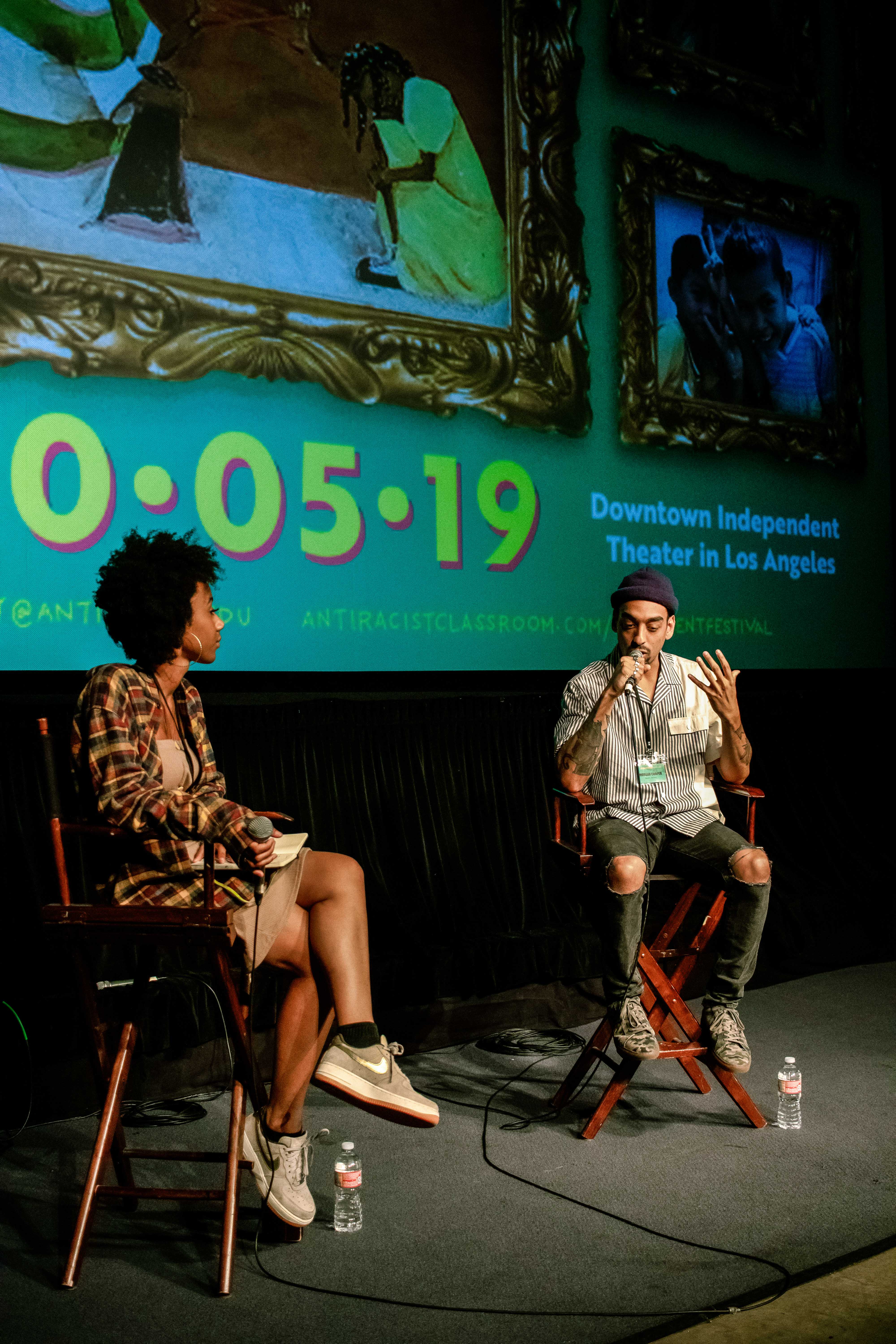



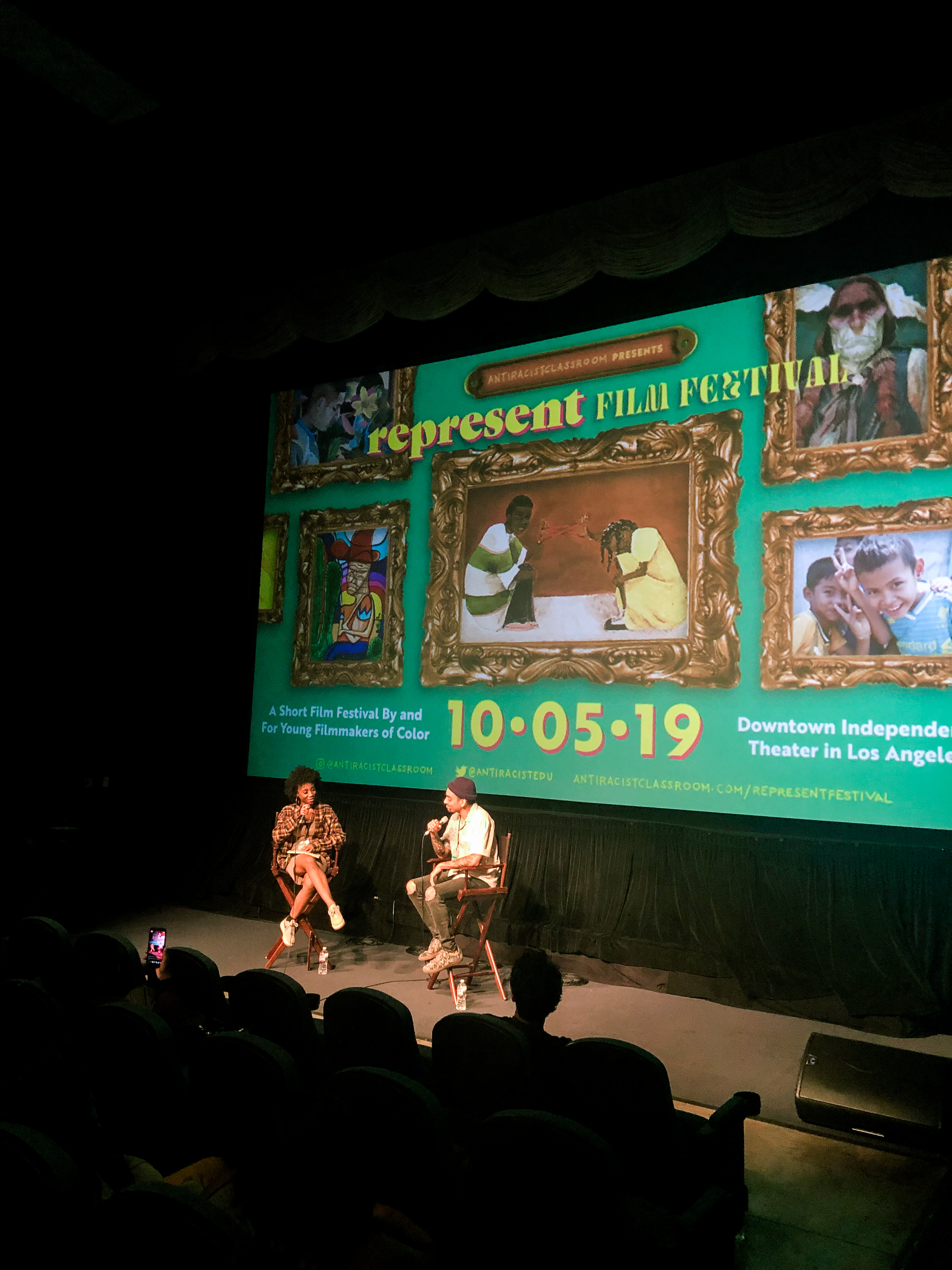




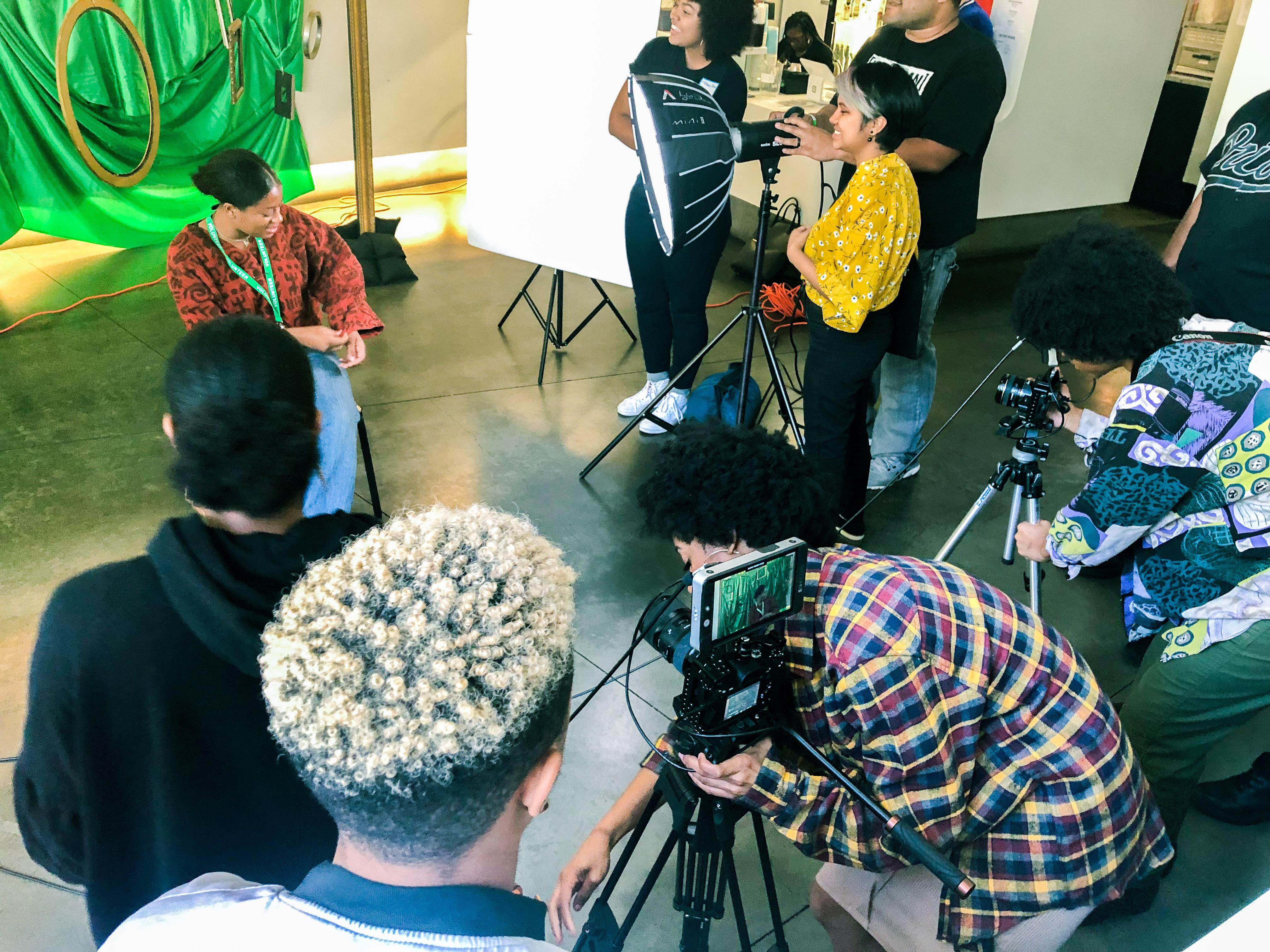



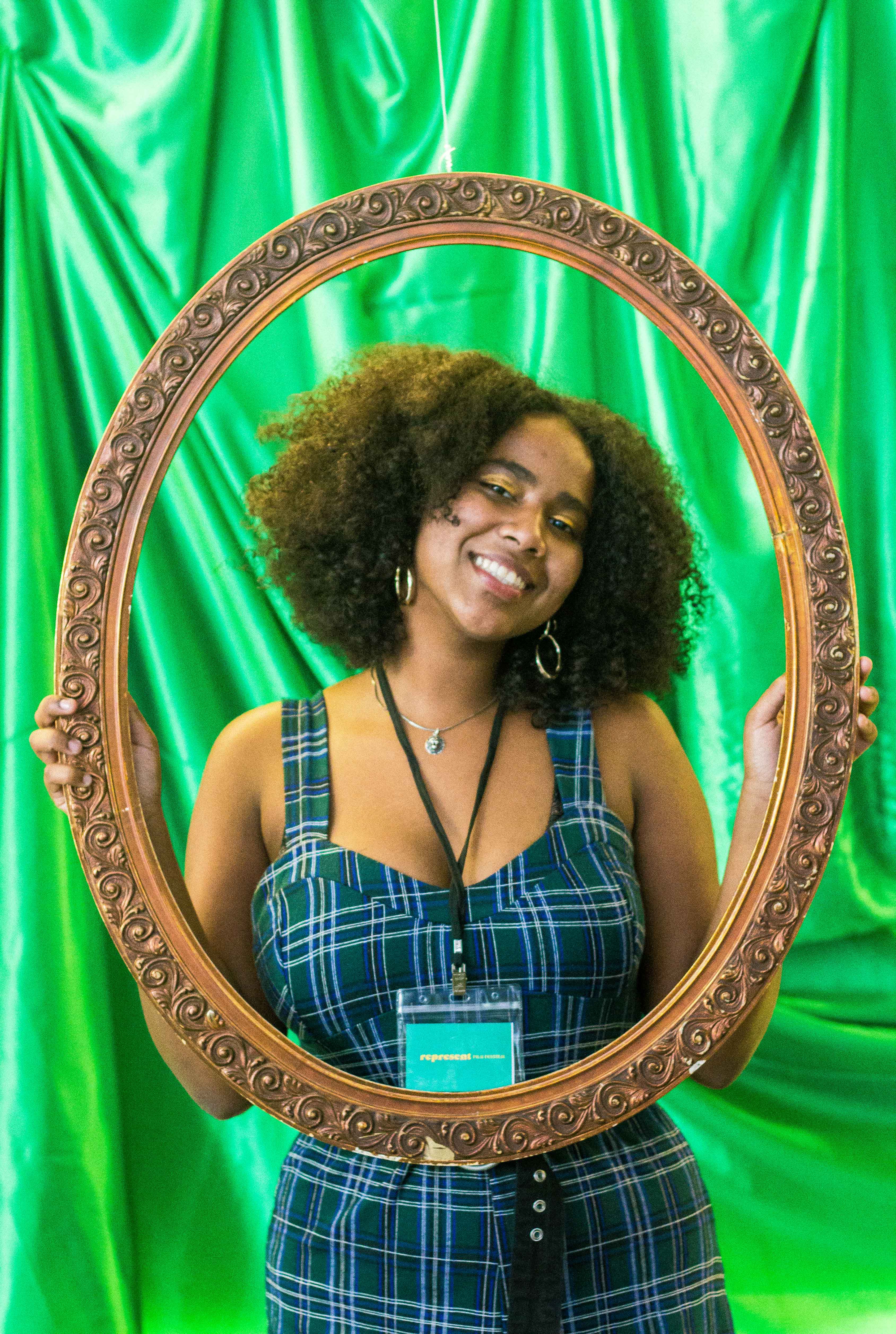



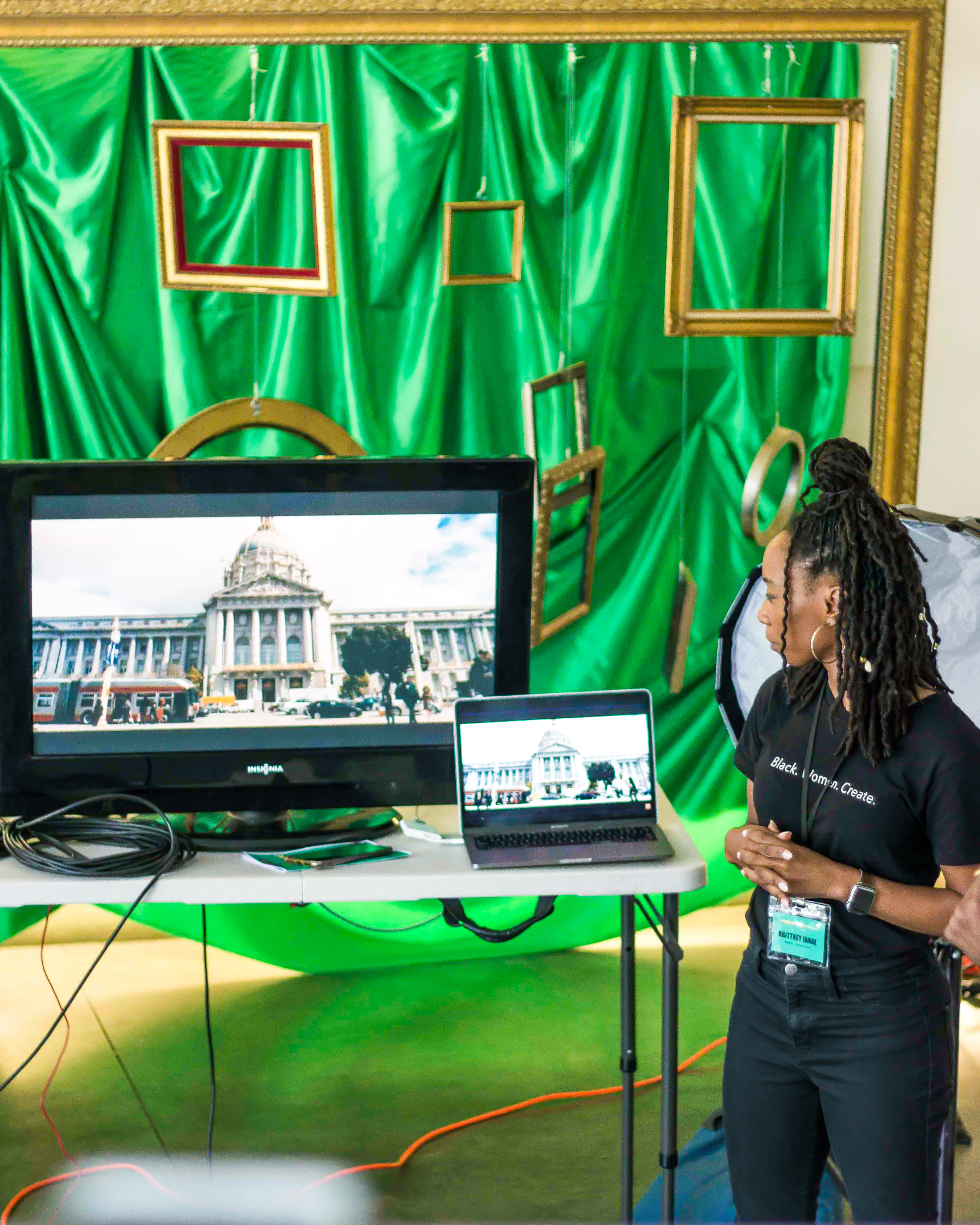



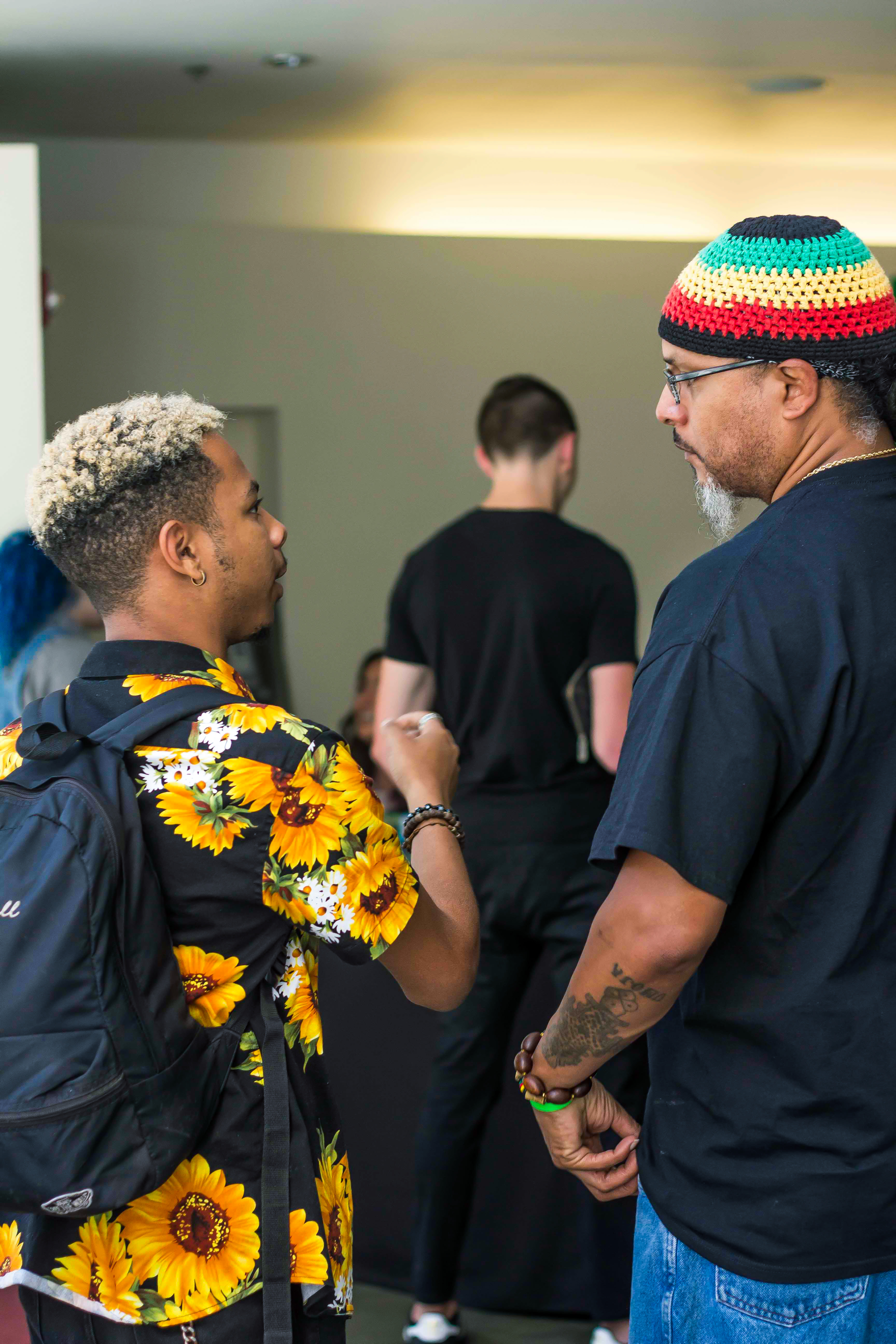
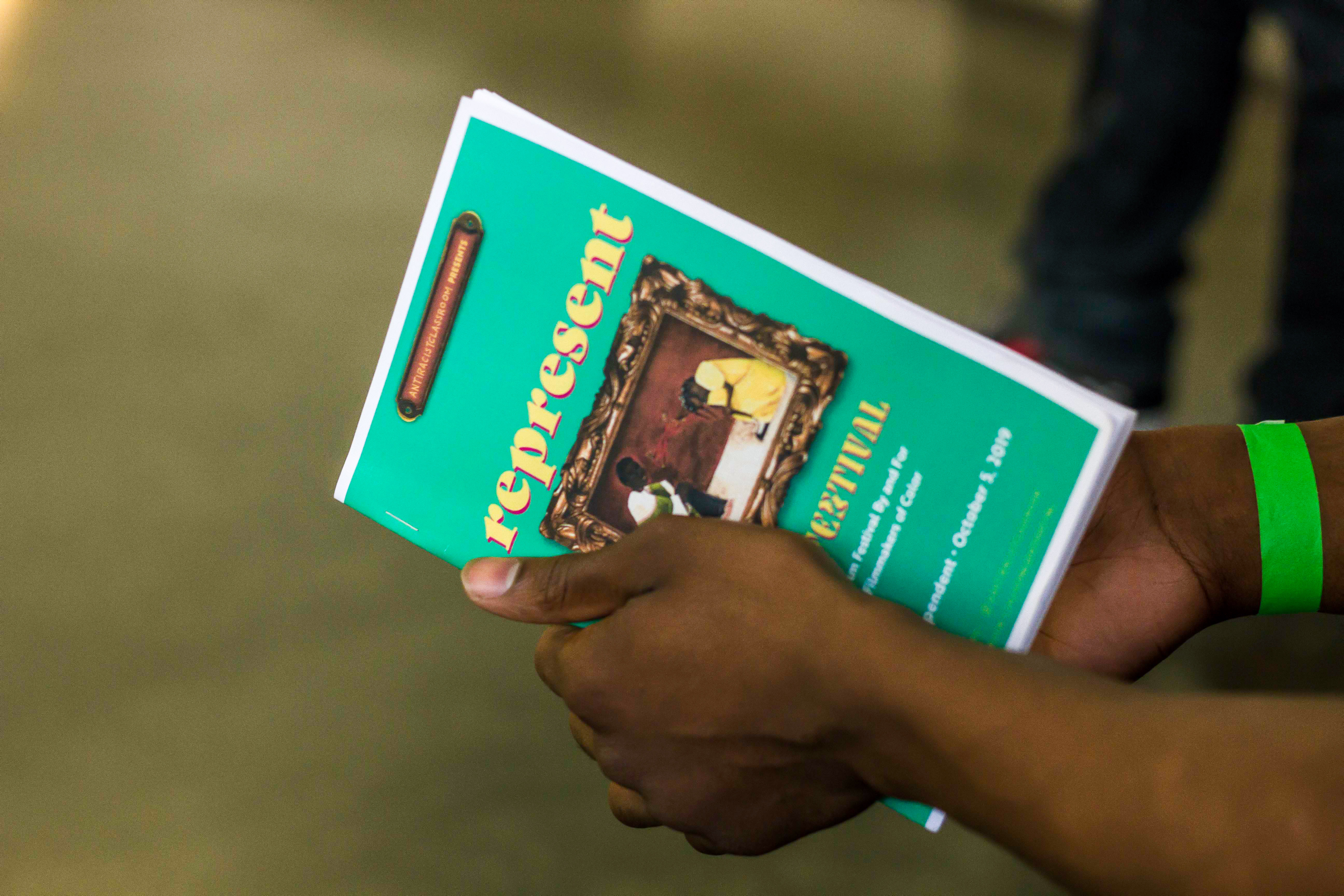
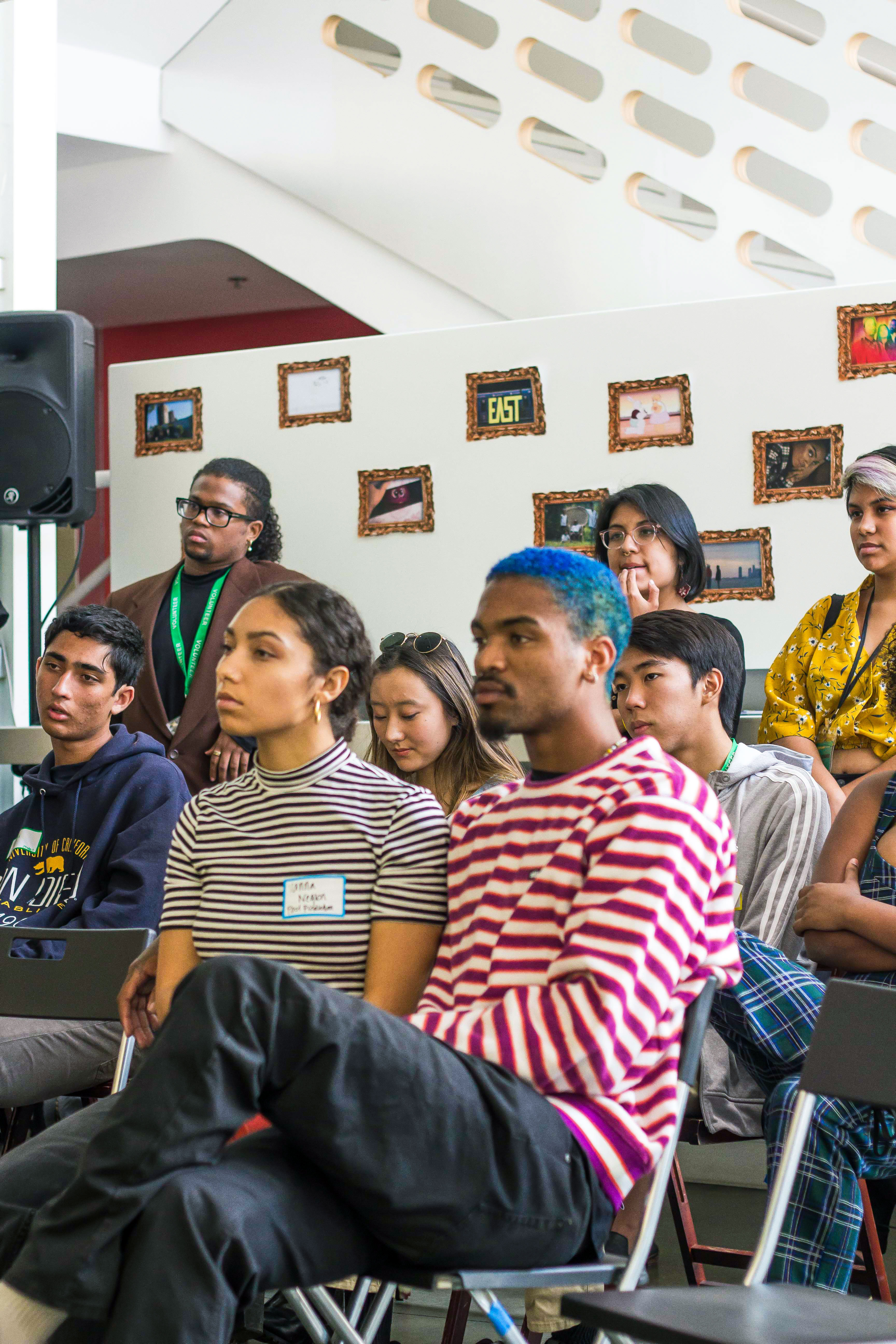
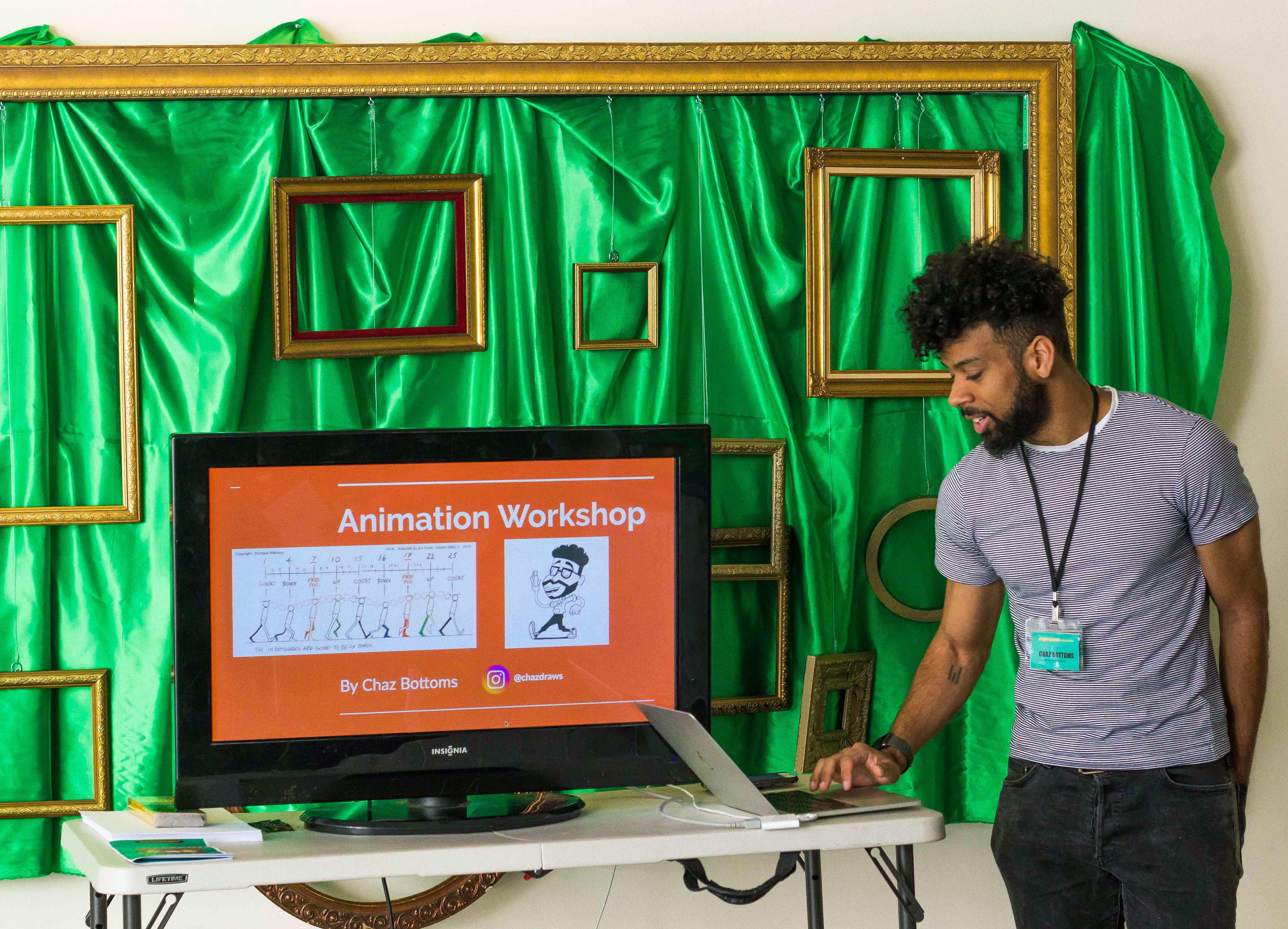
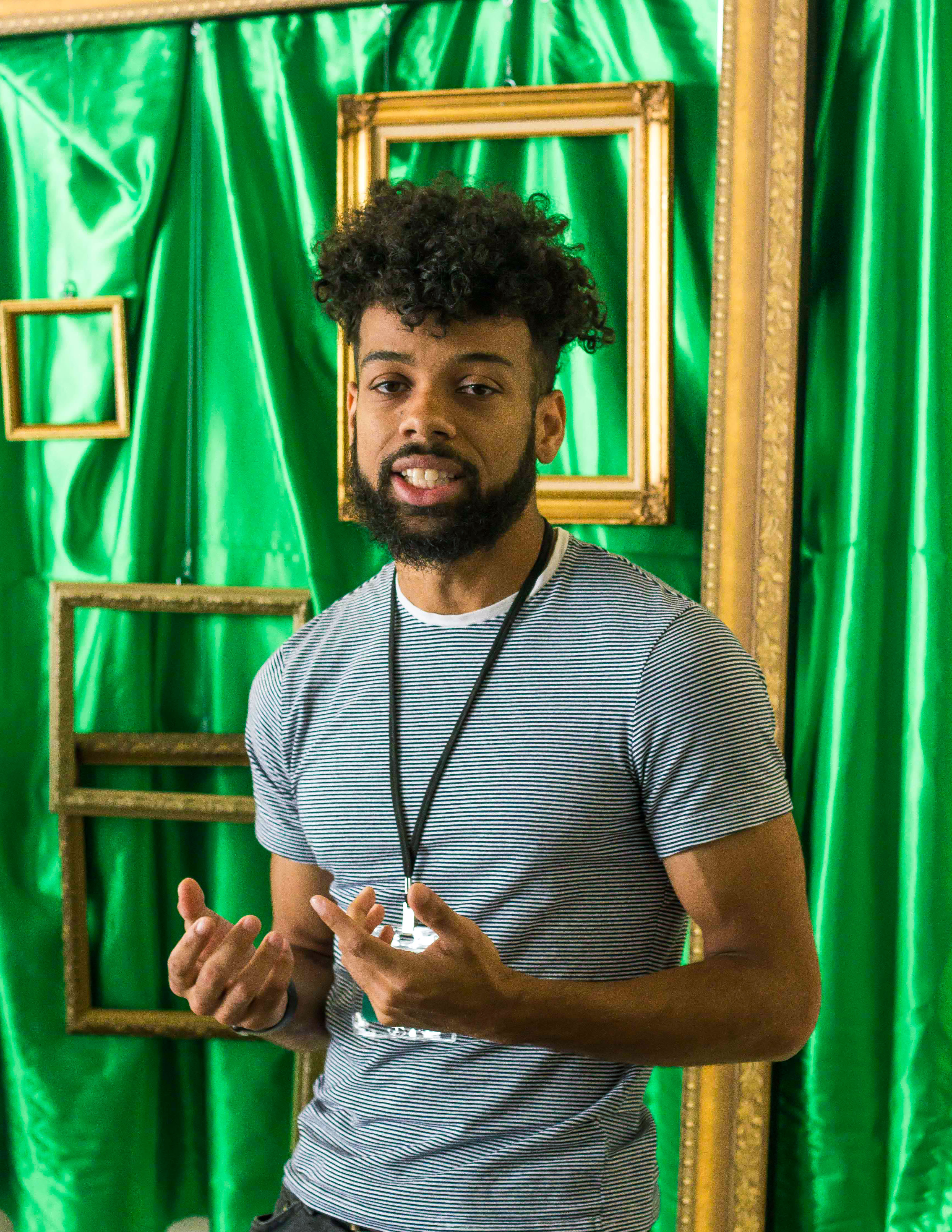

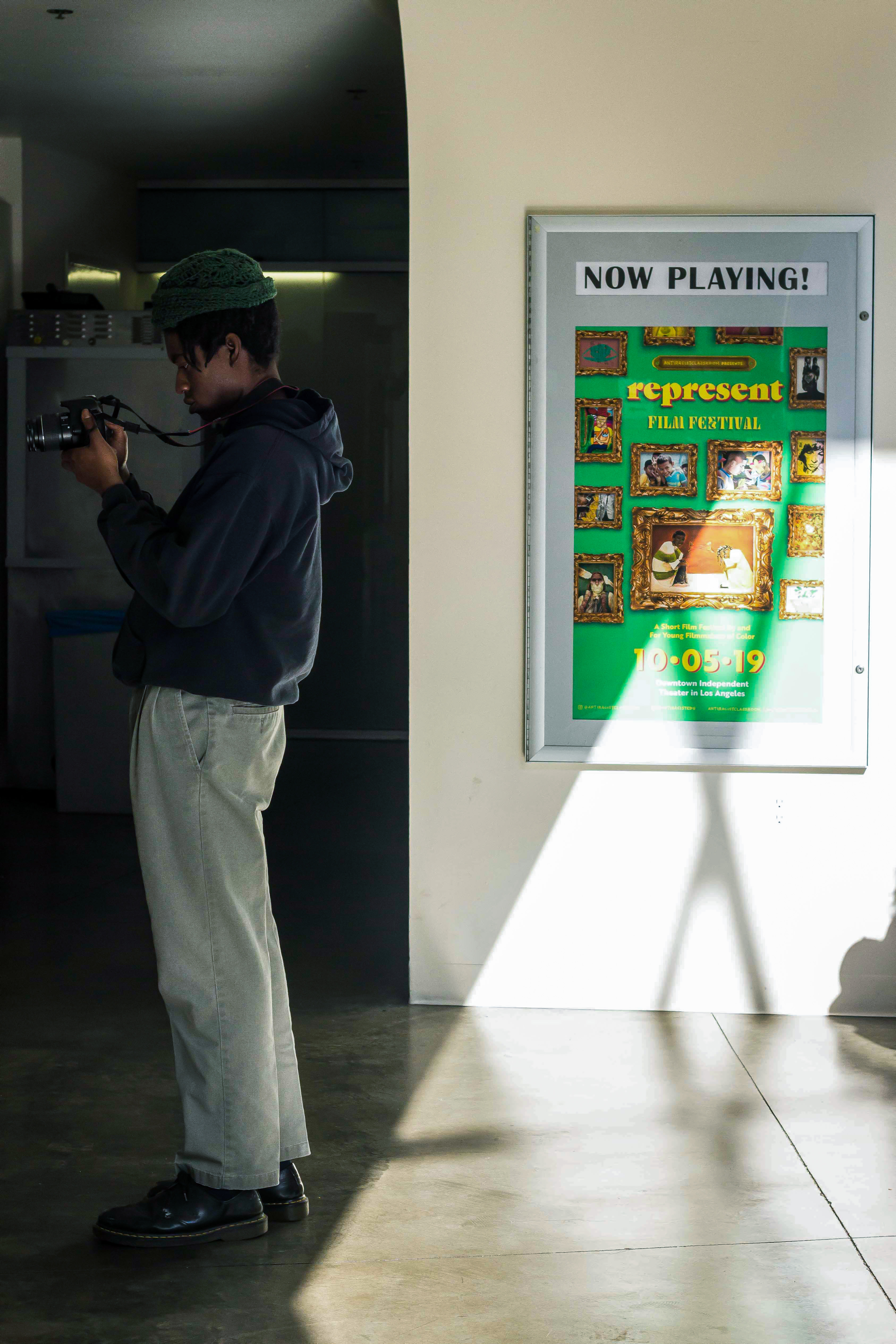


Photos by Cara Taylor and Jocelyn Phan
Event
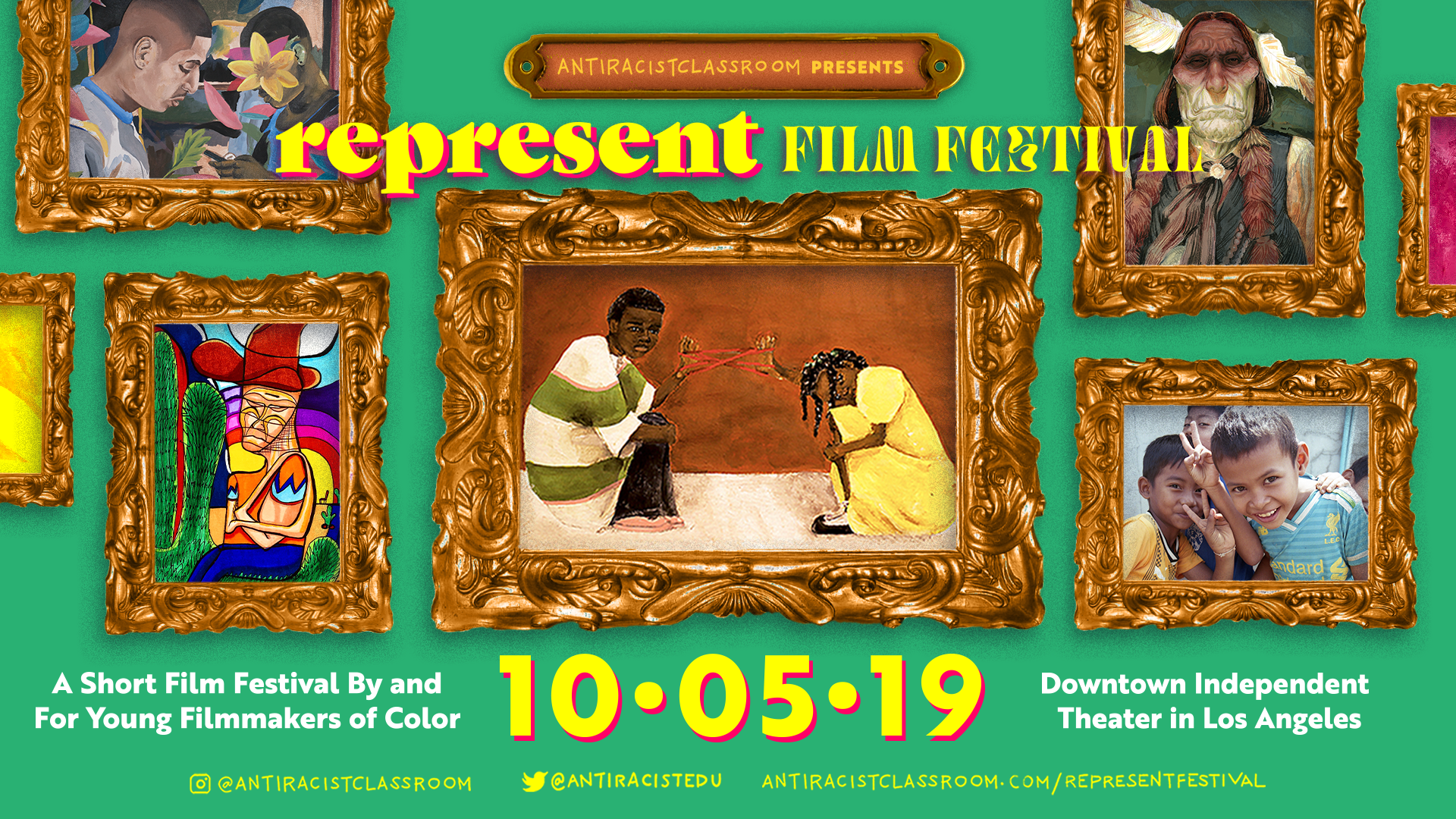
Represent will be hosted on Saturday, October 5th 2019 at Downtown Independent Theater in Los Angeles, California.
The festival will include a day-long program, presenting films from three genres—narrative, animation and documentary—followed by curated panel discussions that shift the narrative toward one that encompasses the wealth of talent, creativity, and diversity we seek in this field.
↳ Purchase Tickets
↳ Festival Schedule
↳ Volunteer
↳ Call For Work
Inspiration


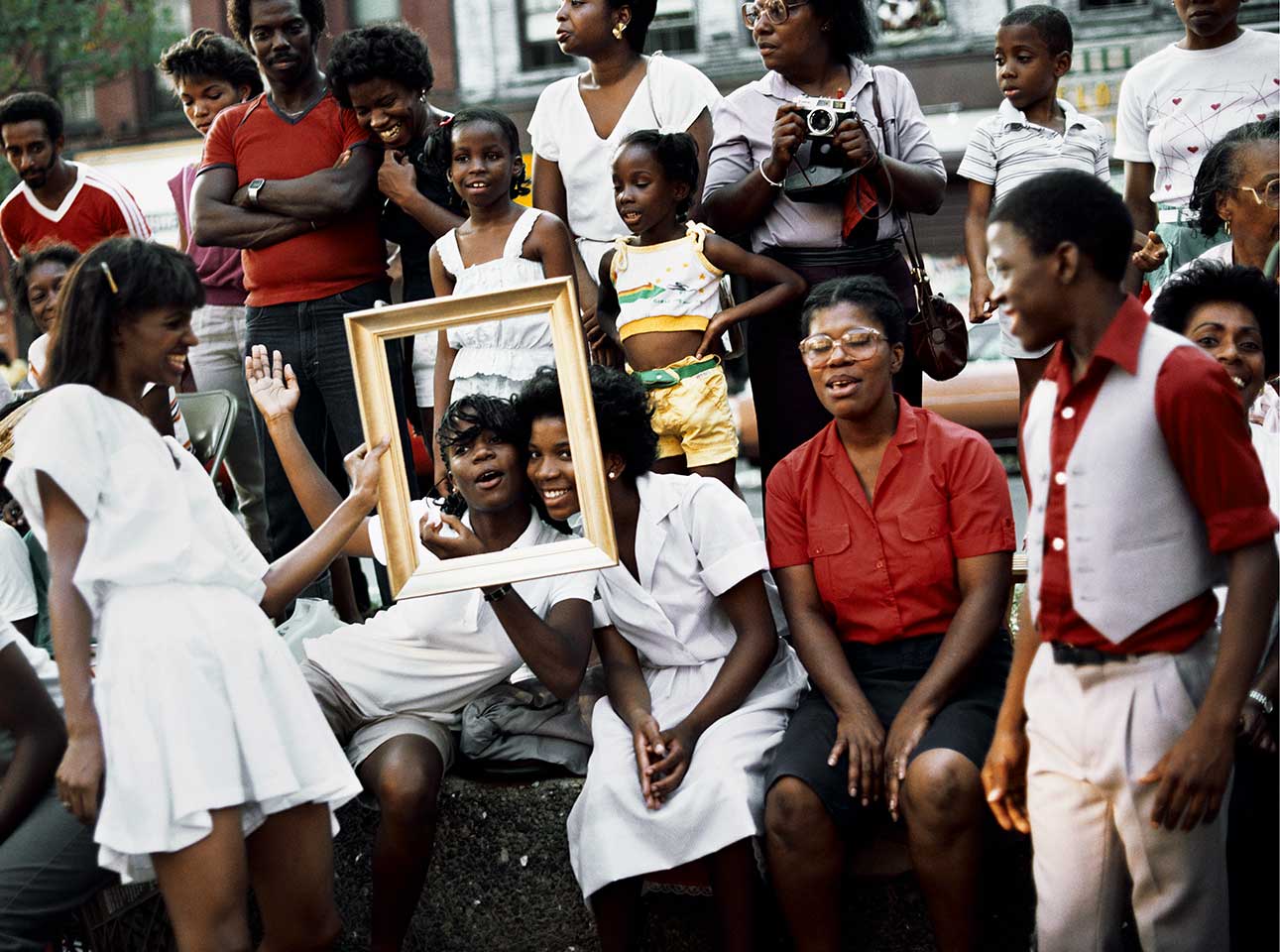
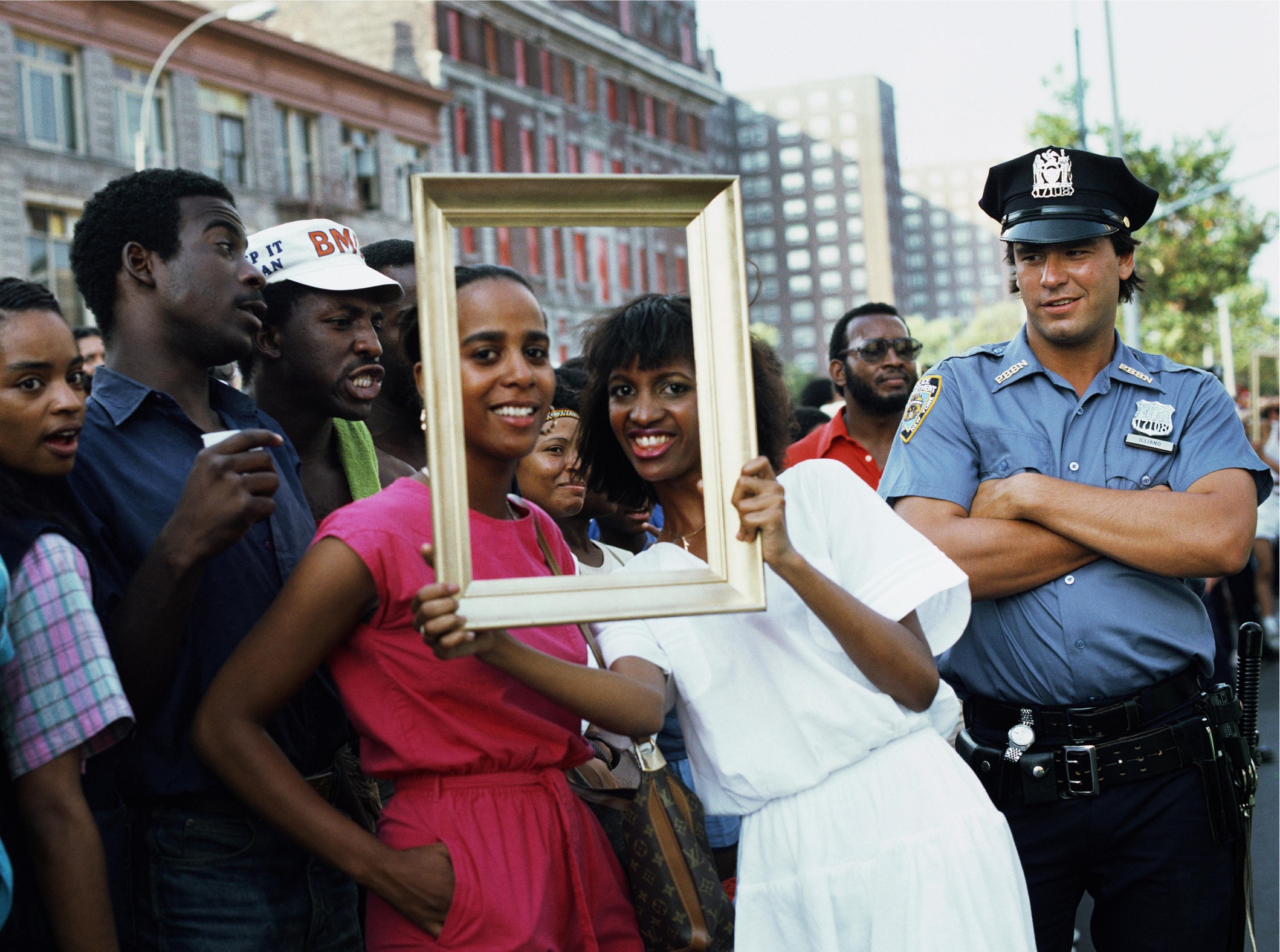


Represent Film Festival is immensely inspired by the performative art piece “Art Is..” by Lorraine O’Grady. O'Grady performed this display in response to being told that "Avant-Garde art doesn’t have anything to do with black people". She went around the African American Day Parade with antique gold frames, framing the many characters and stories that resided in the festival. Her mission was to prove that art is subjective and whatever you want it to be. Art is culture, history, visibility. That WE'RE the art. This is everything that Represent Film Festival stands for and hopes to frame a conversation around; to enforce that audiences of color have a right just as much as anyone else to be considered as subjects of art.
Sponsors
The Antiracist Classroom would like to thank Star In You, ArtCenter Film, ArtCenter’s Humanities & Sciences Department and ArtCenter Dialogues (A Toyota Motor Corporation Endowed Series) for their generous financial and community support in making this event a reality.
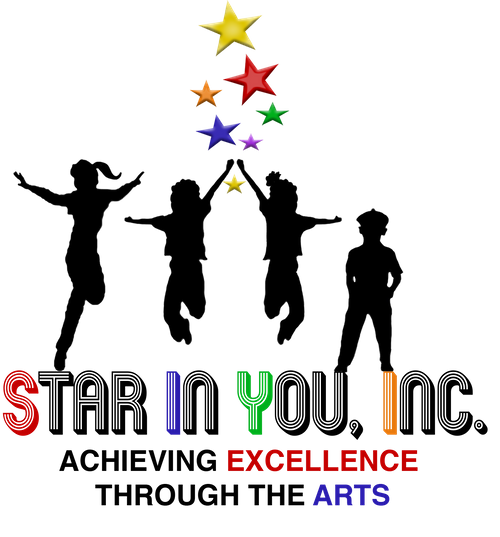

Submissions
We invite filmmakers of color between the ages of 16 - 25 to submit short films that center PoCs as creators and subjects. This may include films that reflect you and/or your collective identity to push the limits of typical depictions of PoCs in film, depictions which are often mischaracterized, racist, or reliant on traumatic histories.
While the content of submissions doesn’t need to explicitly focus on the topic of identity, who we are inherently shapes our work, so we welcome films that explore identity in varying degrees. Do you have a film that portrays an ideal reflection of your cultural, ethnic, or linguistic heritage? Are you working on a project that counters the prevailing interpretations of identity or culture we see around us? Are you a creator who has consciously cultivated diversity and inclusion throughout your filmmaking process? Show us how you choose to reflect yourself in your work.
Have any questions regarding your submission? Email antiracistclassroom@gmail.com
Requirements & Eligibility
- Productions must be led by people of color; we understand that filmmaking is a collaborative practice that requires teams of people with many roles and understand that there are bound to be crews comprised of people with many different identities. We invite diverse crews to submit work and will prioritize those led primarily by crews of color.
- Submissions may be located within the United States or Internationally.
- Films will be selected based on excellence in story, relation to the theme of “shifting the narrative,” production quality, and creativity/originality.
- Films must not exceed a running time of 25 minutes.
- Works-in-progress will not be admitted.
- There is no limit to the number of films you can submit. Please fill out separate entry forms for each film.
- All films must be submitted in English or with English subtitles.
- There are no limitations on films that have already been previously showcased or screened.
Entry Fees
There are none!
Deadlines
- Submissions Open – June 10th, 2019
- Regular Deadline – July 1st, 2019
- Extended Deadline - July 21st, 2019
- Notification Date – September 5h, 2019
Meet Our Judges
Aniya Wolfe, 17

Filmmaker Aniya Wolfe is a visionary transcending boundaries internationally. Aniya has directed, written, produced, and edited several projects including her own award winning full length feature film, Beyond My Skin. This thought provoking film addresses the various challenges and issues facing today's youth. In 2015, Wolfe launched Beauty Scene Productions, LLC. after recognizing the power in visuals and sound. She believes film can be used as a tool to expand perspectives. Despite her age, Since moving to LA from Philadelphia with her family in 2016, she has directed episodes of the Google web-series GodComplx, shadowed amazing sets like Grownish and Nike, and has worked on projects for artists like Bianca Ryan, Nathan Davis Jr and Tim Johnson Jr. from “The Four”.
Christina Xing, 20
 Christina is a 20 year old Asian-American director, represented by Adolescent Content. She has graduated from Interlochen Arts Academy for Motion Picture Arts and is currently studying Directing at Art Center College of Design. Born and raised a small peach from Birmingham, Alabama. She’s gotten to chase cowboys, befriend sheet ghosts, slow dance with brooms and meet the man on the moon, all thanks to her ongoing friendship with the cinema. She has made several award-winning films and music videos that have been featured on outlets like the FADER, Refinery 29, OUT Magazine, The Gay Times and screened at several Oscar-qualifying film festivals all over the world. She strives to make Cassavetes for people of color. She also strives to keep her nose clean and to eat more veggies.
Christina is a 20 year old Asian-American director, represented by Adolescent Content. She has graduated from Interlochen Arts Academy for Motion Picture Arts and is currently studying Directing at Art Center College of Design. Born and raised a small peach from Birmingham, Alabama. She’s gotten to chase cowboys, befriend sheet ghosts, slow dance with brooms and meet the man on the moon, all thanks to her ongoing friendship with the cinema. She has made several award-winning films and music videos that have been featured on outlets like the FADER, Refinery 29, OUT Magazine, The Gay Times and screened at several Oscar-qualifying film festivals all over the world. She strives to make Cassavetes for people of color. She also strives to keep her nose clean and to eat more veggies.Jalena Keane-Lee, 24

Jalena Keane-Lee is a Director, DP, and Producer, dedicated to democratizing storytelling through uplifting underrepresented voices behind the scenes and in front of the camera. Jalena is the co-founder of Breaktide Productions, an all women of color video production company and has directed and produced national campaigns for clients like Nike, Bright Pink, and THINX, as well as producing original short films. She is a 2018 NeXt Doc Fellow and a 2018 Sally Burns Shenkman Woman Filmmaker Fellow at the Jacob Burns Film Center, which has supported shorts that have premiered at SXSW, HotDocs, and Sundance. Jalena is directing a documentary short supported by Pacific Islanders in Communications that highlights the mother daughter relationships of the Ku Kia’i Mauna, native Hawaiian activists standing for their sacred mountain, Mauna Kea. Jalena is currently in production directing her first documentary feature following a young menstrual activist fighting to end the tampon tax co-produced by Stick Figure Productions.
Redamo Rosa, 18
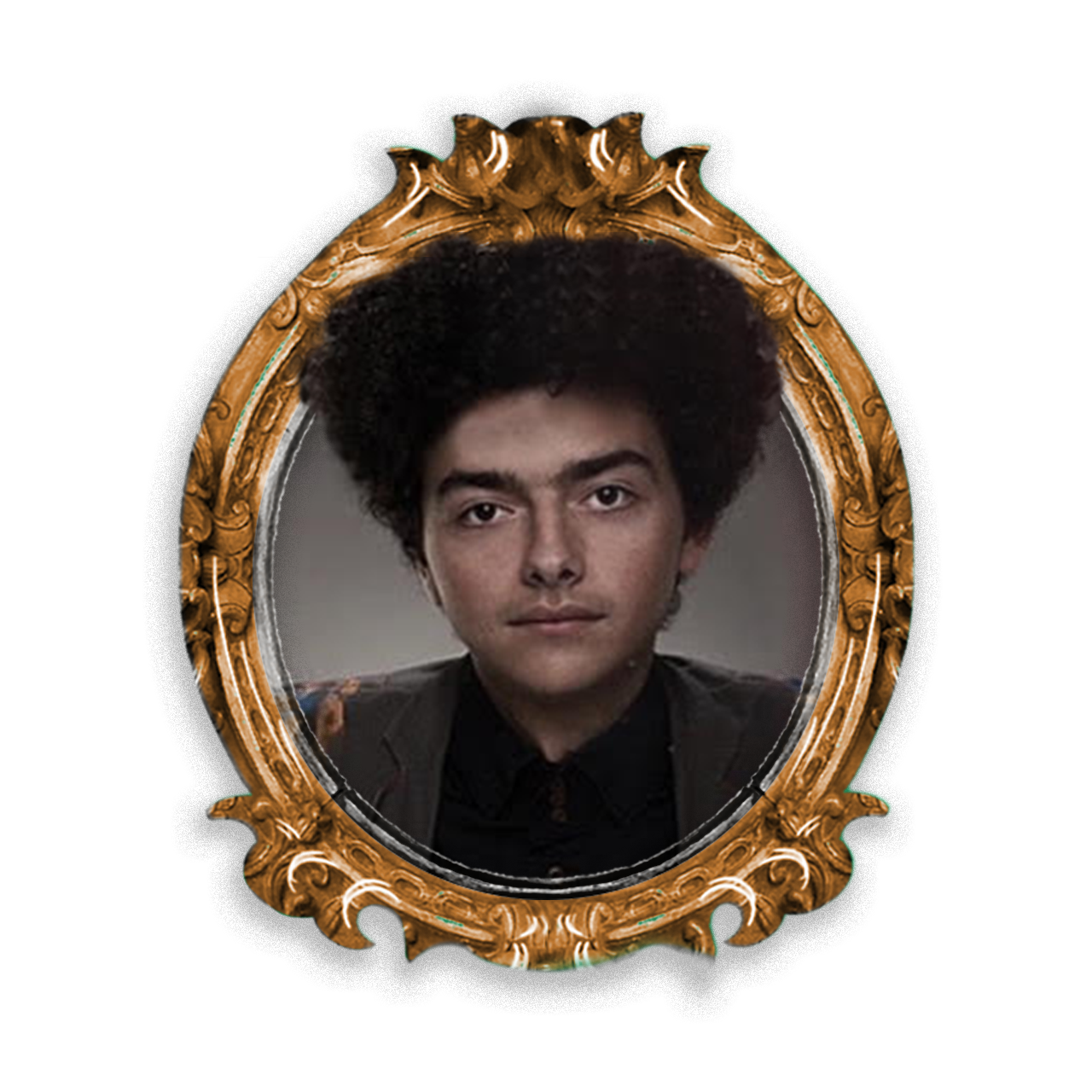 Born in LA and raised both in Puerto Rico and in LA, Redamo Rosa has had a very diverse view on his own culture. Being from a very underrepresented part of the world but also living in one of the most famous cities in LA, Hollywood, he is constantly frustrated with the lack of diversity he sees in the film world. Puerto Rican’s really never get a chance to be in films and rarely are highlighted in behind the scenes. When Puerto Rican actors do, they never are playing Puerto Rican’s, they mostly play Mexicans. Puerto Rico is sadly still a colony after it was forcefully taken by America so Redamo feels a need to represent his culture and highlight Hispanic main characters. In the third grade, Redamo started making his first few films, soon it became an obsession, until now it’s a job. He creates a wide variety of platforms from Webseries, short films, feature films, short stories, photography, screenplays, music videos and so on. Most recently he created an animated music video for Sony Music Latin titled: Tu Lado Oscuro. The animation features an entirely fictional world with an all Puerto Rican cast of characters along with the animators who are based in Bogotá, Columbia.
Born in LA and raised both in Puerto Rico and in LA, Redamo Rosa has had a very diverse view on his own culture. Being from a very underrepresented part of the world but also living in one of the most famous cities in LA, Hollywood, he is constantly frustrated with the lack of diversity he sees in the film world. Puerto Rican’s really never get a chance to be in films and rarely are highlighted in behind the scenes. When Puerto Rican actors do, they never are playing Puerto Rican’s, they mostly play Mexicans. Puerto Rico is sadly still a colony after it was forcefully taken by America so Redamo feels a need to represent his culture and highlight Hispanic main characters. In the third grade, Redamo started making his first few films, soon it became an obsession, until now it’s a job. He creates a wide variety of platforms from Webseries, short films, feature films, short stories, photography, screenplays, music videos and so on. Most recently he created an animated music video for Sony Music Latin titled: Tu Lado Oscuro. The animation features an entirely fictional world with an all Puerto Rican cast of characters along with the animators who are based in Bogotá, Columbia.Sade Ndya, 19
 Sade Ndya is a visual artist based in Pasadena, CA who specializes in cinematography and photography. At only 19, she's opened her own freelance studio space called The Red Futon, where she actively shoots narrative films, music videos and branded photo content. Through her studio productions, she is actively dedicated to providing safe creative spaces for POC's and women to carry out their personal visions behind and in front of the lens. Thinking the world was hers as soon as she owned her first DSLR, Sade began by just making films about people with stories to tell. All of these moments collectively becoming a part of her and who she is, shaping her knowledge and awareness of the world. She wants to promote this sense of self-actualization with her work. To help people become proud of who they are, where they came from, and what they believe in. Sade is currently studying at Art Center College of Design, with an upcoming BFA in Cinematography and Film Production.
Sade Ndya is a visual artist based in Pasadena, CA who specializes in cinematography and photography. At only 19, she's opened her own freelance studio space called The Red Futon, where she actively shoots narrative films, music videos and branded photo content. Through her studio productions, she is actively dedicated to providing safe creative spaces for POC's and women to carry out their personal visions behind and in front of the lens. Thinking the world was hers as soon as she owned her first DSLR, Sade began by just making films about people with stories to tell. All of these moments collectively becoming a part of her and who she is, shaping her knowledge and awareness of the world. She wants to promote this sense of self-actualization with her work. To help people become proud of who they are, where they came from, and what they believe in. Sade is currently studying at Art Center College of Design, with an upcoming BFA in Cinematography and Film Production.

We’re extremely proud to announce our official 2019 film selections for Represent Film Festival!
We’d like to extend a big thank you to the 100+ talented filmmakers from around the globe that were involved in submitting for our call for work this past July. You made us cry, you made us laugh, but most importantly, you made us feel seen. We look forward to sharing your stories with the world.
Represent Film Festival with be hosted on October 5th 2019 at Downtown Independent in Los Angeles, California. To purchase tickets for the festival, visit this link.
Animation Screening
11:30AM
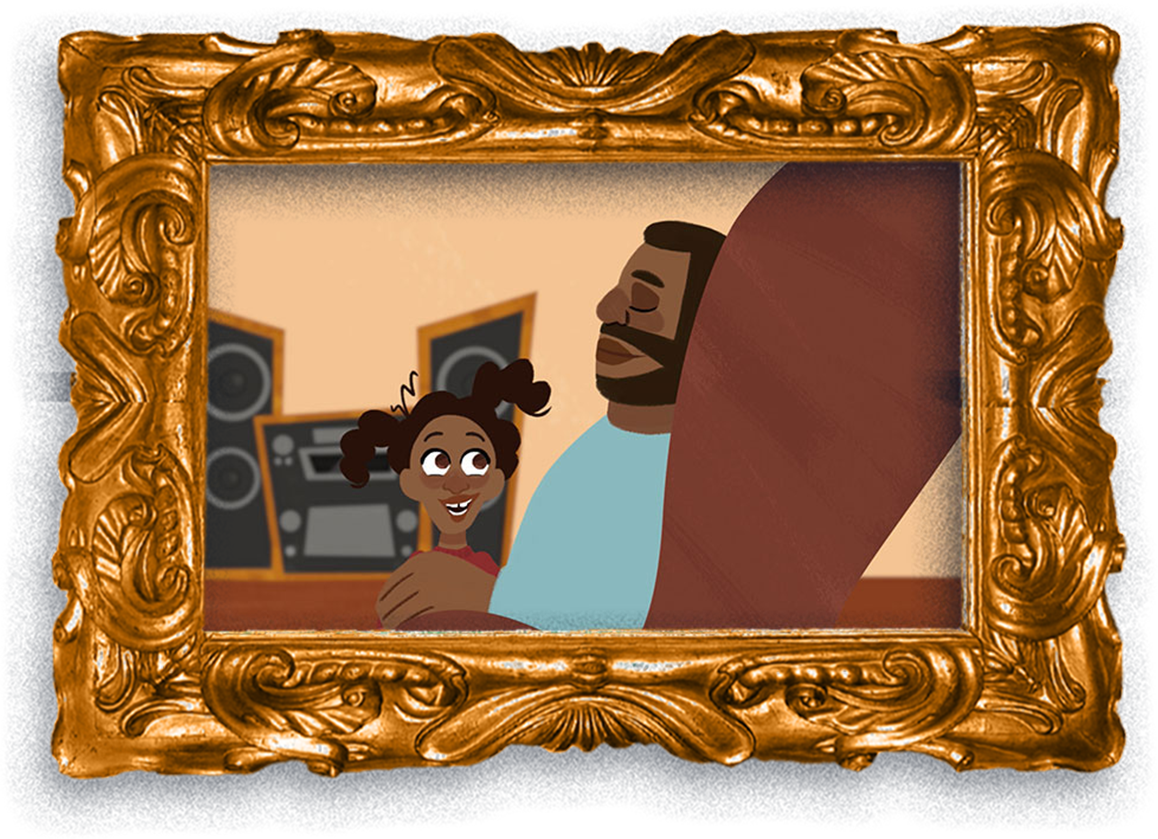
Lazy Day
Alicia Robinson, New JerseyRuntime: 6:46
Based on real life events, Lazy Day tells the story of how music influences the relationship between a tired dad and his energetic 5 year old daughter.
How does your film shift the narrative?
“My film focuses on the relationship between a black father and his daughter. In the media, black fathers are mostly depicted as absent or never shown spending time with their kids and that was a certain stereotype I wanted to diminish within the film. This film also deals with 9/11, an event that is often tied to islamaphopia. I wanted to shift that narrative to how it affected the families rather than hate propaganda, which is usually the case for many 9/11 involved films”

Re-Gifted
Eaza Shukla, IndiaRuntime: 2:15
A decorative object struggles to lead a meaningful existence as it gets stuck in the cycle of re-gifting.
How does your film shift the narrative?
“We often let the way others perceive us affect how we view ourselves. The film attempts to shift the narrative towards the importance of seeking within ourselves what makes us special, rather than waiting for outside validation.”

Idyll
Shana Dixon, New JerseyRuntime: 4:59
A mother moth finds a magical garden.
How does your film shift the narrative? “Idyll is the relationship between mother and daughter, while a mother struggles through addiction. I made the moth addicted to nectar rather than a human person because this way more people can relate to the story through their own experiences.”

Cosmos Express
Mocong Yuan, ChinaRuntime: 6:35
A girl decides to leave this world. Her body and soul have one last conversation as she walks through the path she has been for one last time.
How does your film shift the narrative?
“It has a cultural view of the suicidal topic and uses the Chinese language metaphorically with different culture background subtext.”
![]()
Save The Date!
Mari Carlson, CaliforniaRuntime: 4:20
"Save The Date!" is an animated music video celebrating the beauty of romantic love between women. Please join our protagonist Bunny, a disorganized but loving rabbit, as she zips across town to propose to her girlfriend Poppy.
How does your film shift the narrative?
“This film was a passion project and my goal was to create a film that was made by and for LGBTQ individuals. I wanted to change the cultural perception of queer relationships and show that they could be sweet, loving, and appropriate for all ages.“

Do You Remember the Sun on the Green Horizon?
Leili Arai Tavallaei, TexasRuntime: 3:44
How do you remember something so precious yet so far from reach? And how do you cope with the realization you're forgetting pieces of it? Do You Remember the Sun on the Green Horizon is the unending and paradoxical search for adolescence as we grow older.
How does your film shift the narrative?
“Am I Enough?’ is an experimental animation about imposter syndrome. As someone who identifies as mixed race, I fall into a racially ambiguous category where my identity is constantly being challenged. I am neither fully Iranian, nor Japanese, and though I’m white passing to POC with darker complections I’m neither fully accepted by nor benefited from the white majority. ‘Am I Enough?’ takes place in a single moment, a repeatable, cyclical moment, that grapples with the emotional flood of uncertainty and acceptance that I myself experience everyday.“

Taku & Mama
Clarisse Chua, SingaporeRuntime: 4:32
A story about a boy, born with a strange appearance, and his busy mother.
How does your film shift the narrative?
“The film tells the story about a boy, born with the appearance of a monster and his mother. Before facing the discrimination of the people outside, he must first accept and understand himself.”

Kaeru
Denise Chan, CaliforniaRuntime 5:38
"Kaeru" is a 2-D animated short film about a darkroom photographer named Mitsuko who struggles with self-doubt. She has to rediscover her love for art and remember why she started making it in the first place.
How does your film shift the narrative?
“Kaeru is about a photographer named Mitsuko who struggles with self-doubt. In the film, photography represents viewing the world through a lens. When your self-perception is negative, everything becomes ugly and distorted, the way that Mitsuko’s photos do in the film. As kids, we don’t worry about how our artwork turns out. We aren’t as scared about the way our work is perceived, or the way it reflects on our identity. The message of the film is that we should remember the way we viewed the world as kids— not through the many filters of self-doubt that society puts on us as we grow up, but with the carefree perspective of a child just making art to have fun. Creativity is universal and at its best when it’s boundary-less.“
My Other Half
Chantal Feitosa, New York CityRuntime 3:02
Living between the United States and Brazil, a white mother and her biracial daughter share very different views on what it means to shape and preserve identity across family generations.
How does your film shift the narrative?
“My Other Half merges techniques in animation, collage, and live action to discuss the complexities of shaping identity in U.S. as a biracial, first-generation Brazilian immigrant. I am deeply invested in creating works that are not only autobiographical but that also capture the essence of the many women of my life who have left a lasting impression on my experiences and development as bi-continental woman. I believe that narratives like the ones told through “My Other Half” are essential to uplifting the voices of the growing number of multicultural and non-white individuals in America—especially the ones who currently struggle to attain a sense of agency over their own bodies and future histories.“

Hero
Yu Jen Chen, TaiwanRuntime: 6:25
As an Asian girl, there are many fears of living in New York. The protagonist in my story falls into a parallel world of New York, facing all the monsters that represent my fear and negative thoughts. After the journey, the protagonist started to change what she thinks about other people and herself, she knows she defeat her fear, the monsters, every day, therefore, she is braved enough to be considered a hero.
How does your film shift the narrative?
“Although I don't want people to read it, the characters on all the signs are real, but are in a font, Zhuyin, only used in Taiwan. That font was invented after Japan lost WW2, and was based on Japanese characters, so it is easier for Taiwanese people to understand. I used Zhuyin to show my identity because this is a story of me leaving Taiwan and coming to New York. For my story, an egret (which I named Phegret) comes and flies Ansa back to the real world. Egrets are often seen in Taiwan and rainy is common weather in Taiwan. Therefore in New York, every time it's rainy I think of my home and feel calmer. Also, there is a popular oldies dialect song in Taiwan called "The Dark Day". The song reminds us of being brave when we are in difficulties.“

Someday
Lubna Abdein, MissouriRuntime: 2:44
A young girl overcomes an obstacle in order to fulfill her dreams of becoming a dancer.
How does your film shift the narrative? “My film deals with a young south asian girl dreaming of dance. The whole dance in an abstract piece dedicated to honoring the beauty of the south asian dance style. Not only does it deal with dance and culture, but it also appeals to a whole other disabled audience.“
WORKSHOP: Animating with Chaz Bottoms
12:30 PM

Chaz Bottoms
Cleveland, Ohiowww.chazbottoms.com
Chaz Bottoms is an award winning director and animator based in Los Angeles, CA. Originally from Cleveland Ohio, Chaz holds a BFA in Animation from DePaul University in Chicago, IL. He is the owner of CBA Studios, an indpendet remote animation studio that specializes in short films, music video, and narrative content. Our work has appeared in Rolling Stone, Toonboom , AfroPunk , Vibe Magazine , ImFromCleveland.com and Saint Heron. He has worked with musical artists such as Chip tha Ripper, Quentin Miller, Rhetorik, HitBoy, TeaMarrr, and Lorine Chia. Additionally, his short films have premiered globally, winning multiple awards. His 2016 he film Introvert was apart of Season 6 of ABFF Independent and is currently airing on AspireTV. His 2017 film All Kids Go to Hell has premiered at Cannes, Cleveland International, on ToonBoom and AfroPunk and was featured in an Art Gallery during Summer 2018 in Taiwan. In 2018 he co-directed The Indies: An Animated Short , a film that raised $50,000 on Kickstarter to produce, which premiered at CTNExpo 2019.
How do you shift the narrative?”Shifting the narrative to me means progressing the industry and creating opportunities that currently aren't there. Having an independent animation studio, I work with a wide variety of diverse creators to bring their stories to life. Our studio highlights black and brown studios and characters from all walks of life.”
Documentary Screening
2:00PM

GIRLS
Kiki Shervington-White, The United KingdomRuntime: 5:38
GIRLS is a documentary based on the experiences of Black Women and Girls living in the UK. Through private conversations and camera observations, this short film captures and explores the paradox of what it means, as Black Women Girls, to indeed 'be' ourselves in the context of British society.
How does your film shift the narrative? “This project is quite a personal response to how I have felt not only during my university journey, but throughout the many institutions, and spaces I’ve moved through, throughout my life.“

MACROCOSM
INV4DER, CaliforniaRuntime: 7:58
A short Allegorical film directed, shot and edited by INV4DER focusing on the Oakland Art community and what it means to be part of something larger than yourself.
How does your film shift the narrative? “MACROCOSM shifts the narrative of my own cultural heritage by focusing on the importance of being apart of something much larger than yourself through the shared power of creation. As a Bay area native and POC it was important to me to be able to create a film that captured the true spirt of the artistic community that I grew up with that I was beginning to see die as gentrification began to take hold. In this sense this idea of capturing became my way of proving my community existed even if the narrative of Oakland as strong hold for revolutionaries for POC changed.“

The Ones Who Bought Buschwick
Educational Video Center, New York CityRuntime: 22:30
A group of 13 youth from around New York City set out to explore gentrification and its effects on residents, businesses, and the culture of Bushwick, Brooklyn. First-time filmmakers tell the story of Josefina and her family, who lived in Bushwick but were forced to sell their building and bodega and move to East New York, because of rising costs. To help tell the story, Youth Producers talk to a range of experts and community members to find the history of Bushwick and the context of urban change in New York City.
How does your film shift the narrative?
“This film explores how the MTA disenfranchises communities of color as well as people with disabilities and the poor.”

A Beautiful Presence
Luisa Betancur, ColombiaRuntime: 9:39
A Beautiful Presence is a series of environmental portraits. It is an exploration of the impact a place has on a person and vice versa. The process of shooting these portraits became so much about the conversations around the place and its influence on the people that were being photographed that Lester decided to make short documentaries to accompany the portraits.
How does your film shift the narrative?
“The people that i interview are people like me and they represent viewpoints and perspectives that everyone can see.“

Translucent
Azzan Quick, North CarolinaRuntime: 16:38
Translucent, a short film, is a self portrait of Azzan stumbling their way through self discovery. Using compelling conceptual scenes and verite footage, Azzan documents their struggles and triumphs exploring their own gender identity and figuring out unapologetic ways to explain it to friends and family. As Azzan moves into the notion of being comfortable in their own skin, the people around them deal with the cognitive dissonance of my change. They compare this moment to a funeral, meaning the people involved in their life are slowly having to mourn the person they perceived Azzan as for the person they actually are.
How does your film shift the narrative?
“My film is a self portrait about my journey through identity. It shows my evolution to identifying myself as a trans non-binary person of color and how I’ve tried to unapologetically navigate through that while dealing with traditional family and friends in the south.”

EAST: A Relationship
Noor Khan, CanadaRuntime: 2:24
'EAST': A Relationship is primarily a short film about how an individual's relationship with people shaped her relationship with the land. The logo reads, 'EAST' alif / ya / seen / tah, in Arabic kulfic script. EAST, is where she comes from, the Middle East and South Asia, and it is also her location in relation to Toronto, i.e. Scarborough. Her relationship to EAST, both locations, have impacted her social standing, and social community. Through voice-over, she communicates the crisis of having been robbed of a homeland, while also settling and being complicit of the destruction of the home of Indigenous peoples. The heavy imagery of graveyards depicts the years in her life where she lost key members of her family. While burying them in the ground, she realized that her responsibility as a settler was critical, since there was no return home for herself and her community. EAST is a letter to her South Asian community to try to part from the past, and look at our current lives, where we (need to learn to) share the land.
How does your film shift the narrative?
“EAST: A Relationship is primarily a short film about how an individual's relationship with people shaped her relationship with the land. The logo reads, 'EAST' alif / ya / seen / tah, in Arabic kulfic script. EAST, is where she comes from, the Middle East and South Asia, and it is also her location in relation to Toronto, i.e. Scarborough. Her relationship to EAST, both locations, have impacted her social standing, and social community. Through voice-over, she communicates the crisis of having been robbed of a homeland, while also settling and being complicit of the destruction of the home of Indigenous peoples. The heavy imagery of graveyards depicts the years in her life where she lost key members of her family. While burying them in the ground, she realized that her responsibility as a settler was critical, since there was no return home for herself and her community. EAST is a letter to her South Asian community to try to part from the past, and look at our current lives, where we (need to learn to) share the land.”
WORKSHOP: Documentary Filmmaking Brittney Janae
3:05 PM

Brittney Janae
St Louis, MOwww.brittneyjanae.com
Brittney is a photographer, videographer and video editor based in Los Angeles, CA. Originally from St. Louis Missouri, She is the Co-Founder of LoreneJanae , a makeup and photography agency highlighting women of color. Brittney's passion stems from the desire to tell compelling and captivating stories. She believes that the beauty in everyones derives from their story and her goal is to show that through her gift in photography and videography. She focuses on creating digital branded content for influencers as well as small independent companies. She has been able to work with influencers such as Tiffany Haddish, Eve, Common, Jay Ellis, Jesse Williams, DL Hughley and Snoop Dogg and companies such as Shea Moisture, TV One, Issa Rae Productions and RCA Inspiration. Her mission is to create films that tell the stories of people around her through their everyday struggles. What makes Brittney so unique is her clean aesthetic and her eye for capturing in such an emotional and powerful way. Her goal is to continue to uplift and inspire new filmmakers, more specifically black female filmmakers by giving back through mentorship and creating a safe space to grow in this field, using her journey in filmmaking as a catalyst to show others that they can do it!
How do you shift the narrative? “Shifting the narrative means telling our own stories and having control over how our stories are being told in front of or behind the camera. I’ve shifted the narrative in my filmmaking process by really opening the door for black women and minorities in my community. I didn’t see many black women being represented in certain spaces and wanted to change that. I started Black Women Create to allow people to know that black women are here and we do create, whether you want to believe it or not and whether you want to give us the opportunity to or not. You will have no choice but to see us.”
Narrative Screening
4:30PM

Do Turtles Swim in Maple Syrup?
Paul Daniel-Torres, CanadaRuntime: 11:15
Robbed of a chance for a better life by a racist thug. Latin-Canadian teen Tony Tenorio is sent on a journey where he must decide between succumbing to racial stereotypes or fighting to become more.
How does your film shift the narrative? “This film is about the urban Coloured Canadian experience, something that's not touched upon. It's about the children of immigrants who balance the identity of their parents homeland and of the country they were born in. And the film making shows that through an eclectic pace and style inspired by multiculturalism.

Justice Delayed
Janine Anne Uyanga, CaliforniaRuntime: 11:31
Ten months after the fatal shooting of his younger 12-year-old brother, Jay discovers that the police officer involved was not indicted. Losing trust in the legal system, Jay takes matters into his own hands, however, is torn between seeking vengeance or justice.
How does your film shift the narrative?
“The black experience in America is much more complex than it is originally accredited to. To live in a land where people love your “culture,” but disregard your basic human rights is ironic. America’s paradoxical ideals leave black people feeling helpless because we are targeted for our skin color, yet the moment we speak up, we are deemed “hateful terrorists.” This leaves me, a young black woman to ask myself if I’m going to be a “terrorist?” or am I going to turn away, be silent and be complicit? I have noticed that recently the use of black lives on screen feed into a “trauma-porn” fetish where black pain is capitalized upon and the constant “injustice solved by protests” storyline has been overdone. What happens when the protests don’t do anything? What happens when you lose faith in the system? Lose hope. What do you do? I decided to shift that narrative and focus more on the impact of the injustices that are brought upon us. I find myself with our main character, Jay, stuck in the middle of this spectrum of Martin Luther King Jr. and Malcom X, both fighting for the same cause, but not knowing which approach will bring justice sooner. This mental battle of whether to strike back or not is a reality of the black experience. As a filmmaker, the strongest tool I have is my voice and I chose to shed light on the reality that I experience daily.he people that i interview are people like me and they represent viewpoints and perspectives that everyone can see.“

My Mother, Myself & I
King Yaw Soon, MalaysiaRuntime: 7:32
My Mother, Myself, and I is a Chinese coming-of-age short film consisting of four acts. Each act is a long take capturing the brief but intricate interaction between a single-mother and her son at the ages of 5, 10, 20, and 25 years old. These four mother-son moments offer a glimpse into their relationship and how it evolves across the years as they tread lightly on the issue of traditional Chinese family values and the social taboos of sexual infidelity and homosexuality.
How does your film shift the narrative?
“My Mother, Myself & I was inspired by my single-mother and my upbringing in South East Asia. I started writing it as a self-reflection on my Chinese culture and my mother’s love. The Chinese family culture, which is heavily influenced by the Confucian philosophy, emphasizes devotion to parents, emotional restraint, and authority. But where does love fit in to this ideology? Has love been sacrificed at the expense of Confucian ethics for centuries in Chinese families? A mother’s love is instinctual, unconditional, but it tends to be expressed very differently in a traditional Chinese family. It doesn’t consist of hugs or “I love you”. Words are constrained and sometimes it means shying away from the truth. Family members shield each other from the inconvenient truth and history in the name of love because we know how much the truth hurts. But what if that’s exactly the thing that pulls us apart? In this film, I explored the struggle of a son to behave in propriety in a traditional Chinese setting while coming to terms with the brokenness of his family, his mother’s unspoken love, and his own identity.“

What If Black Boys Were Butterflies?
DaeQuan Collier, New York CityRuntime: 3:38
While other boys can enjoy a childhood of freedoms, for many reasons, Black boyhood is a brief, complicated existence. WHAT IF BLACK BOYS WERE BUTTERFLIES?, is a non-linear experimental short film displaying what Black Boyhood is and what it ultimately could be.
How does your film shift the narrative?
“This film centers around an off-screen conversation between two black men after another black boy has been killed. As they reflect on the news, and as this conversation continues, they question what Black Boyhood is and what it ultimately could be.”

Tundra
Carol Nguyen, MontrealRuntime: 10:19
A mother struggles to cope with the loss of her missing daughter.
How does your film shift the narrative?
“Telling diverse stories without the conventions of Hollywood and the mainstream media.”

Mississippi River Princess
Camille Casmier, MissouriRuntime: 19:18
Two black sisters journey south along the Mississippi River to save their family's home and reconnect to their spiritual roots.
How does your film shift the narrative?
“I wanted to make a film that reflected my own Creole background-- from the Gulf of Mexico, to New Orleans, up the Mississippi River to Saint Louis and Chicago. I was inspired by films like Daughters of the Dust, Toni Morrison's novel Song of Solomon, and Jesmyn Ward's recent novel, Sing Unburied Sing, that use ancient Voodoo to grapple with reconstructing a muddled heritage. Recently, my great-grandmother’s home in the New Orleans 9th ward, mostly destroyed in Katrina, was sold by distant relatives. I wanted this film to act as a literal gris-gris bag, saving bits and pieces of my own heritage through the use of home video footage, the performance of my real-life sister, and literally returning to our homeland and the only property my family has ever owned: the House on Spain Street. Creole people and our strange religion, language, and looks are often cast aside as ridiculous or mystical, but these are the deep traditions that I grew up with, and I wanted to make a film that took that heritage seriously, and that could be shared with my own children when they ask where they came from.“ne can see.“

Kids Don’t Ride Bikes Anymore
Ganeesh Genus, FloridaRuntime: 10:01
A comedic drama following Ant and Dana, a struggling couple in Queens. The two go on a journey in search of a pregnancy test to see if their little family is getting an extra member. From bodega to pharmacy, they discuss the ever-changing neighborhood and the prospects of their life if they’re expecting.
How does your film shift the narrative?
“In KIDS DON'T RIDE BIKES ANYMORE, we attempted to depict the "real" New York, and not the one you usually see in movies. The culturally diverse, working class New York and the people of color that live there and their plights.“
Q&A: A Conversation with Morgan Cooper
5:45 PM

Morgan Cooper
Kansas City, MOwww.morgancooperdp.com
Morgan Cooper is a Los Angeles-based writer, director, and cinematographer with a unique voice, clear vision, and a passion for every aspect of storytelling. Cooper’s influences range from fine art, jazz, and hip-hop, to the works of photographers Roy DeCarava and Gordon Parks. His Midwest roots and wide array of experiences growing up in Kansas City, Mo., also resonate throughout his work. Having traveled extensively as a commercial director/DP, Cooper is now focused on what he loves most: narrative filmmaking with substance and purpose; telling the stories of those who are unrepresented, underrepresented, and misrepresented in film. He is represented by CAA for television and film, and by Chromista for commercial work. Cooper approaches every project with positive energy, curiosity, empathy, and an open mind. He has an expressive lighting style that is exceptionally sensitive to skin tones. Cooper has taken several master classes offered by the American Society of Cinematographers, and wholeheartedly believes in the importance of life-long learning. Cooper is committed to combining art with purpose by using his voice as a filmmaker to positively impact society. He believes in giving back through service and mentorship, and currently coaches six aspiring filmmakers. When he looks back someday on his career, Cooper hopes he will have helped inspire the next generation of young black filmmakers to fearlessly tell their stories.
How do you shift the narrative?
“Shifting the narrative means breaking down barriers. I've shifted the narrative through my filmmaking process by creating fearlessly. Representation is everything, and it’s been amazing to inspire so many young people in my community to express themselves authentically through their art. When they see me and my work, they know that it’s possible for them to do the same, which is a beautiful feeling. Impact and inspiration mean everything to me, and my hope is that through my work more doors will be open for the next generation of storytellers in underrepresented communities.“
Ending Reception & Awards
7:00 PM - 9:00PM
ALTER—ISSUE 01
Creator’s Manifesto
Our first issue of Alter is a declaration of the amalgamation of identities and beliefs students of color have at ArtCenter. As we embark on our journey of critique and expression through future issues of Alter, we want to use this first issue to articulate who we are and what shapes us.
Creator’s Manifesto; Issue 01
Edited by Nidhi Singh Rathore
Creator’s Manifesto; Issue 01
Edited by Nidhi Singh Rathore
Issue 01
How do you express your beliefs through your work?
In Fall 2018, Antiracist Classroom started documenting work and expression of students of colour through Alter zine.
A 10 page, 8.5x11 inches, zine filled with contributions by students of ArtCenter. Drawing attention to conflict, in our work and life, that comes from a place of duality and dichotomy. This zine documents the need and search of a manifesto, beliefs, and expression of individuals from different disciplines.
Mail us at antiracistclassroom@gmail.com to order a hardcopy; and check out the digital zine here.
Alter is a collaborative, in-house printed zine inspired by everyday life at ArtCenter. Led by Nidhi Singh Rathore, as Art Director, it is a space for creatives at ArtCenter College of Design, capturing creatives’ perspectives on issues of equity, representation, and diversity through art, text, and classroom projects. Alter is grounded in the same principles of countering racism in art and design education and practice.

Call for Entries
We invite you to submit your creative manifesto for the first issue of Alter: A manifesto is anything and everything that defines you, your work, and things you want to tell the world. It is a juxtaposition of things you’ve learned, encountered, and all the elements that define you.
This issue of Alter is a declaration of the amalgamation of identities and beliefs students of color have at ArtCenter. As we embark on our journey of critique and expression through future issues of Alter, we want to use this first issue to articulate who we are and what shapes us.
Submissions may respond to the following questions:
How do you express your beliefs through your work?
How does your body of work represent who you are?
What parts of your life inform your perspective and position?
How is your work informed by the current state of socio-political affairs?
Timeline
Calls open
Tuesday, Oct 09
Deadline
Thursday, Oct 24
Launch event
Nov, 2018
What to Submit
What expresses you the best? Every individual has a medium they like to express themselves in. Words are not for everyone, but neither is doodling. Feel free to submit your manifesto in any form to respond to the prompt. We welcome submissions of a variety of formats and genres such as:Essays
Short stories
Photography
Interviews
Television
Film
or any combination of the above.Poetry
Visual art
Comics
Critical reviews of books
Art shows, etc
Essays
Short stories
Photography
Interviews
Television
Film
or any combination of the above.
Short stories
Photography
Interviews
Television
Film
or any combination of the above.
Poetry
Visual art
Comics
Critical reviews of books
Art shows, etc
Visual art
Comics
Critical reviews of books
Art shows, etc
This zine will be put out in limited print format. If you would like to showcase video, audio, or other work that does not fit on a page, please consider submitting a print-format adaptation such as an artist statement, summary of original works, collection of photographs, etc.
Confused? Write to rathore.mdp@gmail.com
Send us your entries here
PAST EVENTS AND STUDENT WORK
Archives
October 5, 2019
March 31, 2019
Workshop
Press Pause
Press Pause
December 1, 2018
November 20, 2018
July 13 - 14, 2018
February 20, 2018
Open Forum Meeting
Let’s Taco-Bout Appropriation & Tokenism
Let’s Taco-Bout Appropriation & Tokenism
February 15, 2018
January 25, 2018
November 14, 2017
Exhibit + Critique
What tools, strategies or approaches might you use to interrupt or counteract microaggressions?
︎Blog ︎ Event Photos ︎ Posters
What tools, strategies or approaches might you use to interrupt or counteract microaggressions?
︎Blog ︎ Event Photos ︎ Posters
October 12, 2017
Open Forum Meeting
As a student, what can you do if you experience racism at ArtCenter?
As a student, what can you do if you experience racism at ArtCenter?
POSTER SERIES EXHIBIT & CRITIQUE
What tools, strategies or approaches might you use to interrupt or counteract microaggressions?
November 14, 2017 at 870 South Raymond Ave.
On Tuesday, November 14, The Antiracist Classroom convened about forty students, faculty, and locals for dinner, an exhibit and open dialogue to reflect on work submitted to our call for posters. The call invited participants to explore microaggressions through visual art and design. The event centered itself around the 35 submitted posters as provocative conversation objects and their 13 creators as leaders in the resulting discourse. We were joined by four guest facilitators: Kenyatta Hinkle (independent artist and faculty at Art Center), Maceo Paisley (multidisciplinary artist, designer, and cultural producer), Sue Bell Yank (writer, producer, and arts educator), and Michelle Ann Mathews (multicultural artist, designer, and photographer). We came together at “The Spot” in the Fine Art & Illustration building at 870 South Raymond Ave: a student-run space first occupied by Joanne Lee and Bryan Ortega in direct response to censorship and silencing of student voices at Art Center.
All photos in this gallery were taken by Johnny Perez.

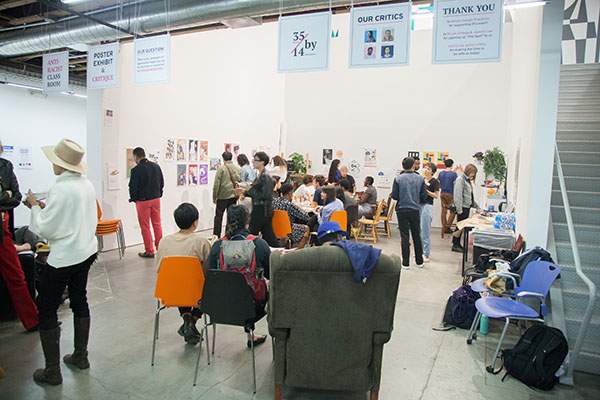
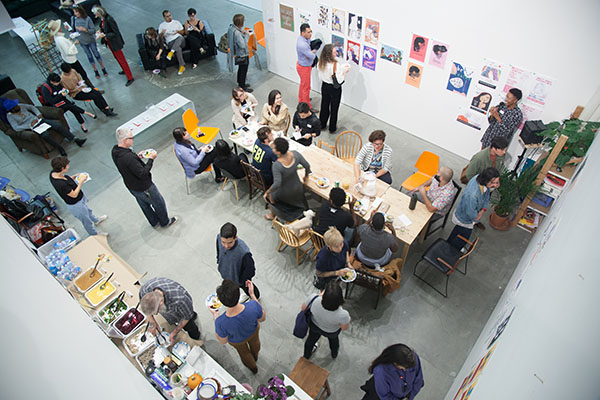
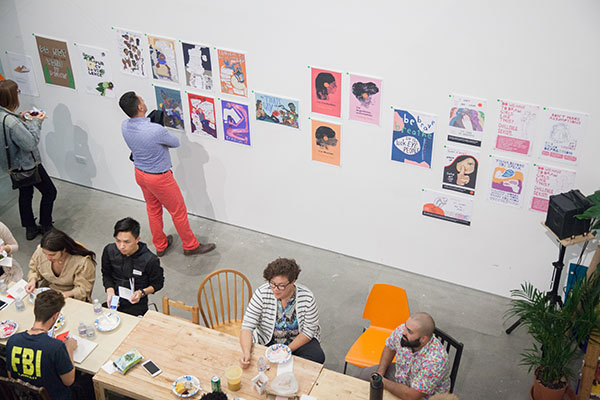

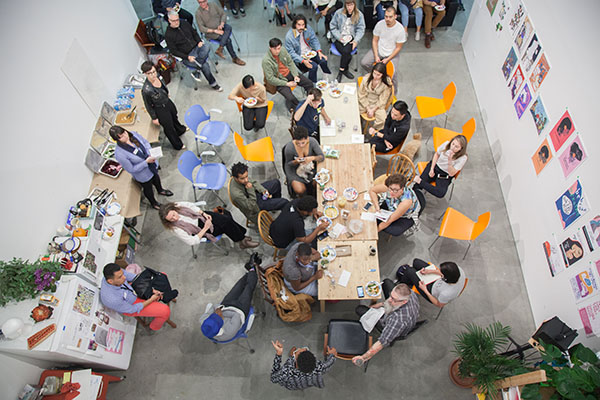


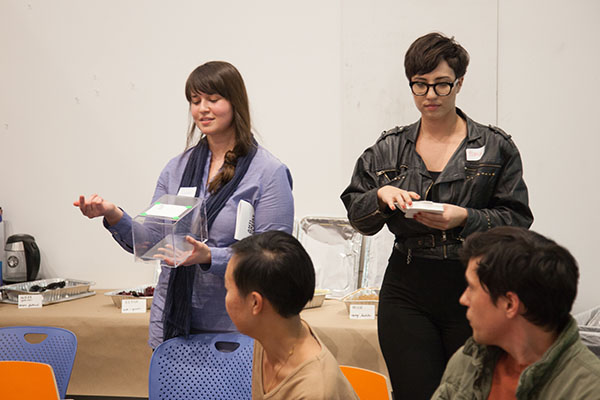
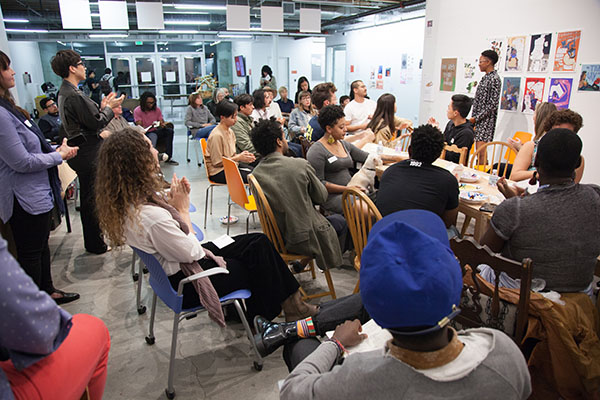
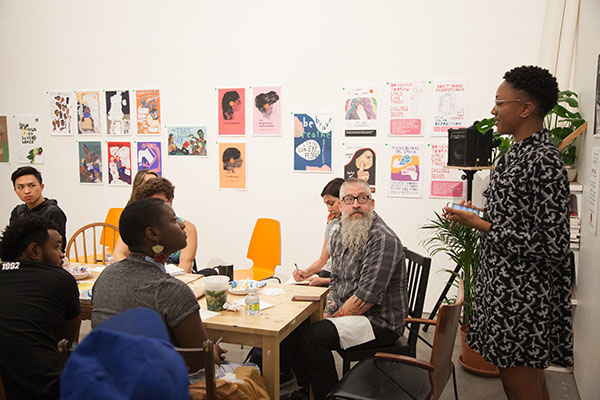

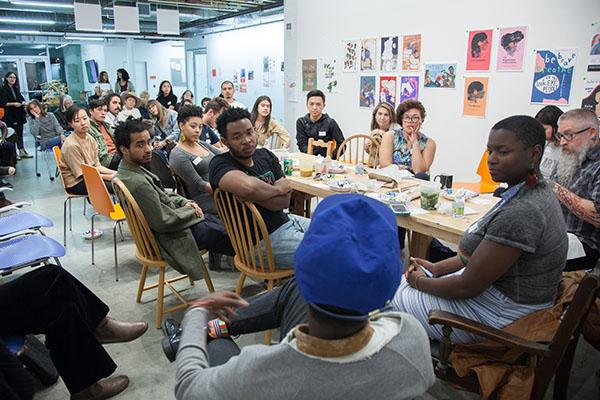

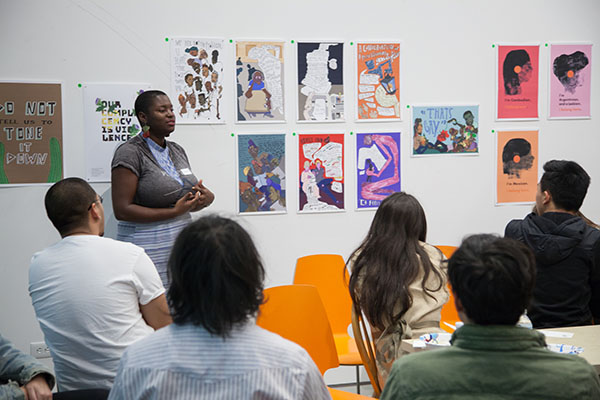

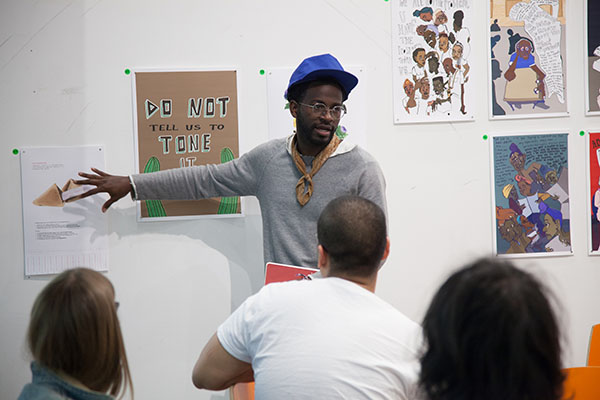


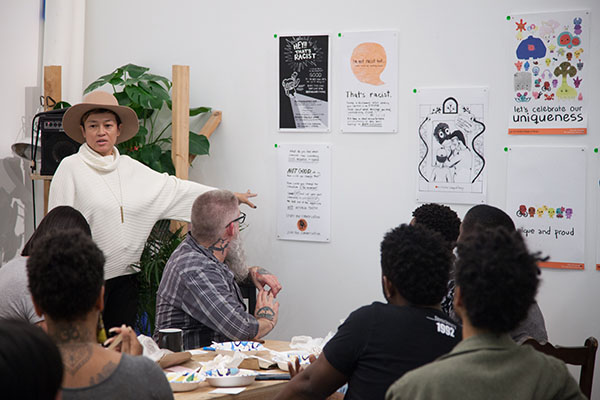


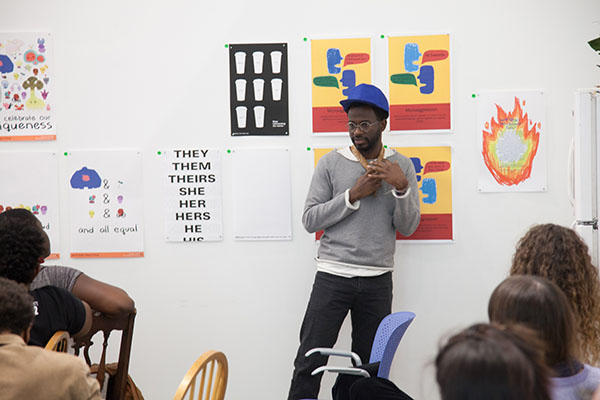
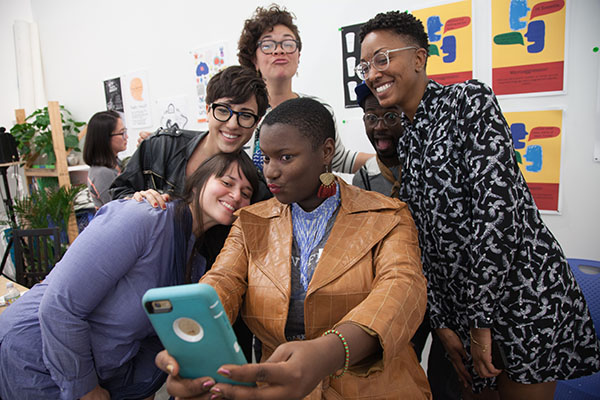

37 POSTERS X 14 ARTISTS
POSTER SERIES
What tools, strategies or approaches might you use to interrupt or counteract microaggressions?
These 37 posters responded to an open to creatives, from amateurs and semi-professionals to professionals, between October - November 2017. Fourteen artists submitted the pieces shown below. Their work was exhibited at the Fine Art & Illustration building on Art Center’s Campus and reviewed during a public exhibit and critique on November 14.

Brittany Ko
006

Chrystal Li
007

Dado Cabaravdic
008

Dado Cabaravdic
009

Dado Cabaravdic
010
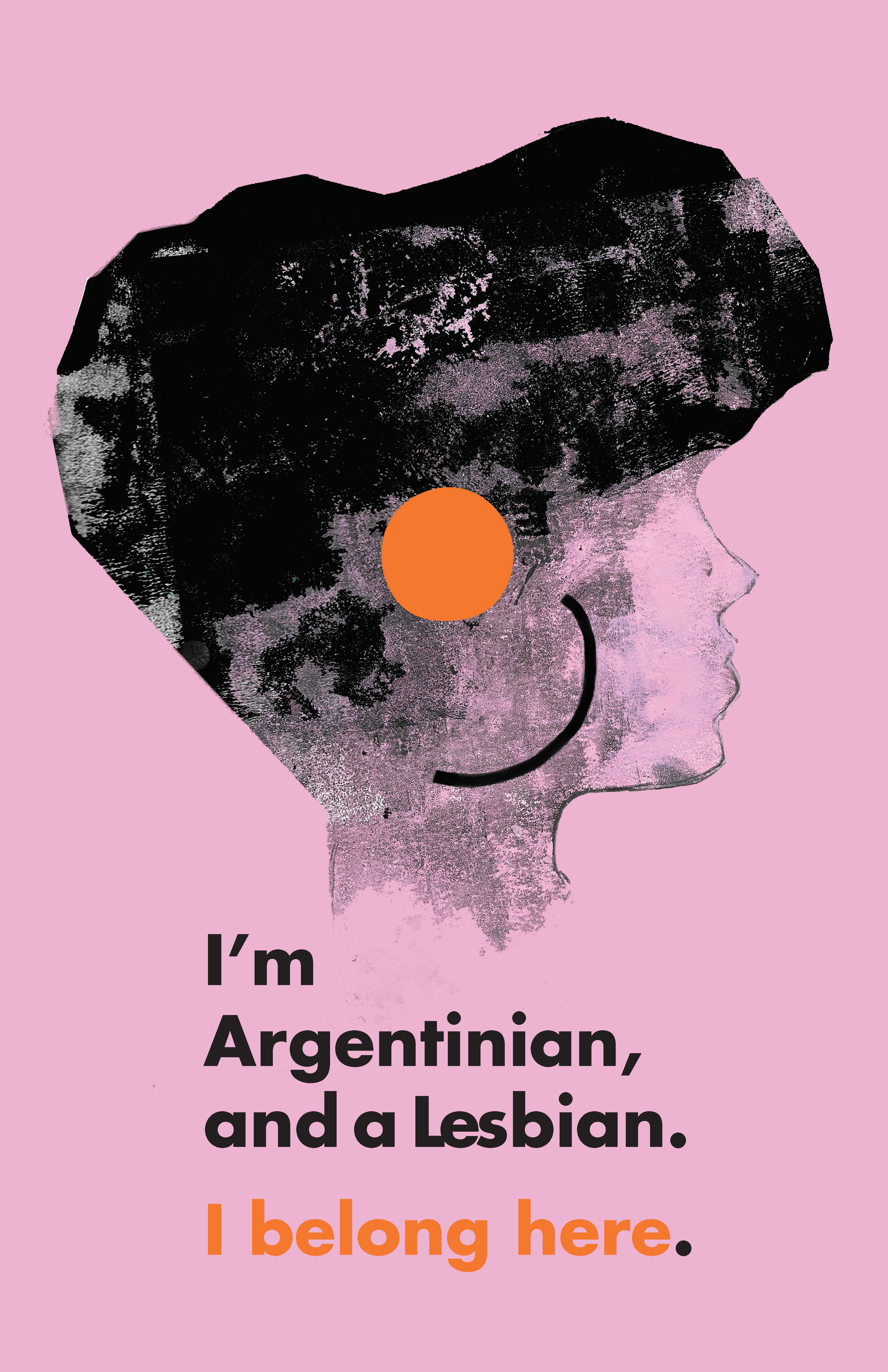
Hilda Rios
011
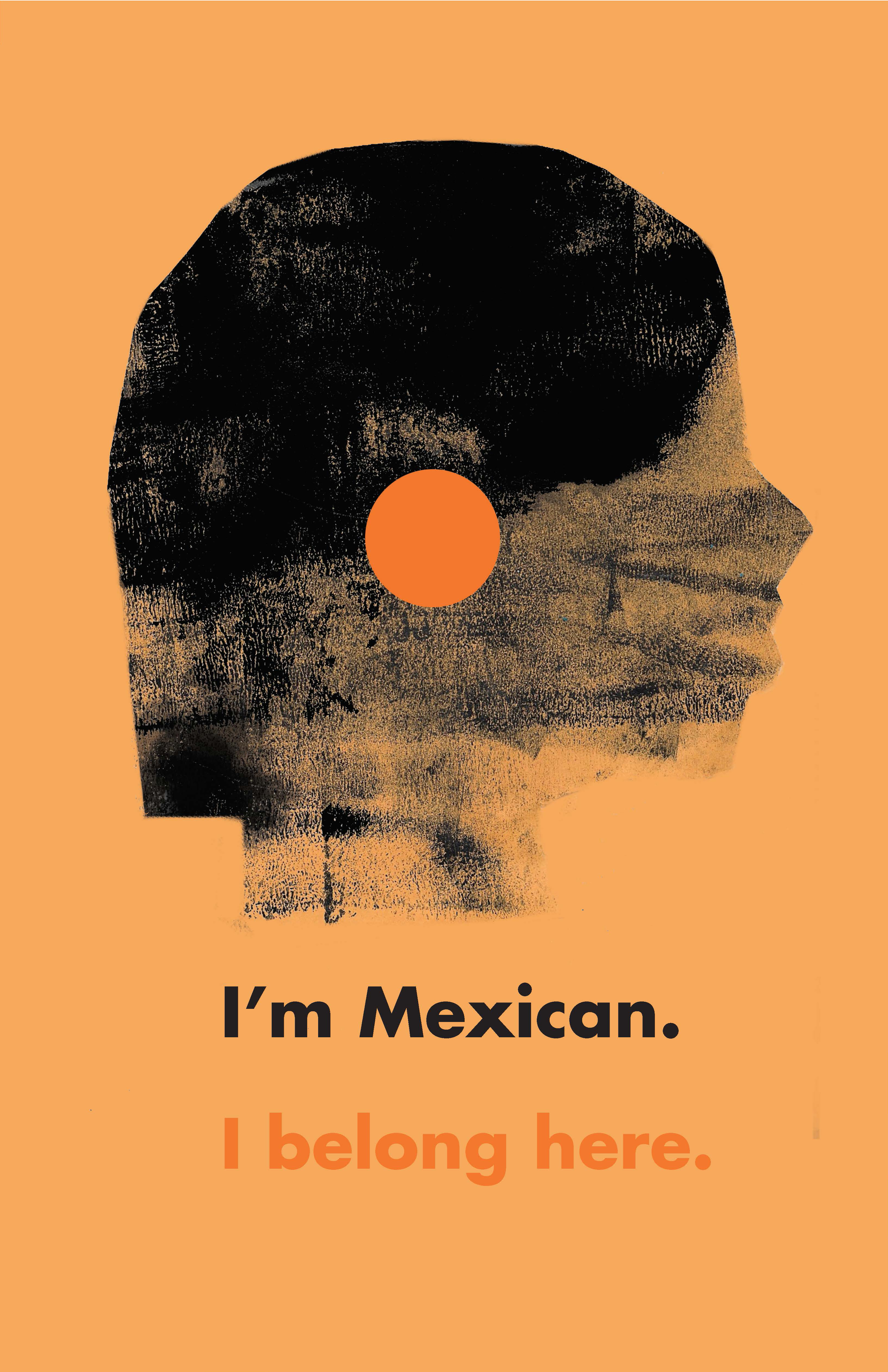
Hilda Rios
012
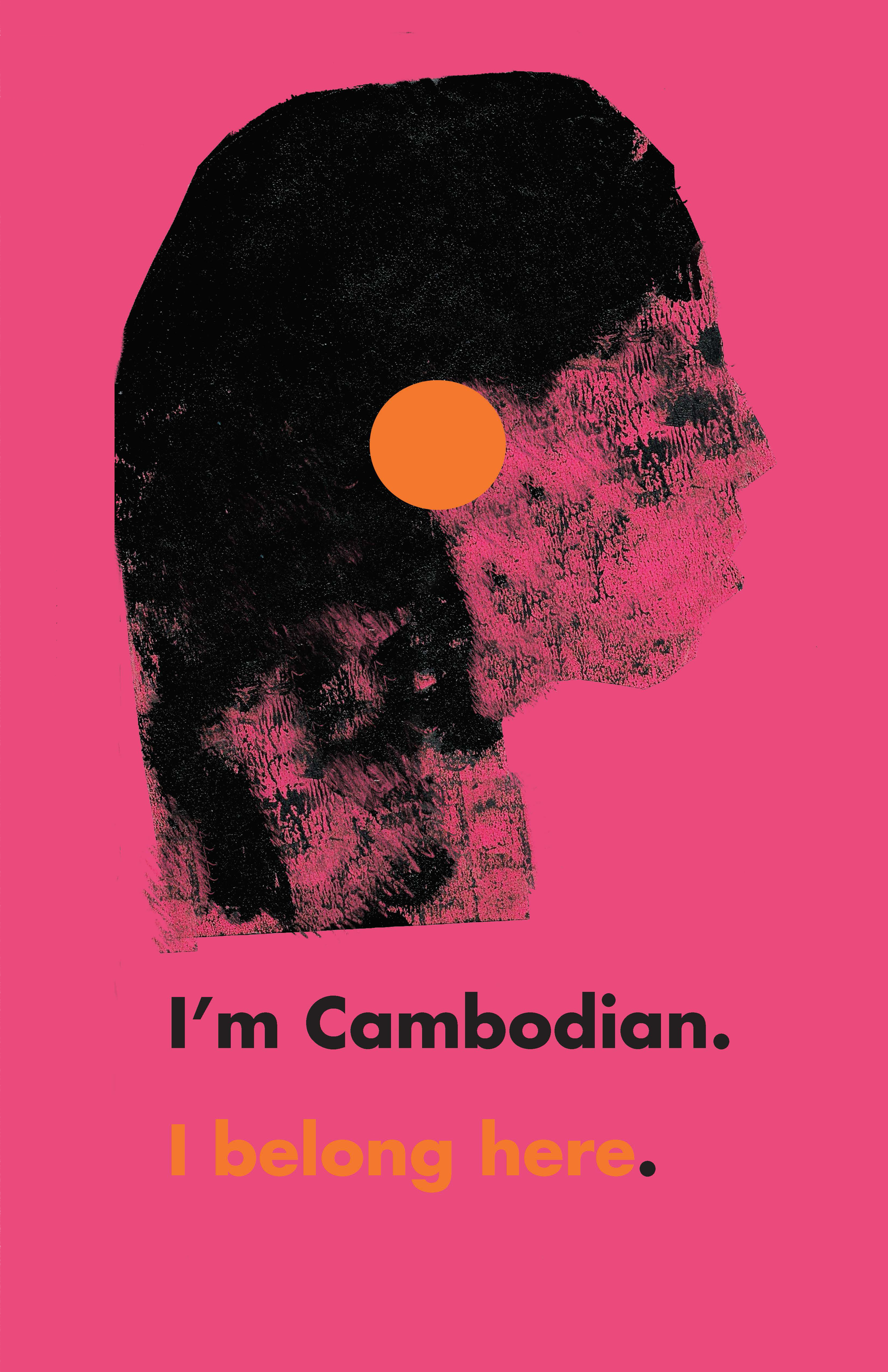
Hilda Rios
013

Kayla Salisbury
014
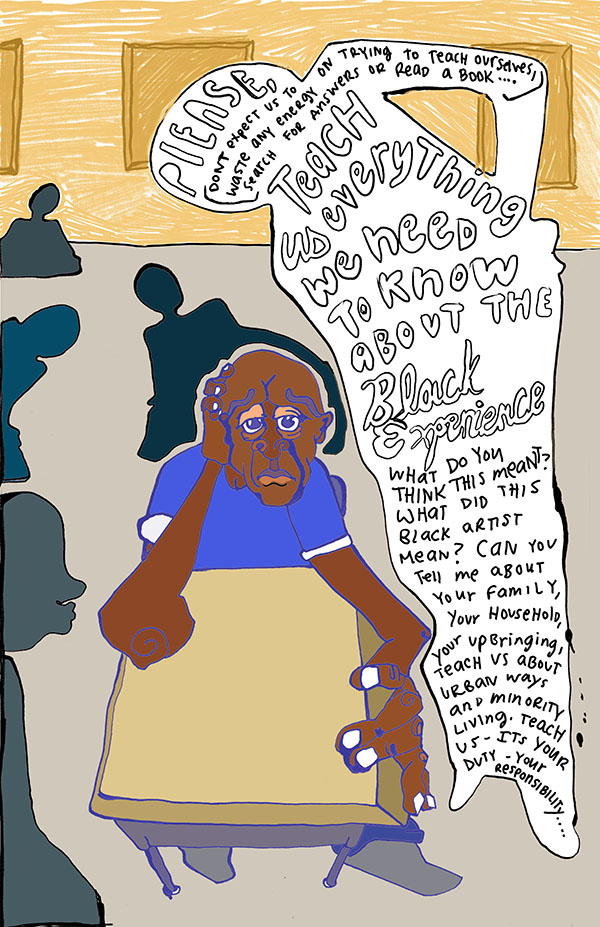
Kayla Salisbury
015

Kayla Salisbury
016

Kayla Salisbury
017

Kayla Salisbury
018

Kayla Salisbury
019
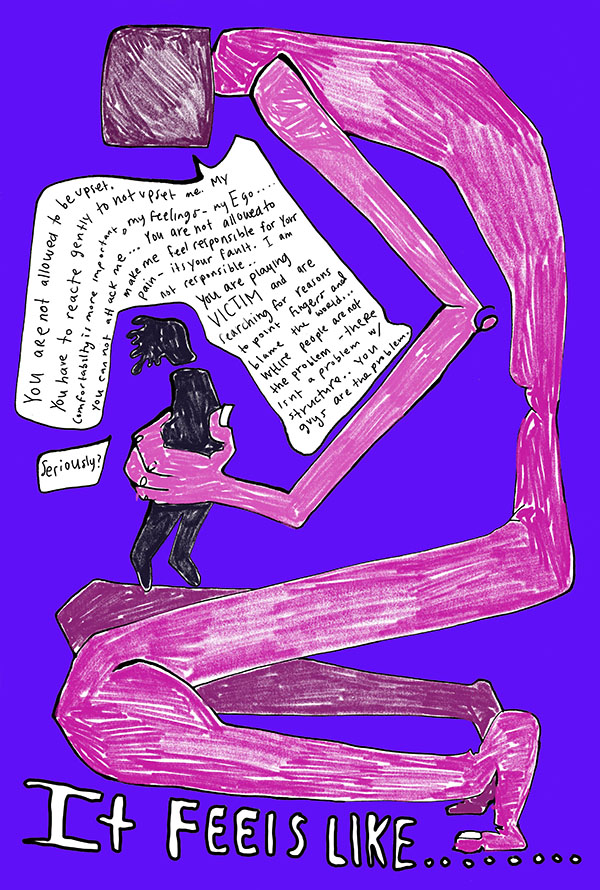
Kayla Salisbury
020

Kayla Salisbury
021

Luis Zepeda
022
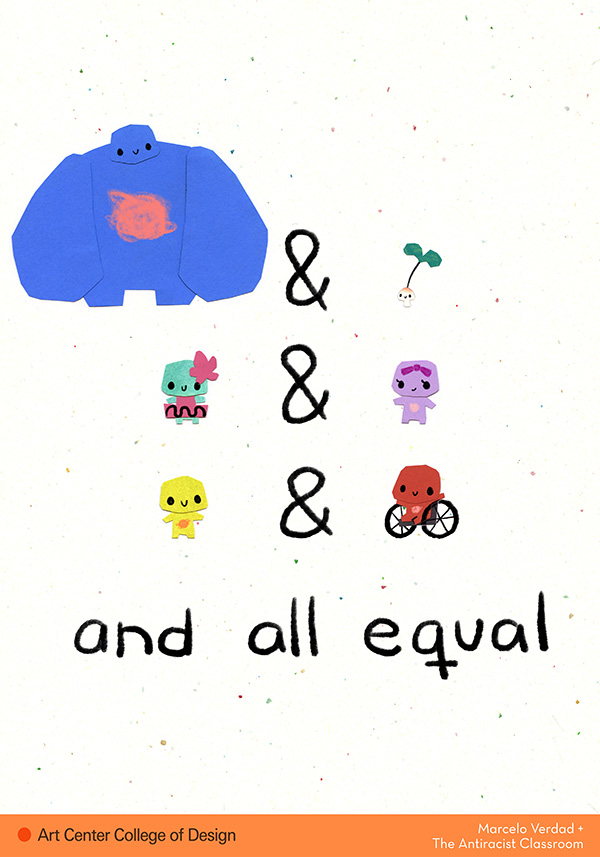
Marcelo Verdad
023

Marcelo Verdad
024
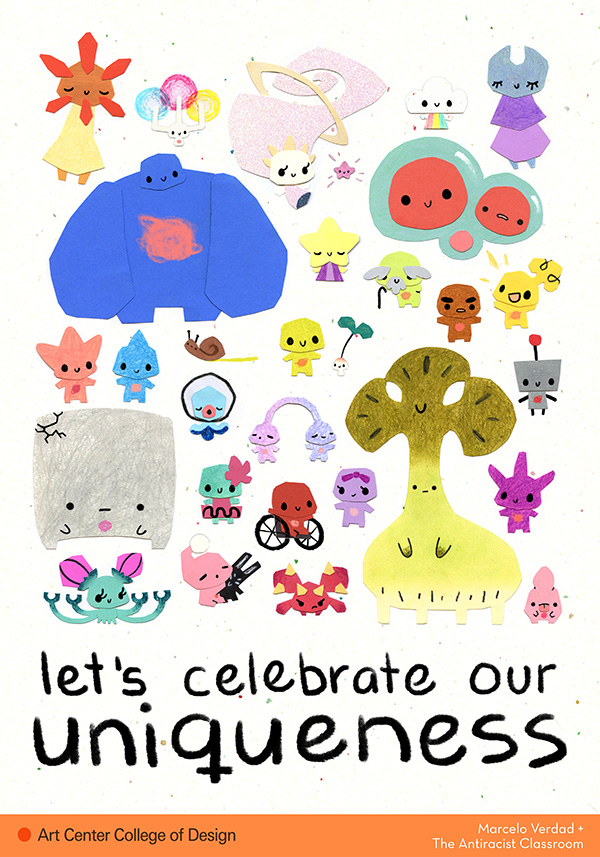
Marcelo Verdad
025

Fallon Lopez
026
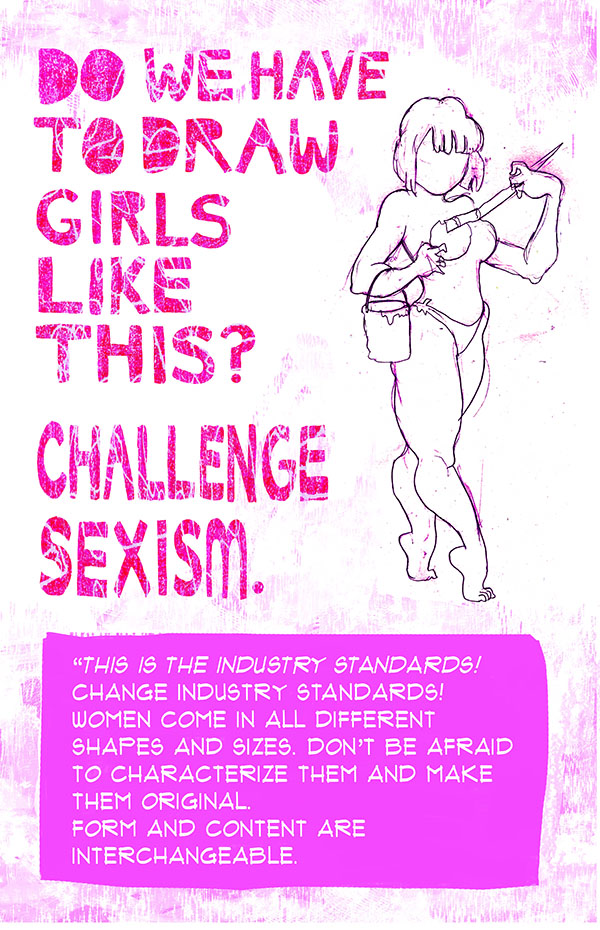
Fallon Lopez
027

Fallon Lopez
028

Fallon Lopez
029

William Huynh
030

William Huynh
031
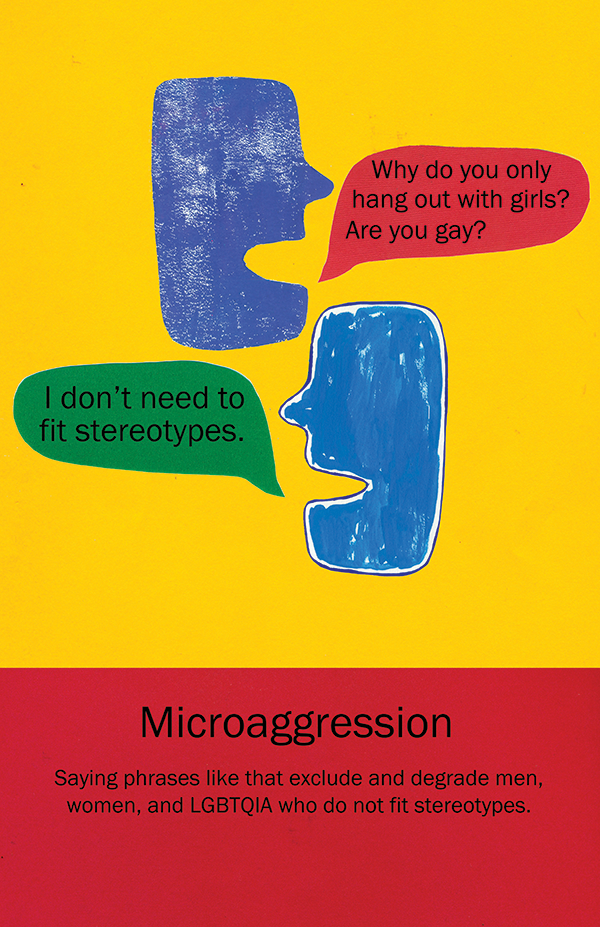
William Huynh
032

William Huynh
033

Jamie Polancic
034
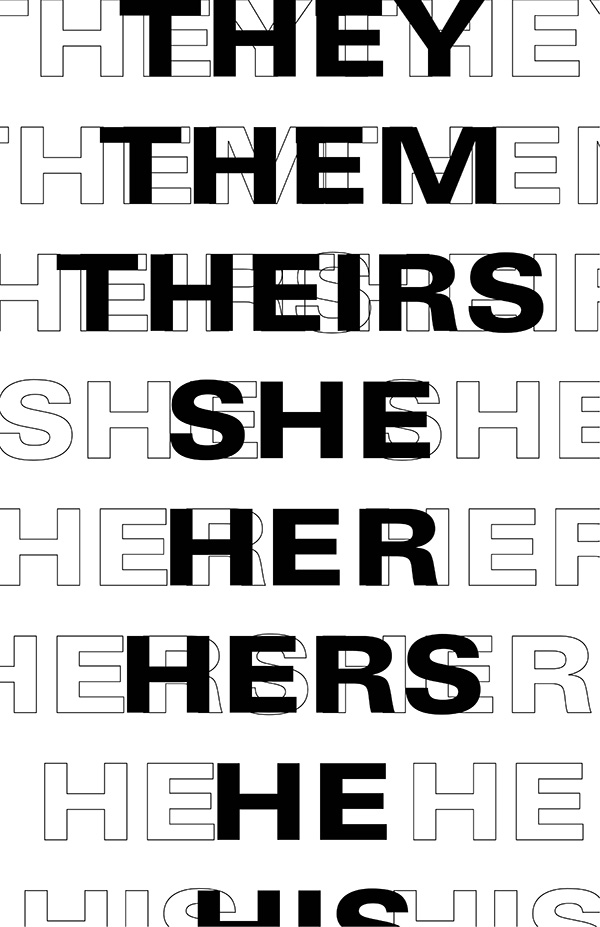
Nicci Yin
035

Nicci Yin
036
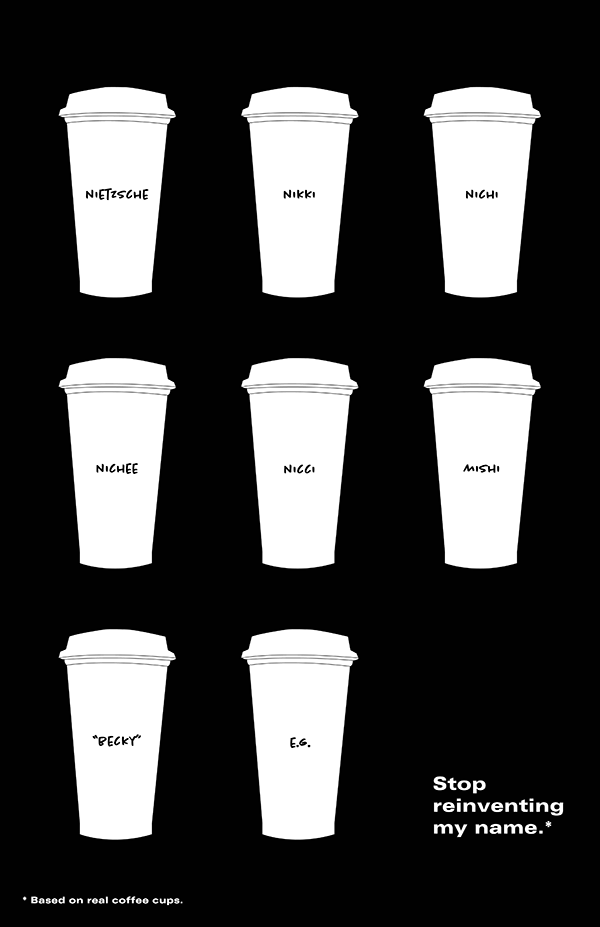
Nicci Yin
037

Nidhi Singh Rathore
038

Xinrui Chen
039

Xinrui Chen
039.B

Xinrui Chen
039.C

Benin Marshall
040
On December 1, 2018 from 7 - 10 PM at the Armory Center for the Arts 21 ArtCenter students and alumni contributed work to Represent. At least a hundred folks from the ArtCenter community and beyond joined us to celebrate.
![]()
Art and design are visual and tactile practices often concerned with presenting our own interpretations of moments, people, places, and communities. In these fields, people of color are too often underrepresented, misrepresented, or rendered invisible in spite of our deep contributions to art, design, craft, and cultural production. Other times, the creative contributions made by people of color are tokenized in such a way that overshadows the work itself. Either way, we can’t extract ourselves from our work: this exhibit aims to give space to expressions of representation that are self-determined and celebratory, critical and exploratory. This exhibit features creatives whose work examines what it looks like to genuinely, respectfully, and fully represent who they are and how they experience the joys and burdens of representing themselves or their membership in a community or collective identity.
Presented by the Antiracist Classroom and CHROMA, REPRESENT highlights the creative practices of Latinx, Asian, Black, and Indigenous artists and cultivates a space that prioritizes our experiences, representations of self, histories, and futures. REPRESENT manifests a space we urgently want to see in our studios, our classes, and the creative field more broadly. It is an action, an invitation to engage, and a celebration of what we have already collectively achieved.
Represent was organized by ArtCenter students and alumni: Sophia de Lara, Benin Marshall, Shivangi Singh, and Lauren Williams. The organizing team would like to thank the Armory Center of the Arts for hosting the exhibit and the following ArtCenter departments for financial support: Designmatters, the Center for Student Experience, and the Office of the Provost.

Represent is an exhibit that showcased work by Art Center’s creatives of color exploring the theme of representation: How do you depict yourself or your identity? How do you want to be seen? How do you shape the ways you’re represented?
Art and design are visual and tactile practices often concerned with presenting our own interpretations of moments, people, places, and communities. In these fields, people of color are too often underrepresented, misrepresented, or rendered invisible in spite of our deep contributions to art, design, craft, and cultural production. Other times, the creative contributions made by people of color are tokenized in such a way that overshadows the work itself. Either way, we can’t extract ourselves from our work: this exhibit aims to give space to expressions of representation that are self-determined and celebratory, critical and exploratory. This exhibit features creatives whose work examines what it looks like to genuinely, respectfully, and fully represent who they are and how they experience the joys and burdens of representing themselves or their membership in a community or collective identity.
Presented by the Antiracist Classroom and CHROMA, REPRESENT highlights the creative practices of Latinx, Asian, Black, and Indigenous artists and cultivates a space that prioritizes our experiences, representations of self, histories, and futures. REPRESENT manifests a space we urgently want to see in our studios, our classes, and the creative field more broadly. It is an action, an invitation to engage, and a celebration of what we have already collectively achieved.
Represent was organized by ArtCenter students and alumni: Sophia de Lara, Benin Marshall, Shivangi Singh, and Lauren Williams. The organizing team would like to thank the Armory Center of the Arts for hosting the exhibit and the following ArtCenter departments for financial support: Designmatters, the Center for Student Experience, and the Office of the Provost.
GALLERY
edited by Sade Ndya Young
Event Photos
Photos by Shahin Ansari +edited by Sade Ndya Young


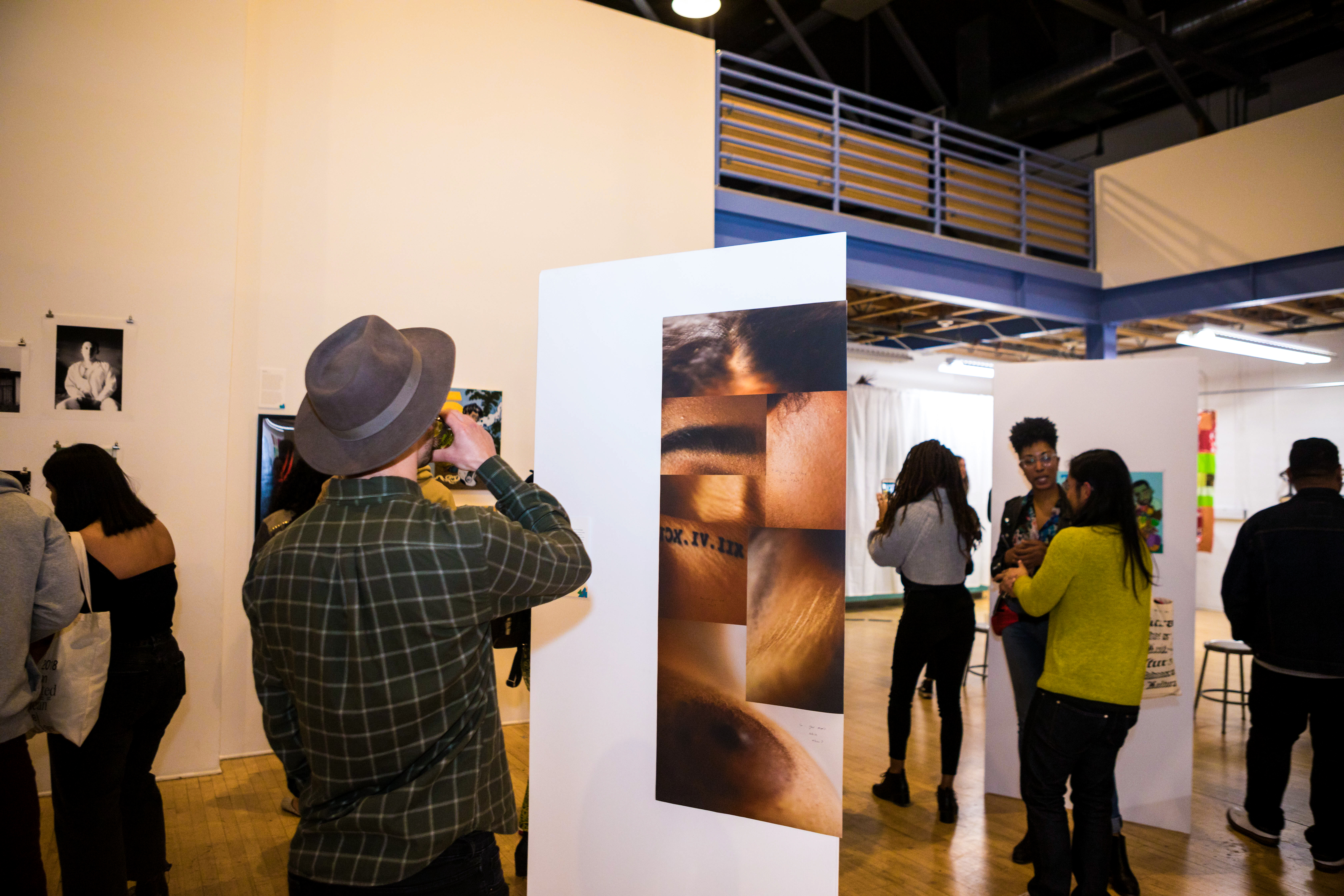
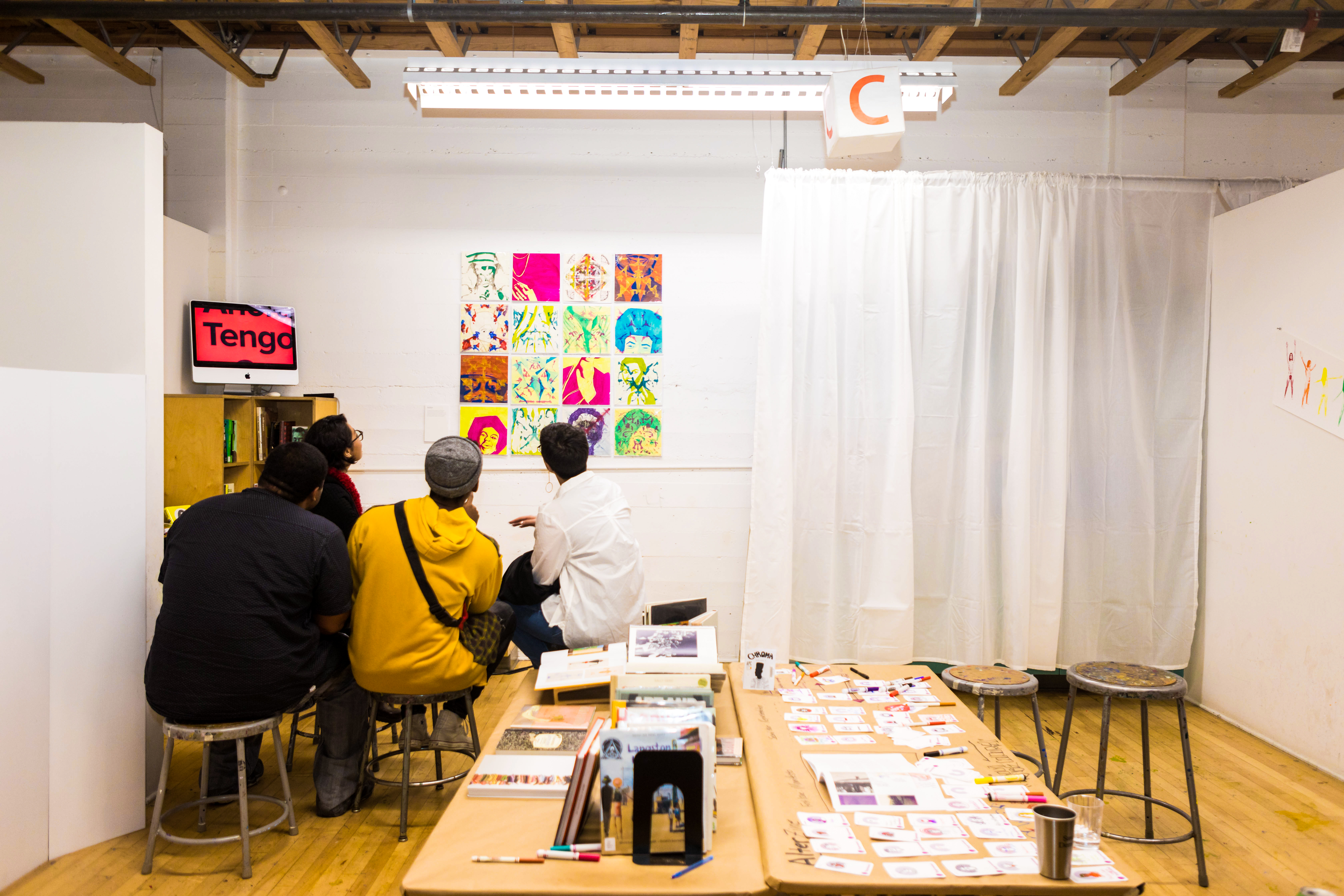
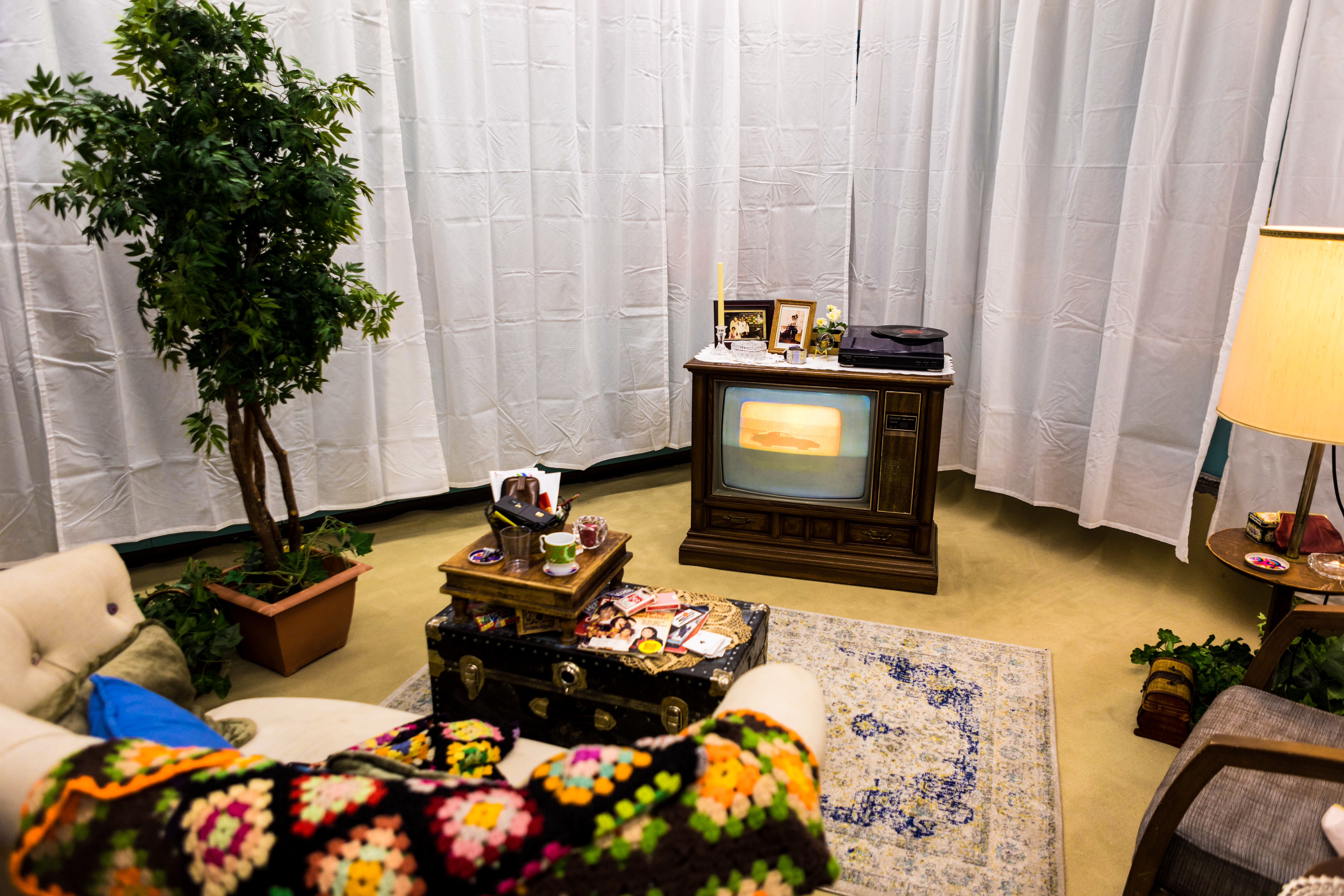
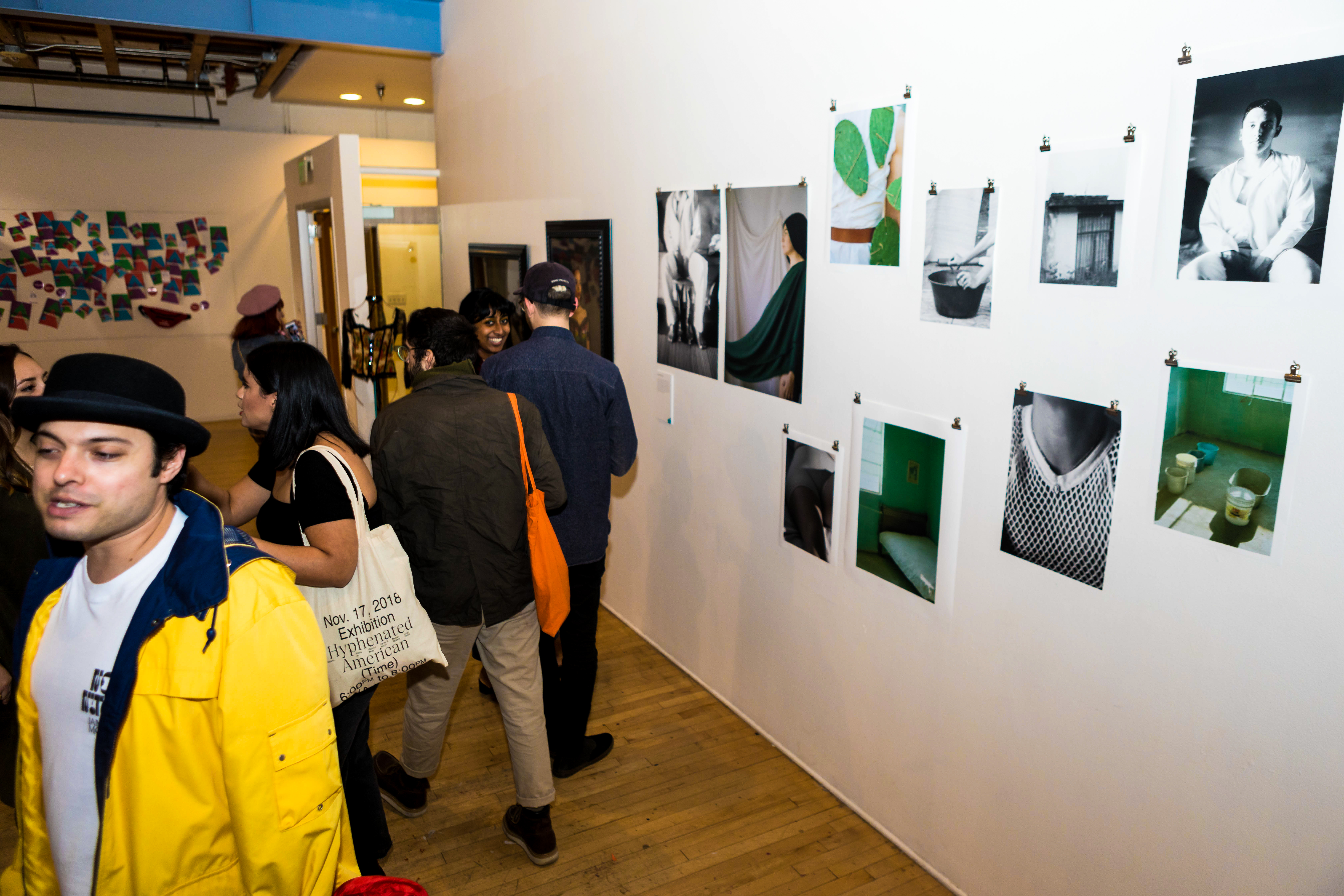
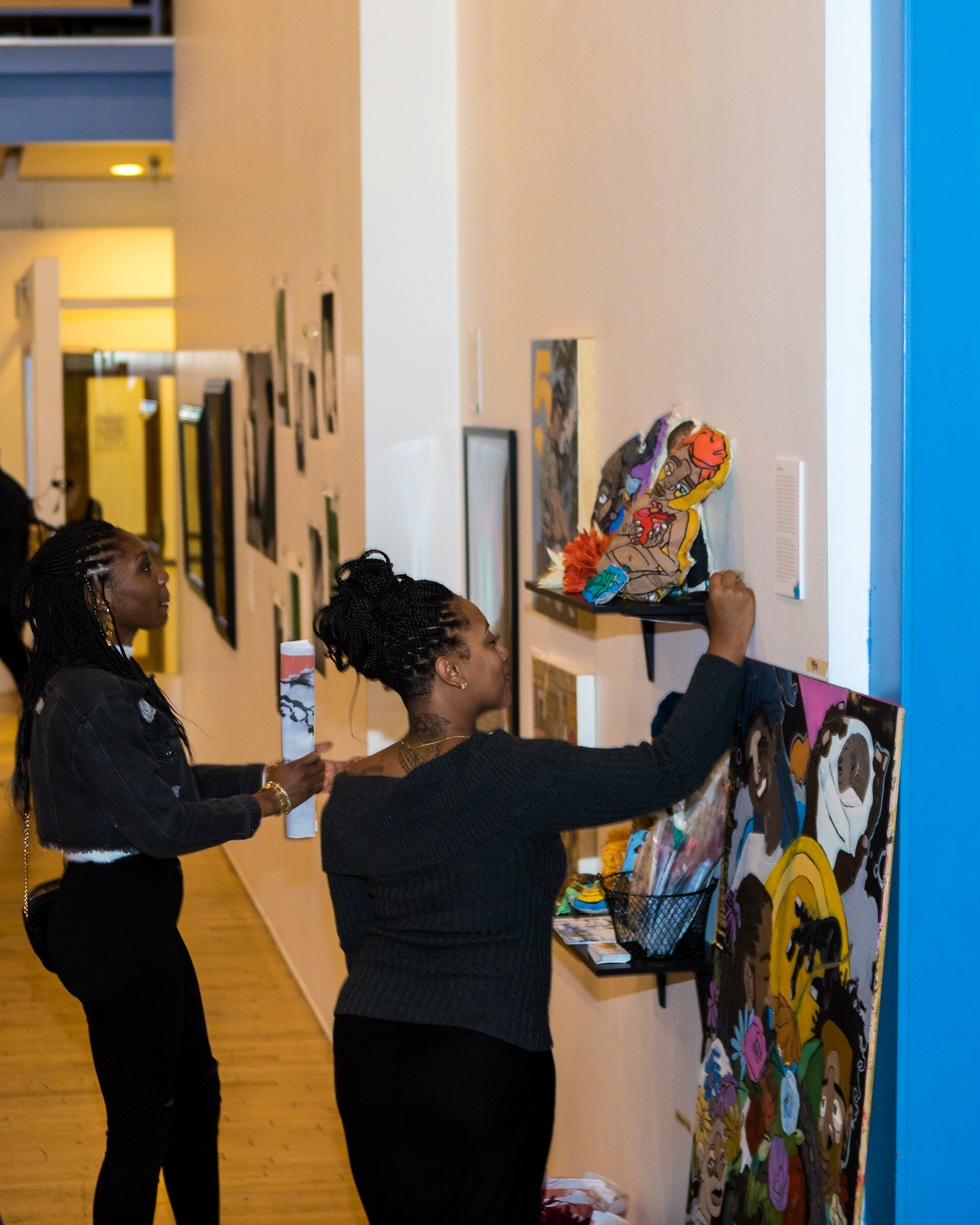
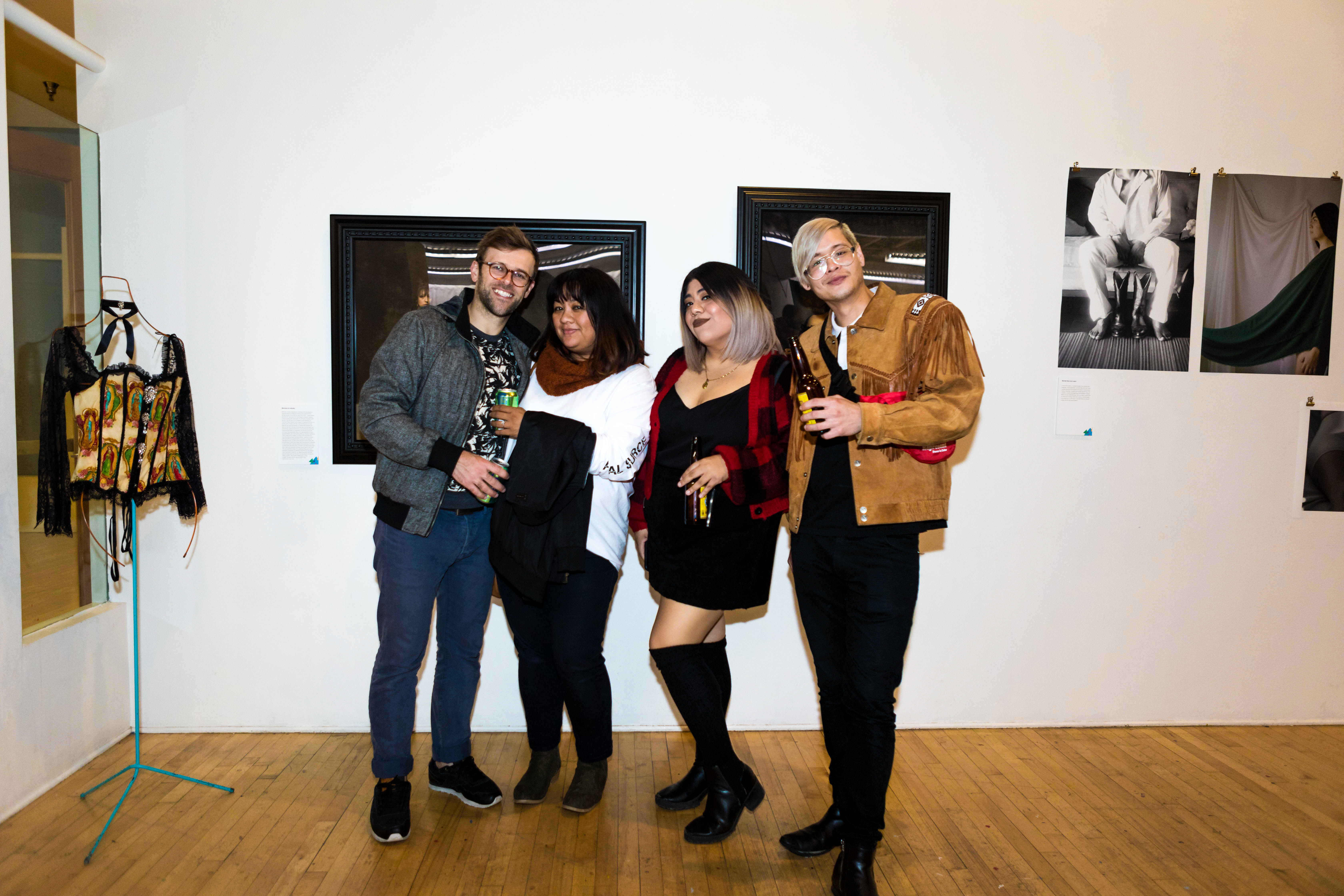



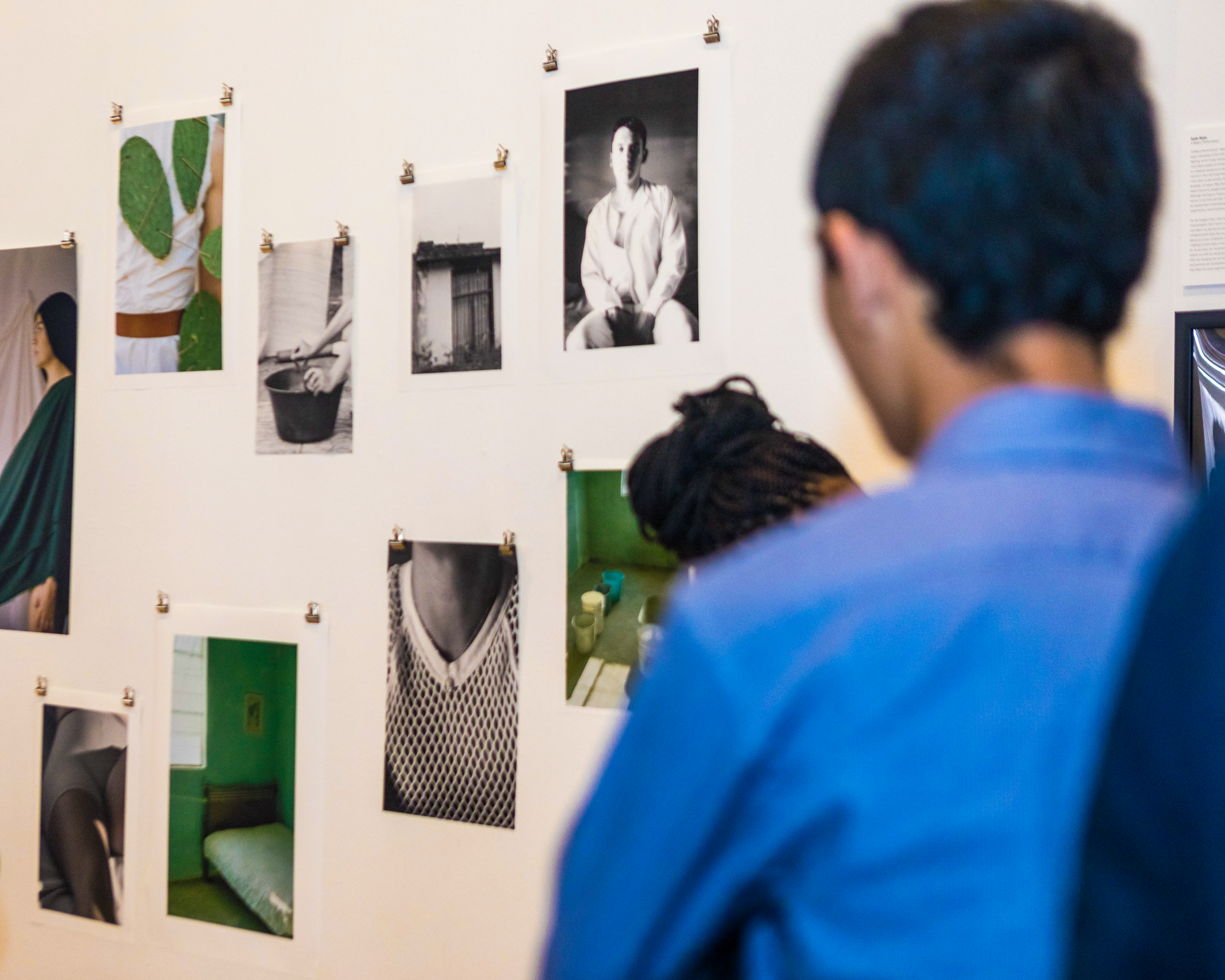

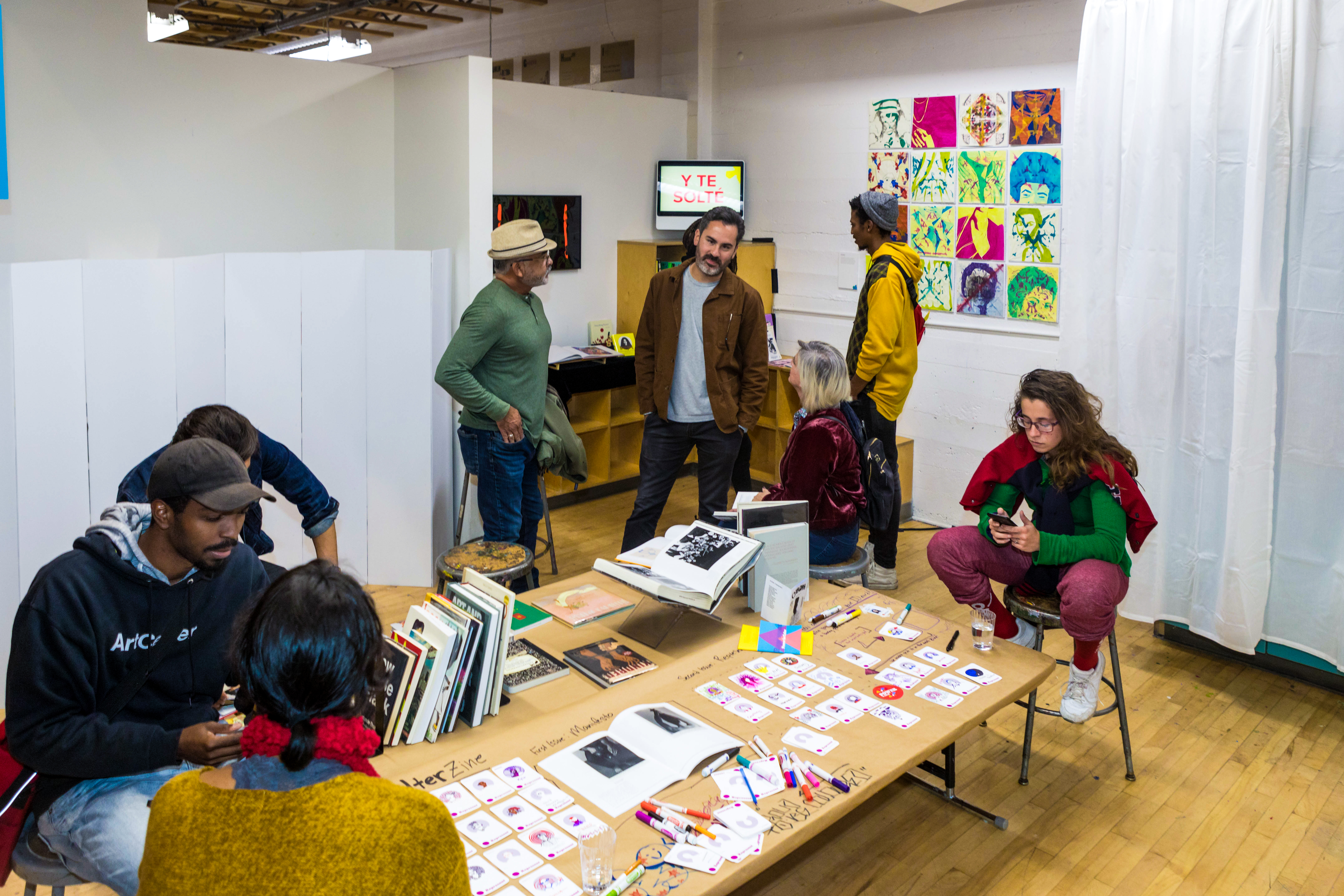

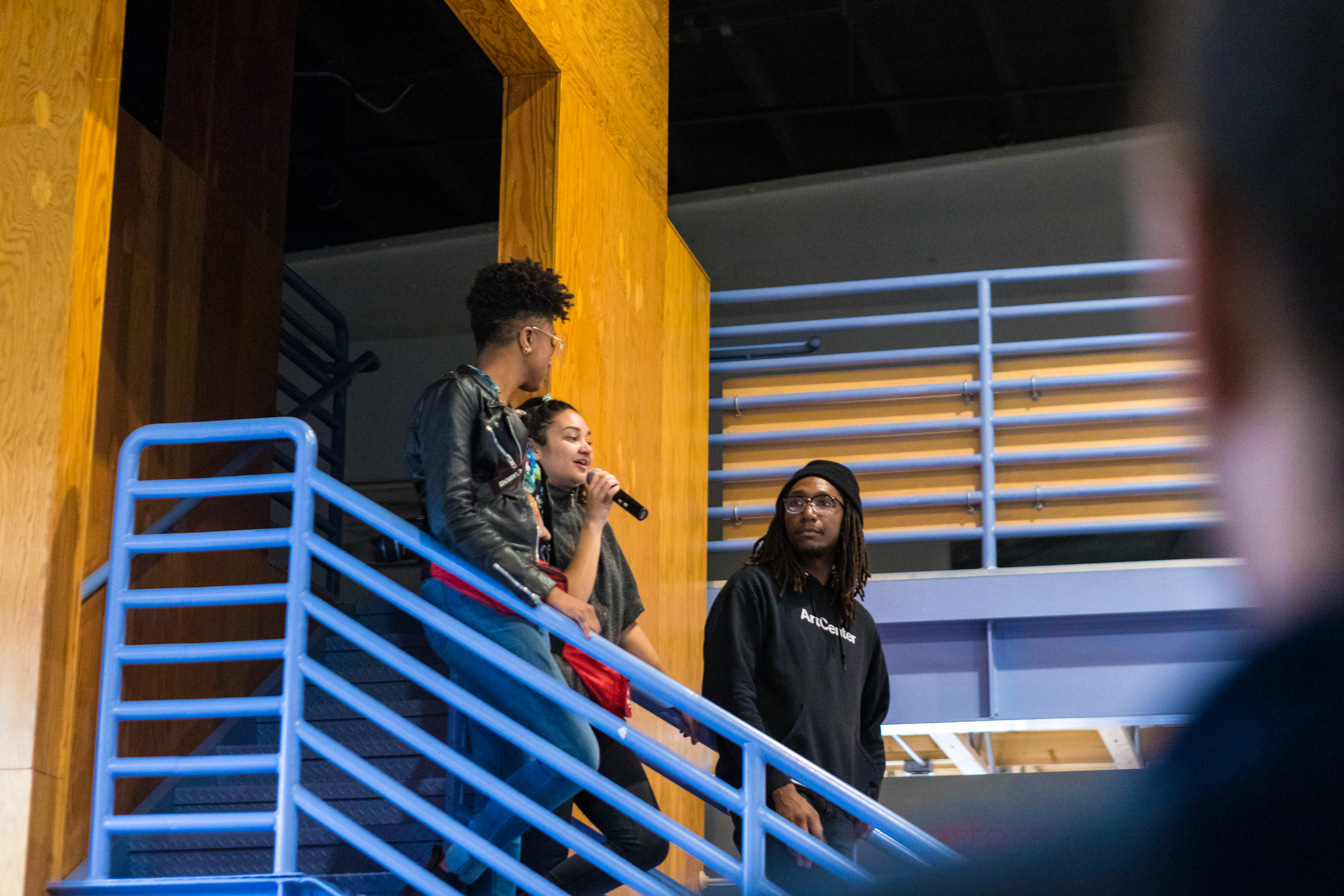
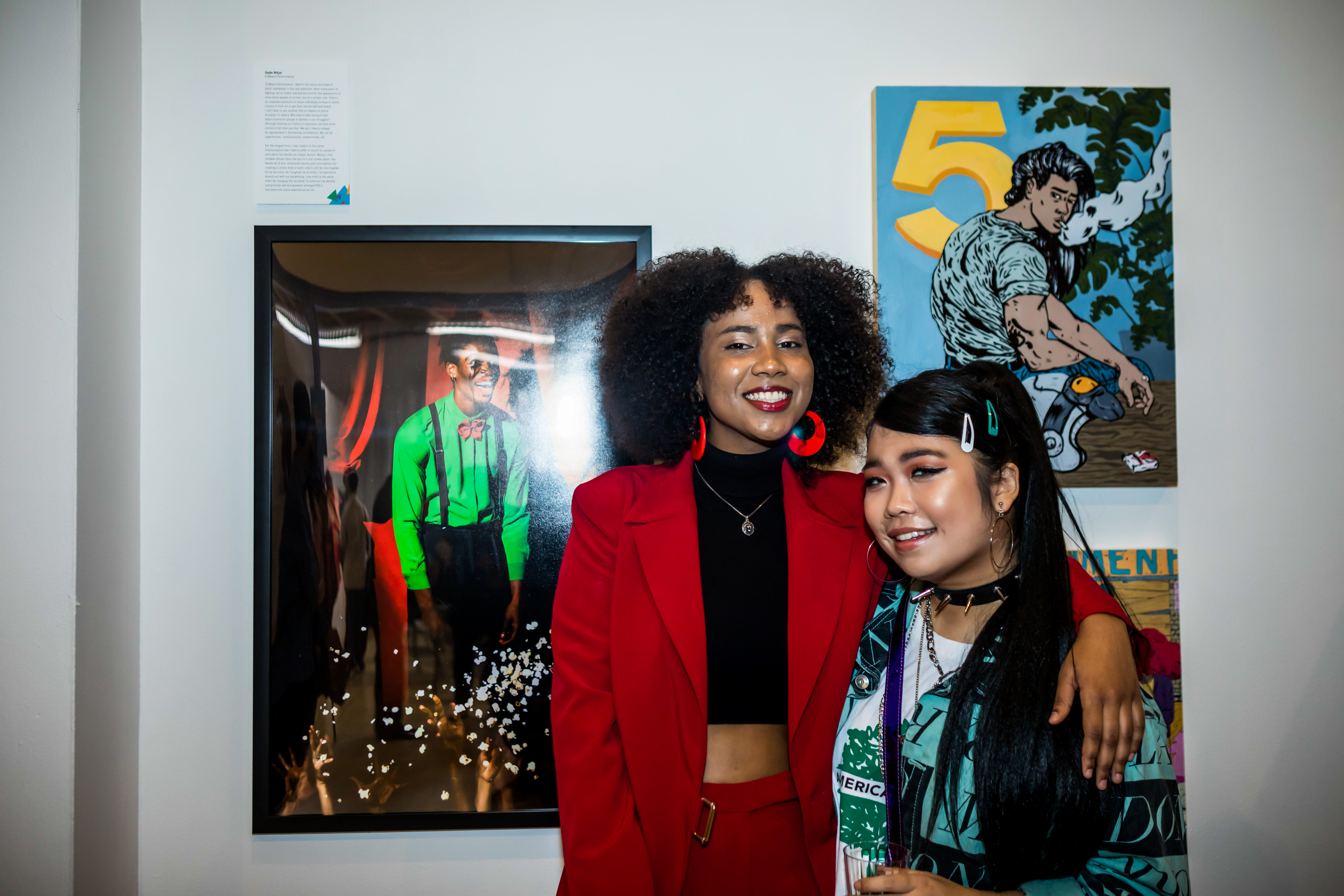



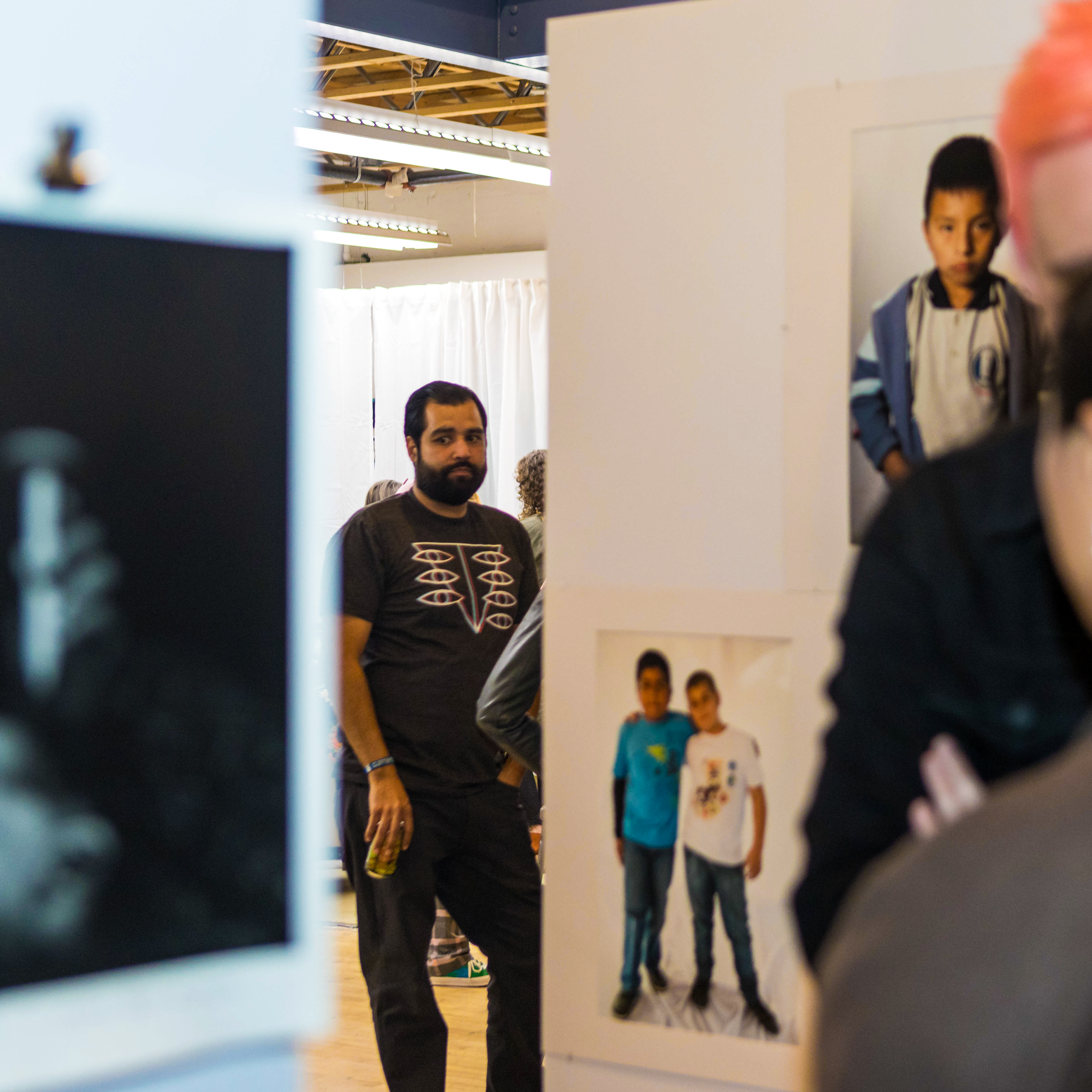

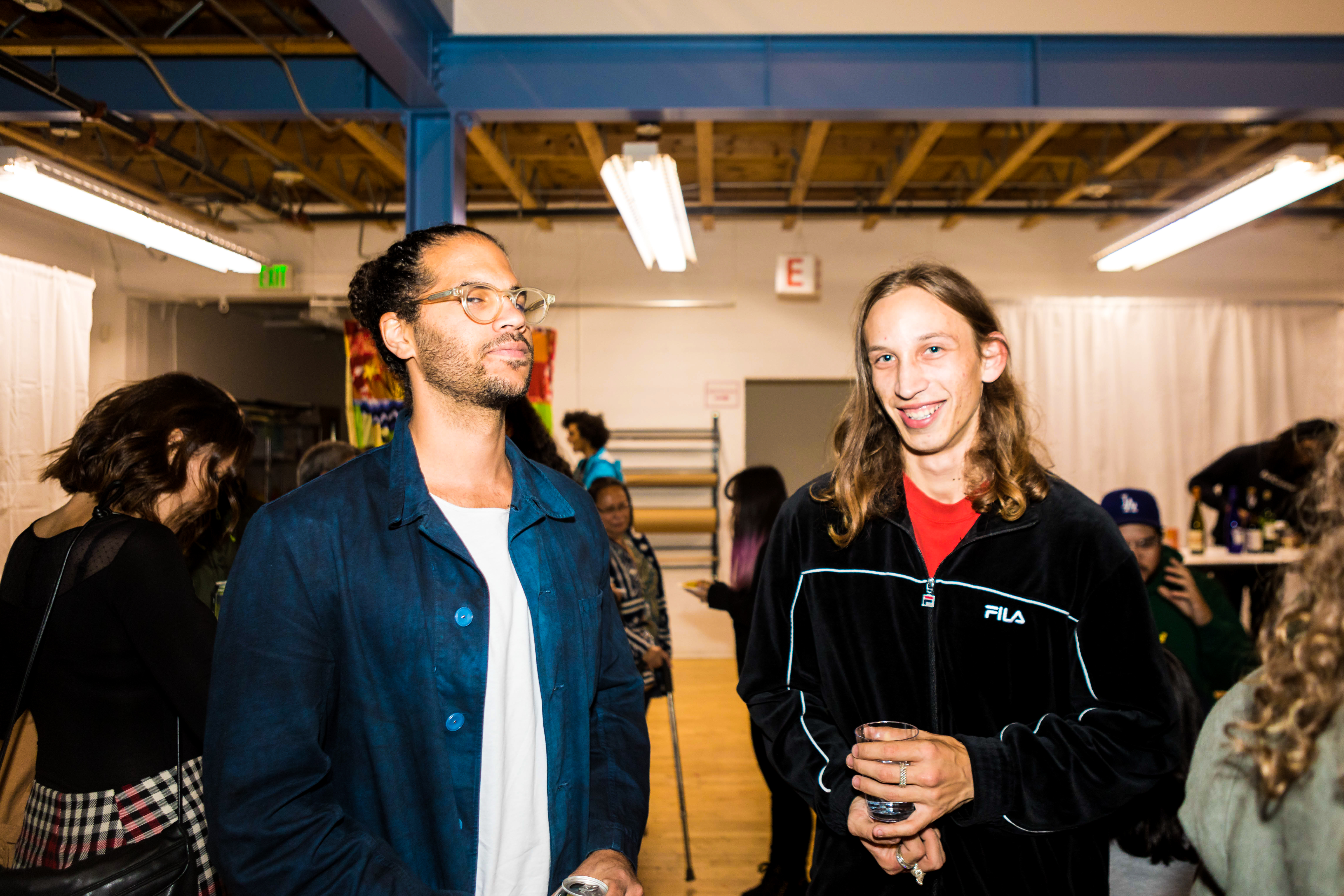
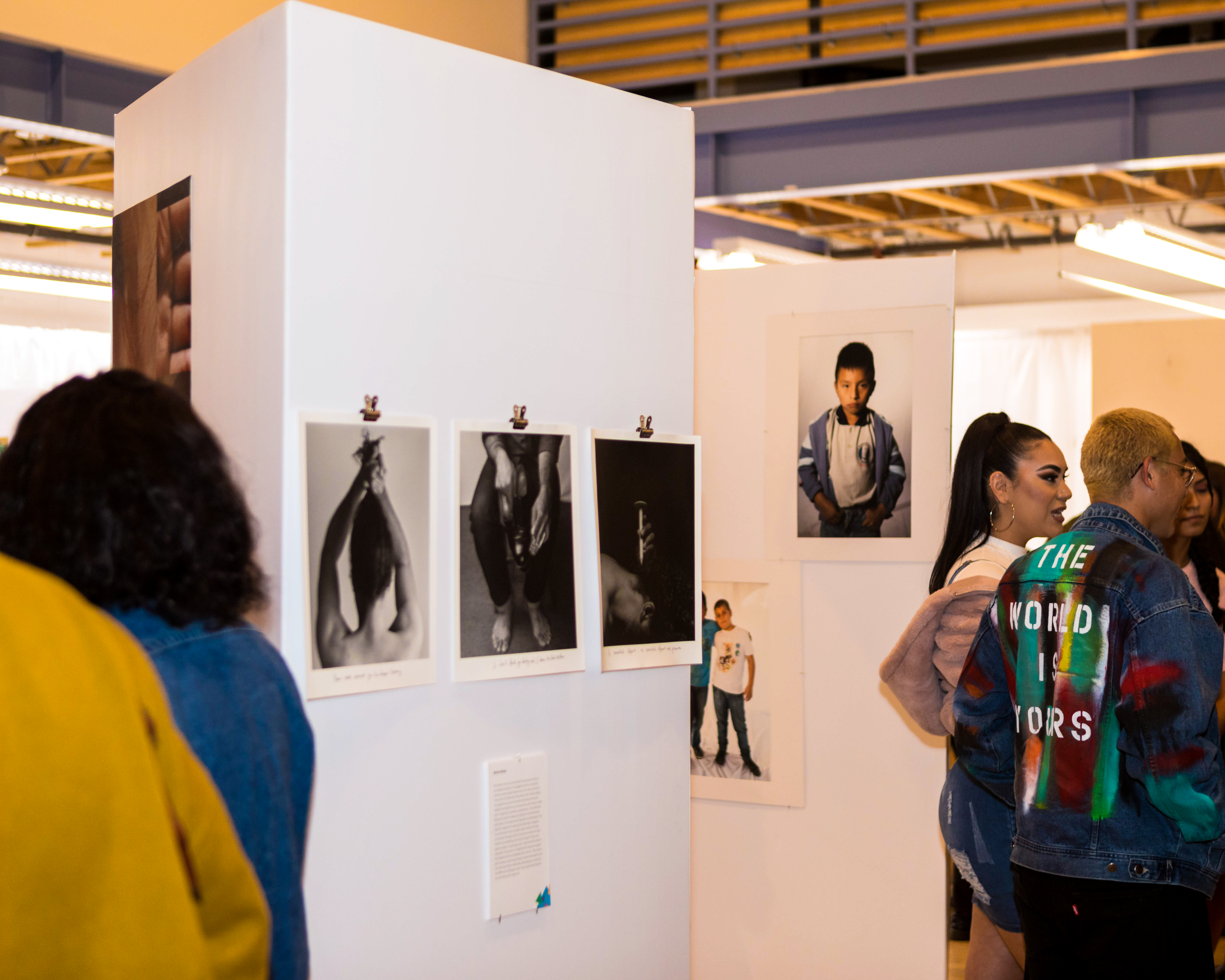



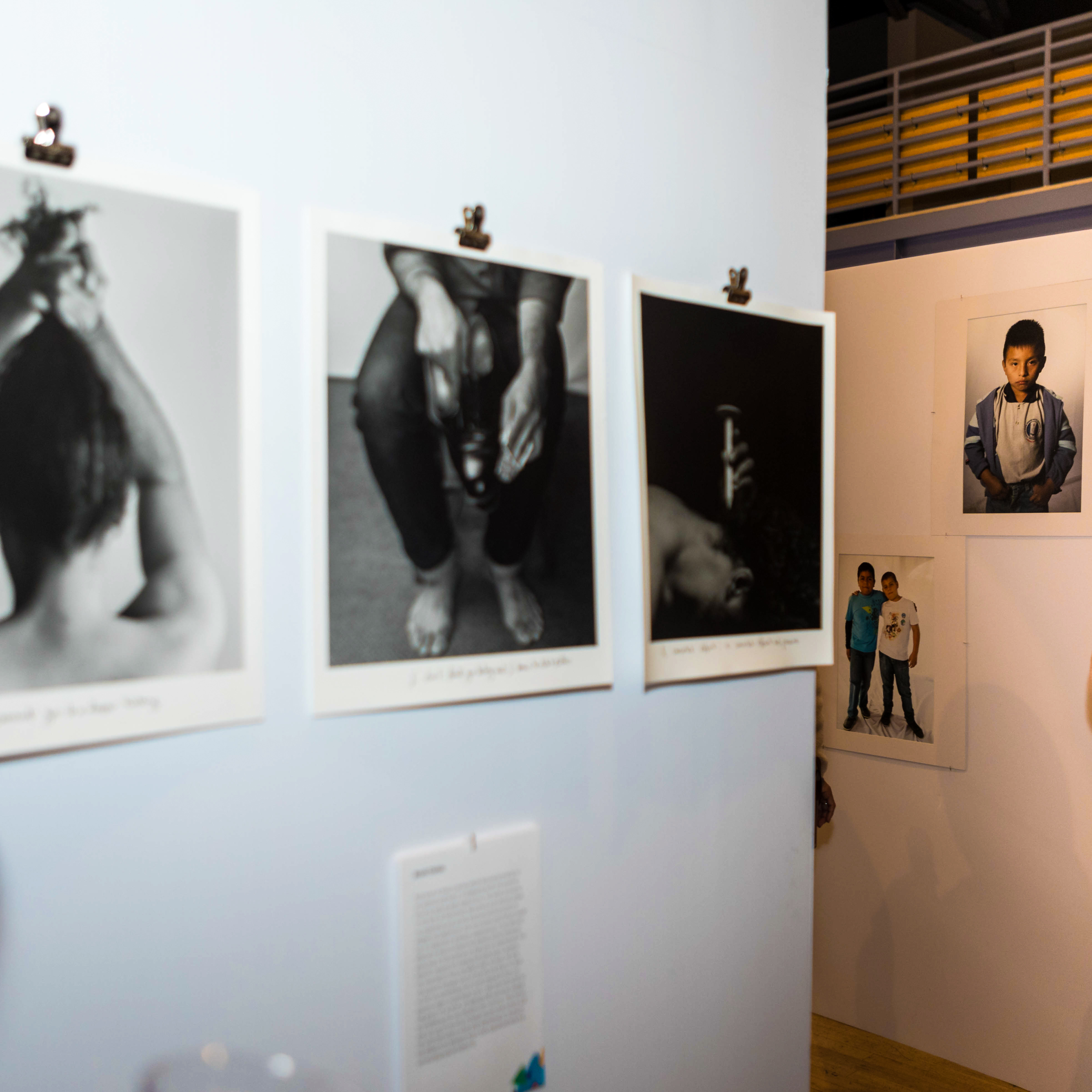
BIOS
Featured Creatives
Melinda Arredondo
Student, Photography and ImagingMelinda Arredondo is a 28-year-old fashion and portrait photographer from Rancho Cucamonga, CA. She grew up in a very typical Mexican household where she was expected to speak Spanish in the home, go to church, and stay up till 2:00 AM with your parents at family parties. In a year, when she graduates from ArtCenter, she will be the first person in her family to graduate from college. Her parents have always given her the freedom to be who she is and to create the work she wants to. Unlike most of her cousins who were expected to become doctors or lawyers, her parents let her be who she wanted an her grandmother taught her to sew and create. Melinda bases some of her work on her heritage and her mother's family. She enjoys integrating her culture into her work to add a little bit of herself and her family's history.
Maribel Barcena Lopez
Student, Photography and ImagingMaribel Barcena Lopez is a Mexican American photographer and creative. She was born and raised in Los Angeles,CA but has spent much of her life in Mexico, splitting time between Jalisco, Michoacán and Tijuana. The time she spent in Mexico was not only essential in remaining connected to her roots but also served as a source of creative influence and gave her unique perspectives on the worlds she comes from,which she is now exploring and translating through visual imagery.
Steven Butler
Alum, 2013, FilmSteven Butler is a multi-talented creative with an open mind, passion for storytelling and an aptitude for intersecting multiple art forms. He began his creative career as a dancer and choreographer with credits including Transformers 2, The Latin Grammy’s, Weeds, Good Morning America and artists including Ludacris, Nick Carter, Aaron Carter, Paulina Rubio, Cheat Codes and Macy Gray. He received a Bachelor of Arts in film from ArtCenter College of Design, graduating with distinction. His directing credits include music videos for Precarious Records, Ultra Records, and Raid Records. He has also received recognition for his writing, directing, and producing from Slamdance, The Addy Awards, Zooppa, Los Angeles Dance Film Festival, Standard Vision and the Academy of Television & Sciences Blue Ribbon Panel. In addition to his creative work, Steven is 2018 TED Speaker. By intersecting his creative passions and vast practical experience in varying artistic fields, Steven aims to use art as a means of storytelling that both engages and inspires viewers and participants while simultaneously shaping a progressive and culturally relevant narrative.
Brett Childs
Student, Photography and ImagingBrett Childs is a 30-year-old artist working primarily in film and photography. Brett is biracial: His mother is white and his father is Black. Much of his work concerns itself with the relationship between memory, identity, and the interplay between the internal world of the individual and the external world.
Sebastian Guerra
Student, IllustrationSebastian Guerra-Martinez was born and raised in Mexico to a Mexican mother and an Indigenous Mixtec father. He was raised to honor his Indigenous and Mexican heritage and culture, including through his artwork.
Victoria Imo
Student, Entertainment DesignVictoria Imo is an entertainment designer who loves concept art, dancing, and definitely hates racism and police brutality. Victoria is the only African American girl in her term's cohort and, before enrolling at ArtCenter, thought she might be the only one in her entire major. While that wasn't the case, being the only African American girl in her term's cohort does feel isolating.
Zoe Jackson
Student, Photography and ImagingZoe Jackson is a photographer who shoots in the moment. Spontaneity is a critical element of Zoe's philosophy on life, her approach to photography, and, as a result, the feelings her photography conveys. Because of the manner in which she explores the medium, Zoe never finds a potential subject too mundane to be beautiful. It takes more restraint to shoot freely without over-processing an image. While pre-conceiving a photograph has its place, for her, spontaneity has always been the focus.
Tevy Khou
Alum, 2014, IllustrationTevy Khou makes comic books, painting, and zines. Her work is tied to her identity as a queer Chinese-Cambodian person. Tevy found that in each of those spaces, some element of her identity--racial or sexual--faced erasure. Tevy's desire to work in an area where LGBTQIA issues and race were at the forefront of her daily responsibilities and mission led her to her current job as Creative Content Producer at Pride Media, which owns Advocate, Out, Pride, and HIVPlus magazines and websites.
Kristie Kim
Student, IllustrationKristie Kim is a fantasy illustrator and owner of Kristie Kim Design. Her illustrations capture fantastic lands and characters that are developed into a series of animations. Kristie's design work represents how she lives as a spiritual artist: Expressing emotions, feelings, experiences, and struggles that she faced in childhood. She grew up in Seattle, Washington, graduated honors with a Bachelor of Arts in Design Studies with a minor in Animation from North Carolina State University, and takes motion design courses at ArtCenter College of Design in California.
Benin Marshall
Student, Graphic DesignBenin Marshall is a Graphic Designer from East Los Angeles. Most of Benin’s work deals with Black identity, race, representation, spirituality, love and humanity. Through design, Benin brings folks closer together highlighting stories and experiences so people can all begin to realize how much we may or may not have in common. Either way you still get to see what makes people great and share in the lineage.
Xiucoatl Mejia
Student, Fine ArtXiucoatl Mejia is a Claremont High School alumni and has been apart of Capulli Tonatierra Nahuacali all of his life. He has also apprenticed for eight years underneath his father, mentor, and indigenous tattoo pioneer, Antonio Mejia. Xiucoatl's work reflects his perspective in the punk, Indigenous, and tattoo communities of his upbringing; as well as the stories and lessons he has been taught along the way.
Kizzy Memani
Student, Graduate Graphic DesignKizzy Memani is a visual communicator and graphic designer from Johannesburg, currently based in California. He is completing his postgraduate studies in Graphic Design at ArtCenter College of Design and has a Bachelor’s degree in Architectural Studies which he completed at The University of Cape Town. He is an active freelancer in the graphic design space and enjoys collaborating with creators of colour both in South Africa and abroad. Through his studies, Kizzy hopes to further focus on graphic design that operates in service of marginalized communities and establish a creative network through which he might advance a dialogue around issues of marginalization.
Sade Ndya
Student, FilmSade Ndya is a visual artist based in Pasadena, who specializes mainly in cinematography and photography. Thinking the world was hers as soon as she owned her first DSLR, she began making films about people with stories to tell. All of these moments collectively becoming a part of her and who she is, shaping her knowledge and awareness of the world. She wants to promote this sense of self-actualization with her work. To help people become proud of who they are, where they came from, and what they believe in.
Camille Papa
Student, Fine ArtCamille Papa is a first generation Filipino-American, born and raised in the city of Los Angeles, specifically in Historic Filipinotown. Camille's current artistic practice involves creating series of soft sculptures and installations portraying her dislocation as a Filipino-American by appropriating and utilizing articles of documents, photos, and imagery that contain her family’s story of immigration to the U.S.
Johnny Pérez
Student, Fine ArtAs an artist, student, and human, Johnny is driven by a desire to engage and to forge connections. What began as a raw desire to affirm his own being blossomed into a photography practice that had him working with the Red Cross documenting the impact of Hurricane Katrina, which eventually led him to New York, where he found work as a photojournalist. Johnny’s photography explores personal struggles with social visibility and validation. His portraiture is a social practice, one that conveys images or ideas about how power structures society, and neglects communities. Johnny seeks to use his work to not only connect individuals, but entire communities, with humility, empathy, and inclusiveness.
Christian Perez-Morin
Alum, 2012, Graphic DesignChristian Perez-Morin is based in Los Angeles and works in painting, digital media, artist books, and performance. He received an MFA from Cranbrook Academy of Art and a BFA from ArtCenter College of Design. Previously, Christian worked as a touring musician and artist assistant for Alex Israel. He is currently teaching at ArtCenter. In 2017, he was published in New American Paintings.
Roberto Rodriguez
Student, Graphic DesignRoberto G. Rodriguez is an immigrant who was born and raised in Guadalupe Nuevo Leon, México. Roberto migrated from Mexico at the age of twelve and has not seen his family since. Along the way, he has encountered many difficulties in this country and has also been afforded opportunities.
Kayla Salisbury
Alum, 2017, IllustrationKayla Salisbury is situated at the intersections between fine art, animation, commentary, illustrated journalism, and advocacy. As an Illustration student at ArtCenter, Kayla often had to fight to defend her voice, story, thoughts, and power in every assignment, piece and basic interaction she had on campus. Through those experiences, she found her strength. Kayla sees power in the minds, voices, battles, and mere existence of Black people; she wears her Blackness as a badge of honor; and she makes Blackness the subjects of much of her work. Her work explores and amplifies Black people's voices, their trials, struggles, triumphs and victories. In this work, Kayla has found her purpose: She dreams of creating inner city institutes, studios and opportunities for people of color to learn and thrive creatively, and creating visuals to illustrate the stories of Black folks.
Daniel Sevillano
Student, Fine ArtAs a kid growing up in Los Angeles, David was a timid person due to insecurities derived from a diverse background and dealing with a confused sexual identity. His parents were both Salvadoran immigrants with laborious jobs: His mom was a housekeeper and his Dad was a gardener. While growing up, after school, Daniel would rush home to watch cartoons; without his parents to police after-school activities, he spent most of his time watching cartoons. For Daniel cartoons were a form of artistic freedom that granted the freedom and ability to create any kind of desired reality. Having always envied this freedom in cartoons, as an artist, his goal has been to investigate this freedom of structure through the use of various mediums that emulate whimsical characters and environments. These elements often appear abstracted and monstrous, originating from a place of intuition and subconsciousness. Daniel identifies with the obscurities that arise in his work because his own identity is also obscured: Consisting of an amalgamation of different cultures that may or may not have been intended to meld together.
Luis Zepeda
Alum, 2018, Fine ArtLuis Angel Zepeda is a California based artist from South Florida whose practice revolves around performance and domestic arts such as sewing, cooking, and ceramics. As a first generation Mexican- and Nicaraguan-American, their practice is influenced by our current political climate of white supremacy and heteropatriarchy, exploring and dismantling the relationship between the oppressors and oppressed. Luis' work destabilizes or questions western ideals of whiteness, straightness, and the aesthetic of beauty while maintaining a harmonious connection with our mother earth.
Marcus Zúñiga
Student, Graduate ArtMarcus Zúñiga is an artist interested in experiential works of art which offer a re-learning of the cosmos informed by blended cultural conceptions of the universe. To present such environments, his work combines sculpture and installation with digital video and electronics. For the past decade, Zúniga has experimented with digital media as forms of expression to examine humanity’s relationship with ephemeral materials and content. His projects often fuse themes and concepts drawn from astronomy, curanderismo, Aztec mythology, and history.Born in Silver City, New Mexico, Zúñiga studied art theory and practices at the University of New Mexico (BFA) and Art Center College of Design (MFA) in Pasadena, California. Notable recent projects include "Ya Veo", a solo exhibition at No Land Art Space in 2017, and video installation, "Space", exhibited for Currents New Media Festival in 2016. He currently lives and works in Los Angeles.





